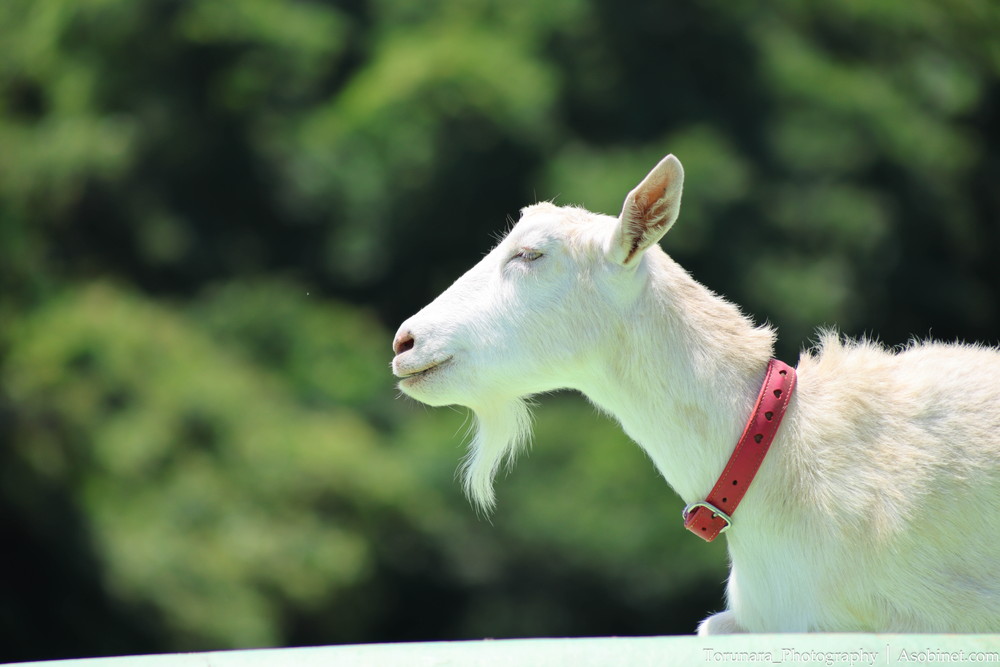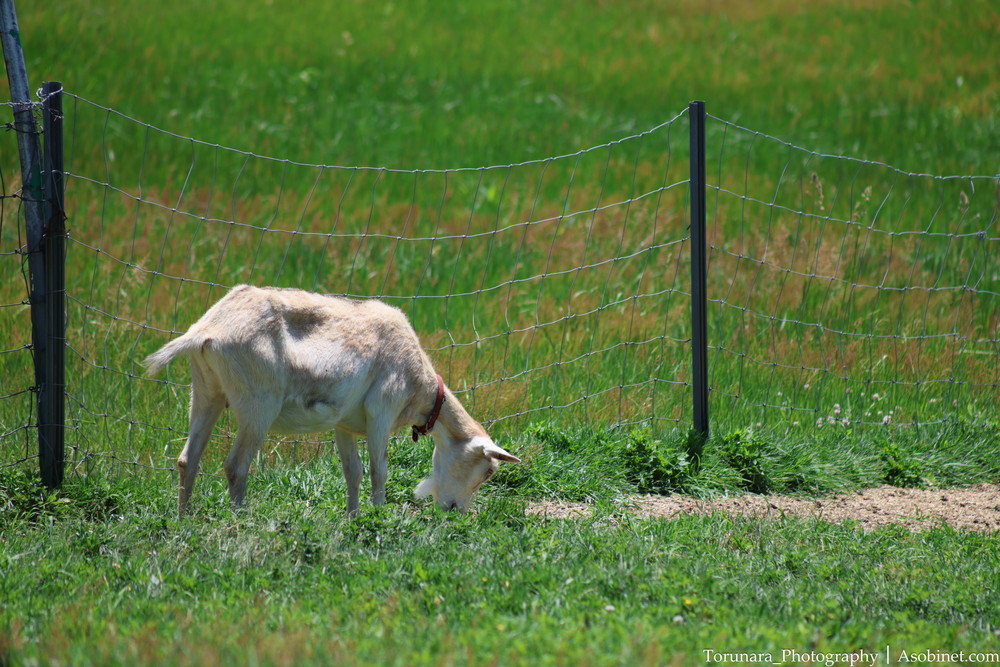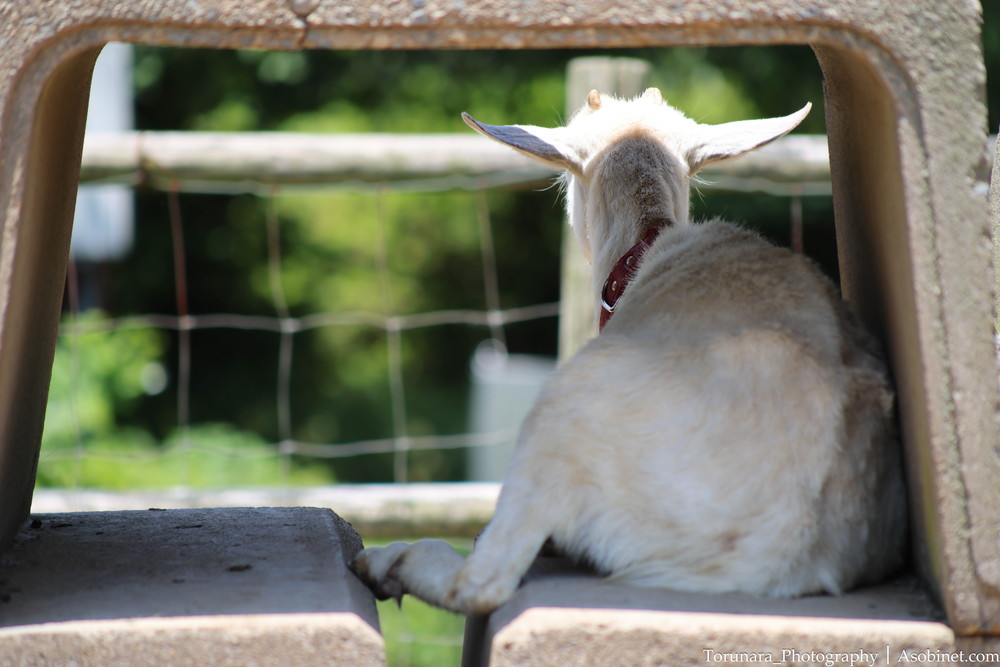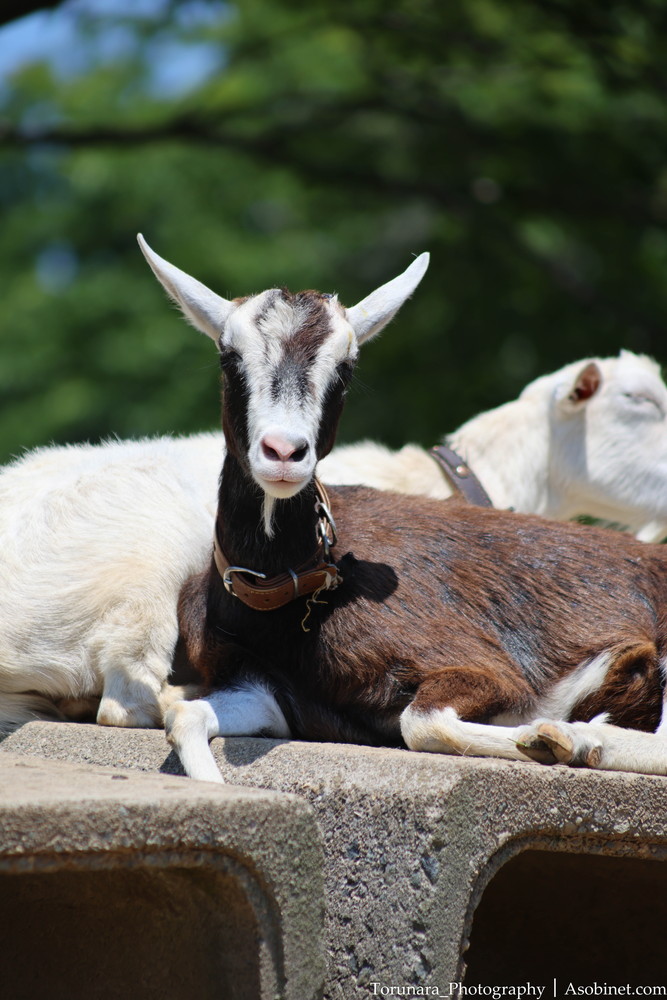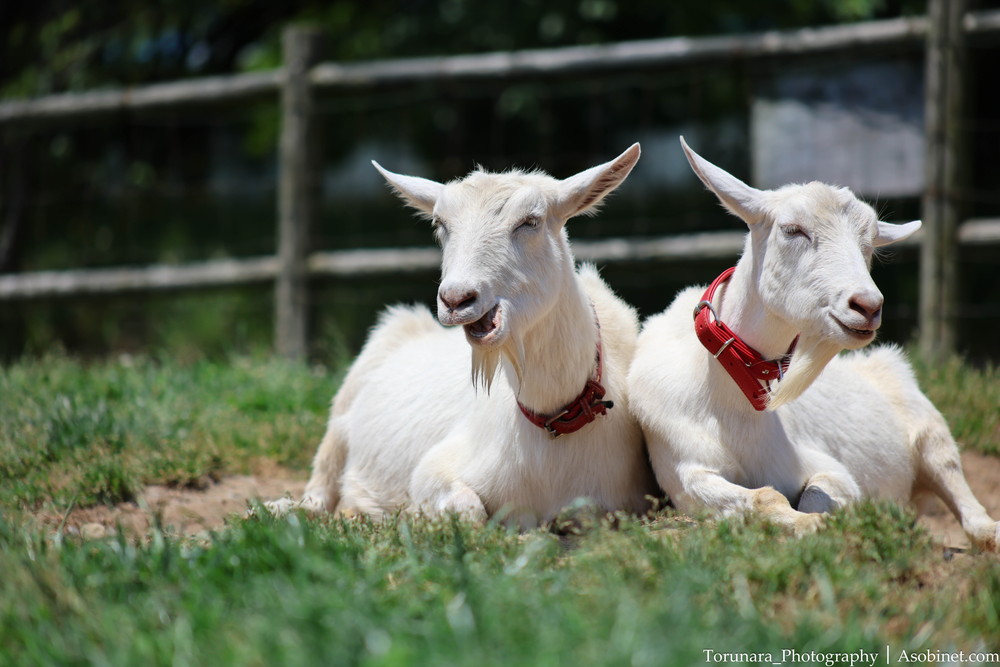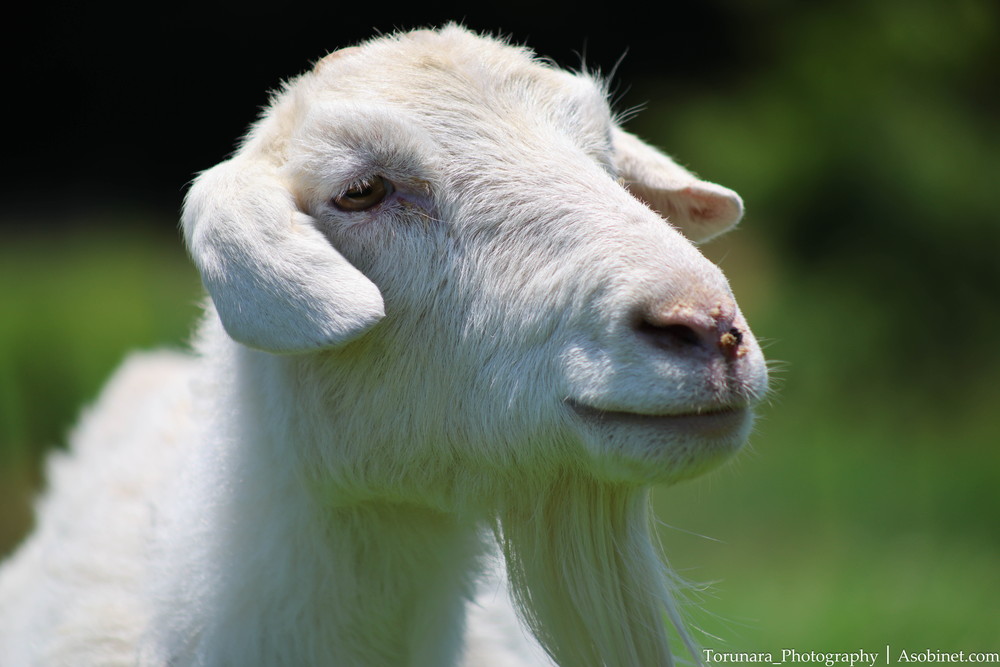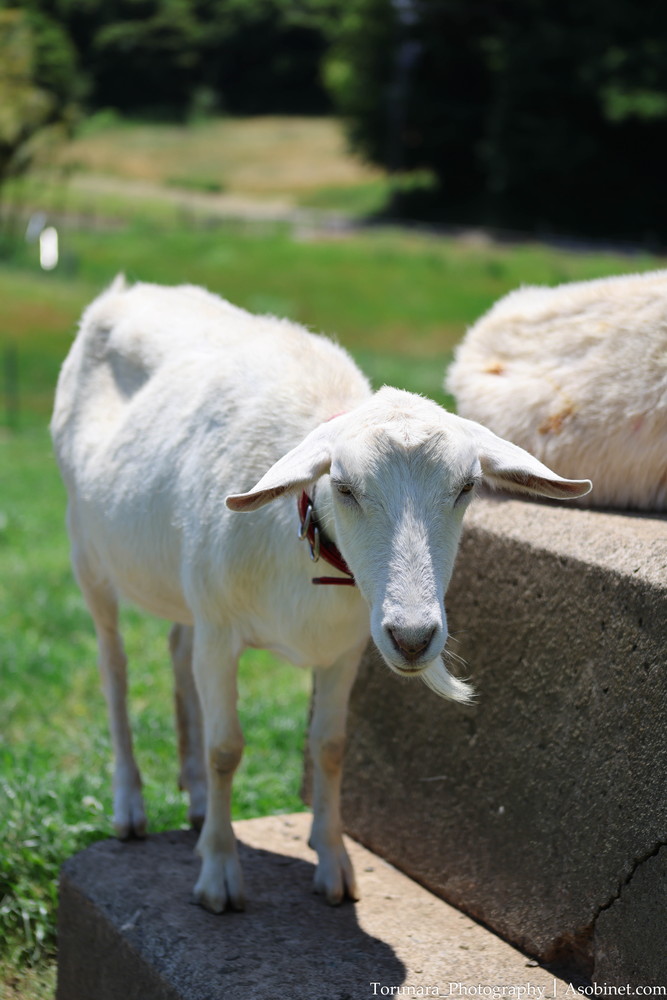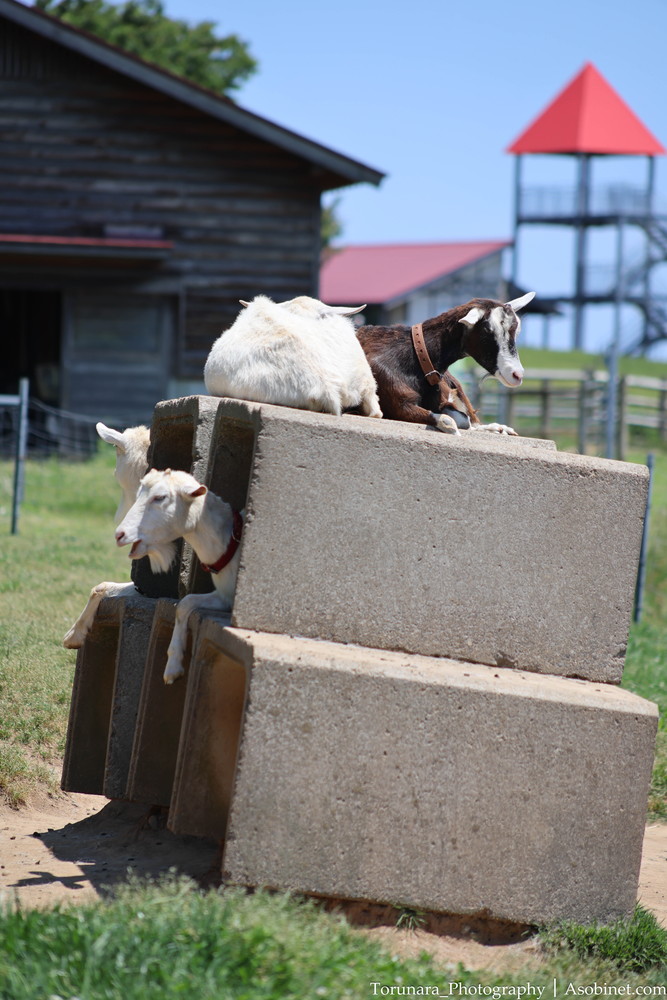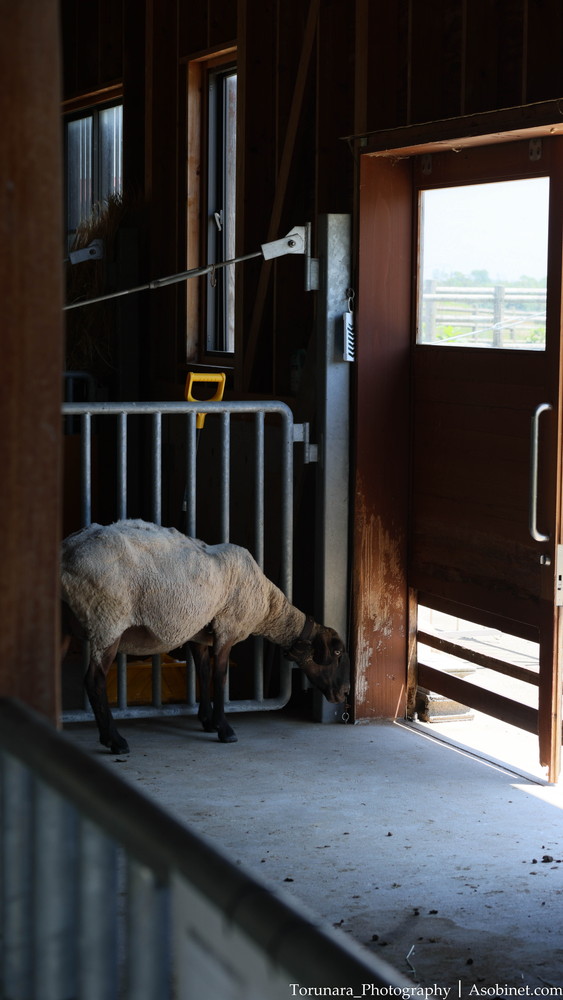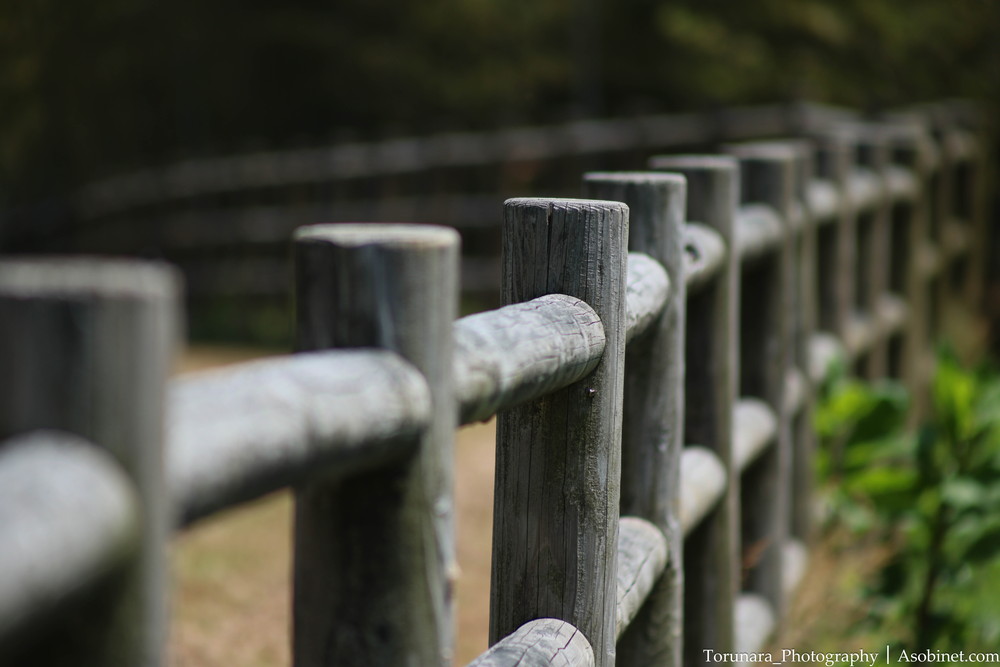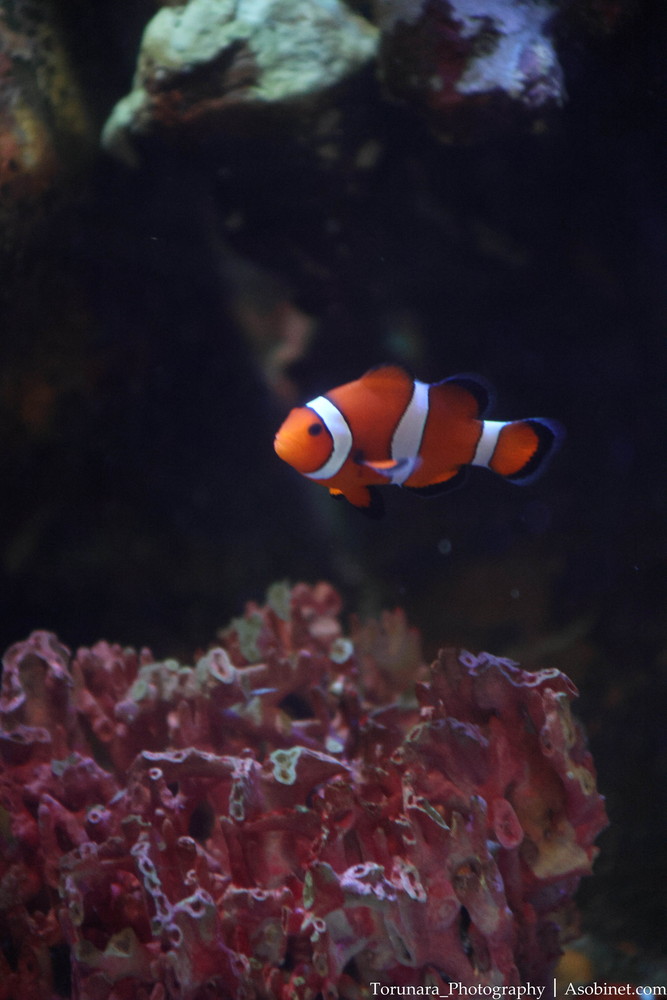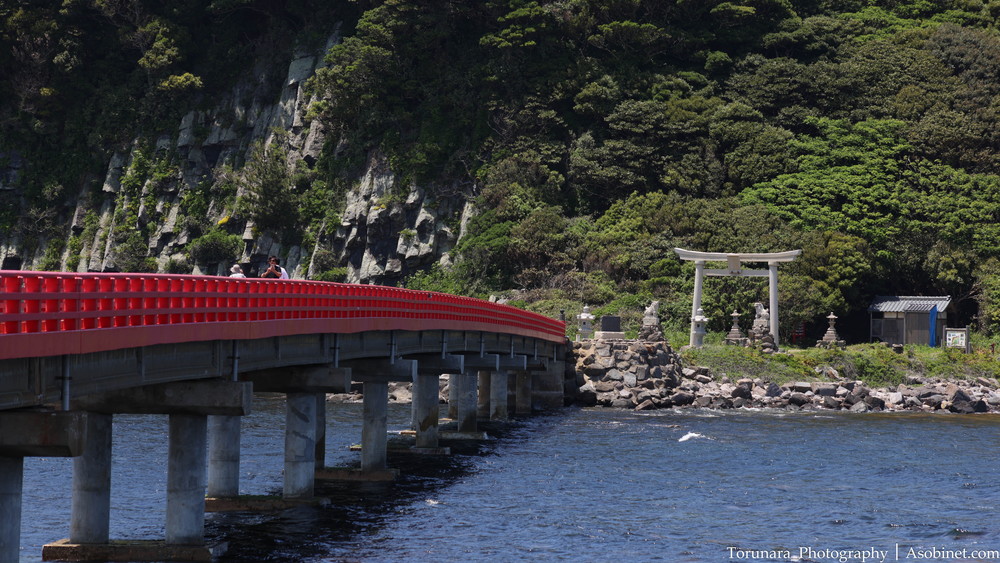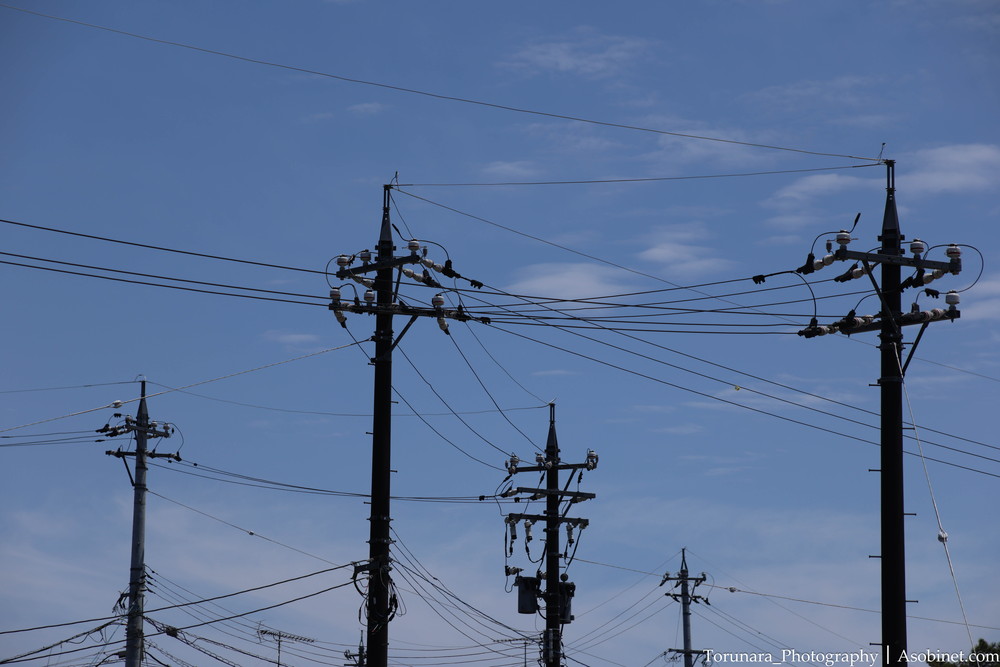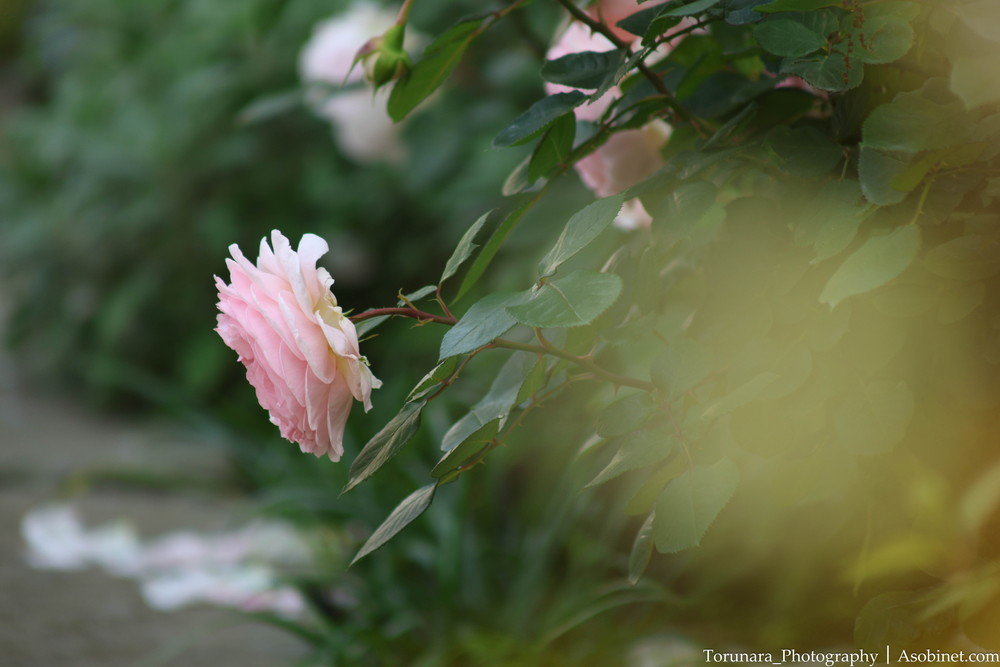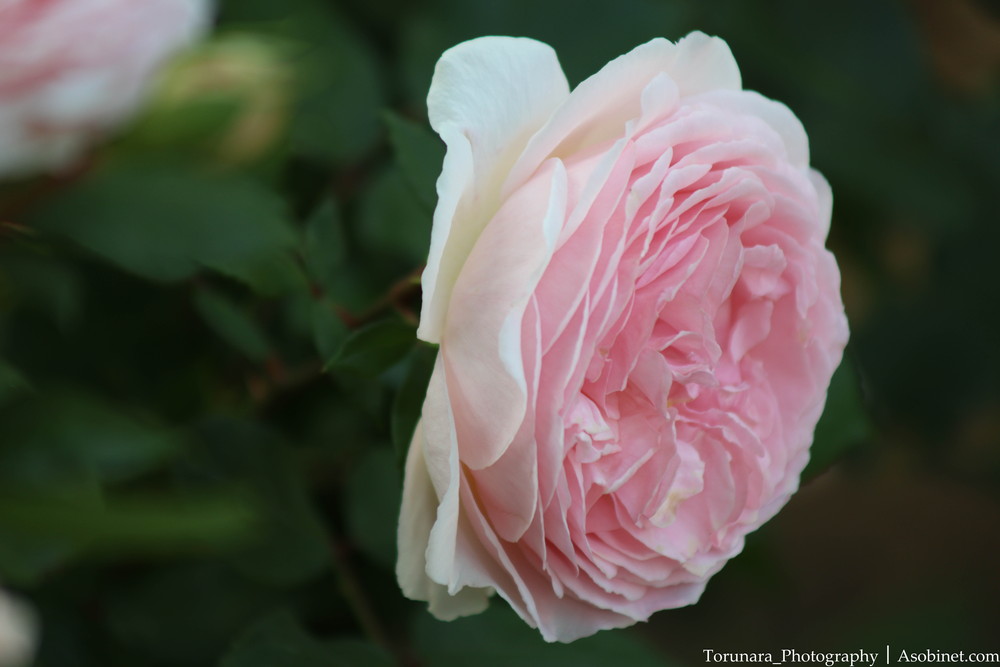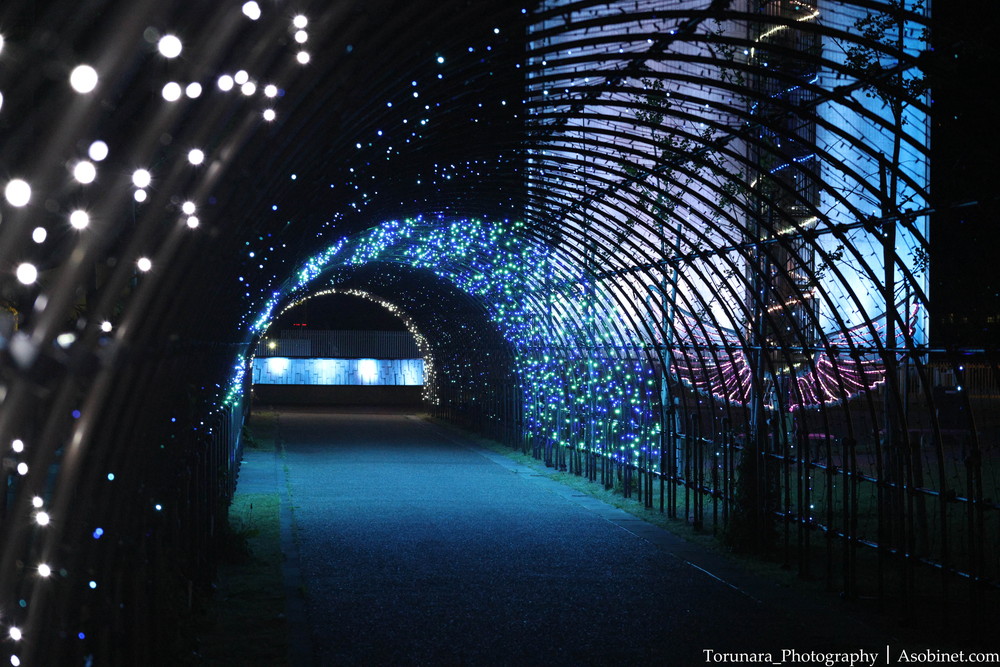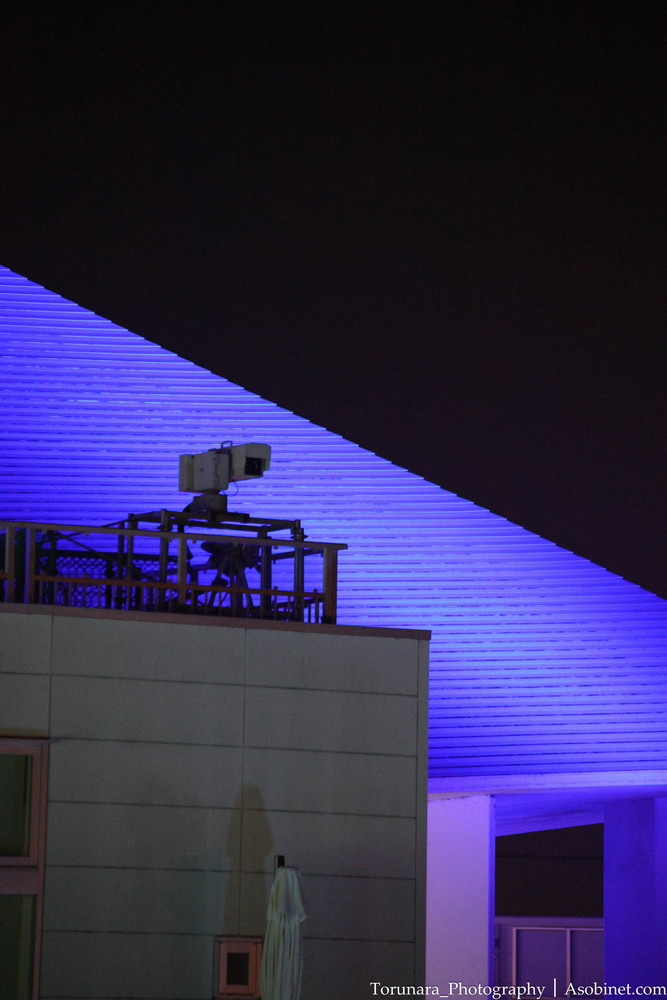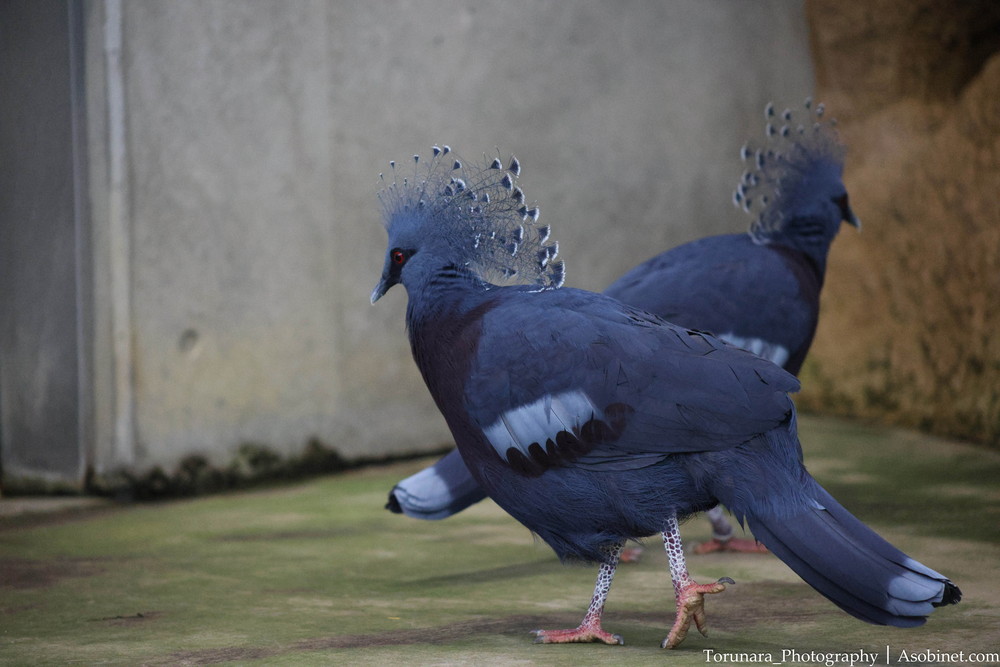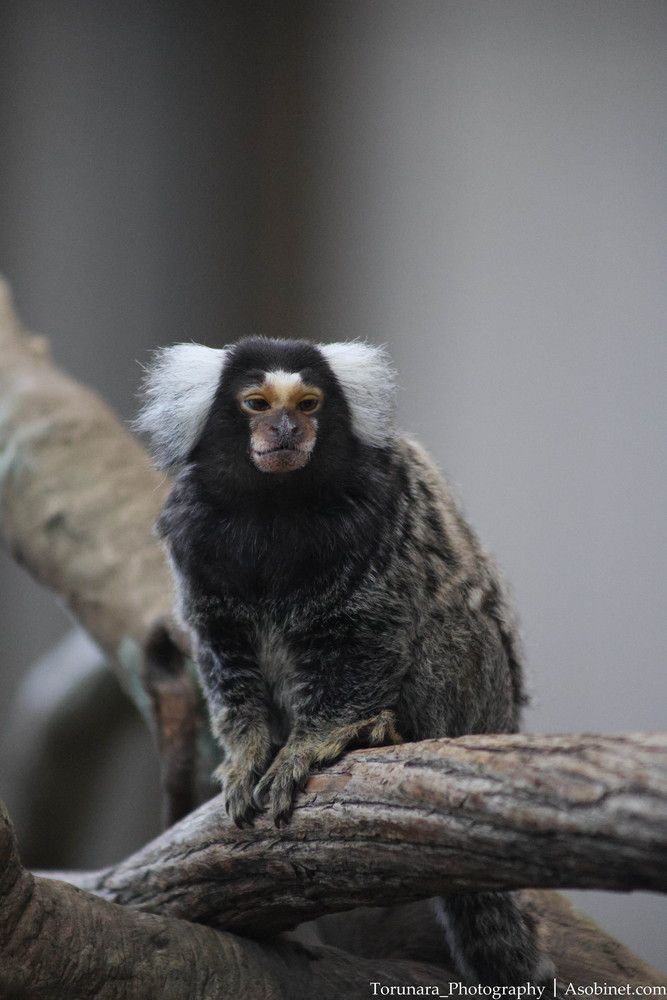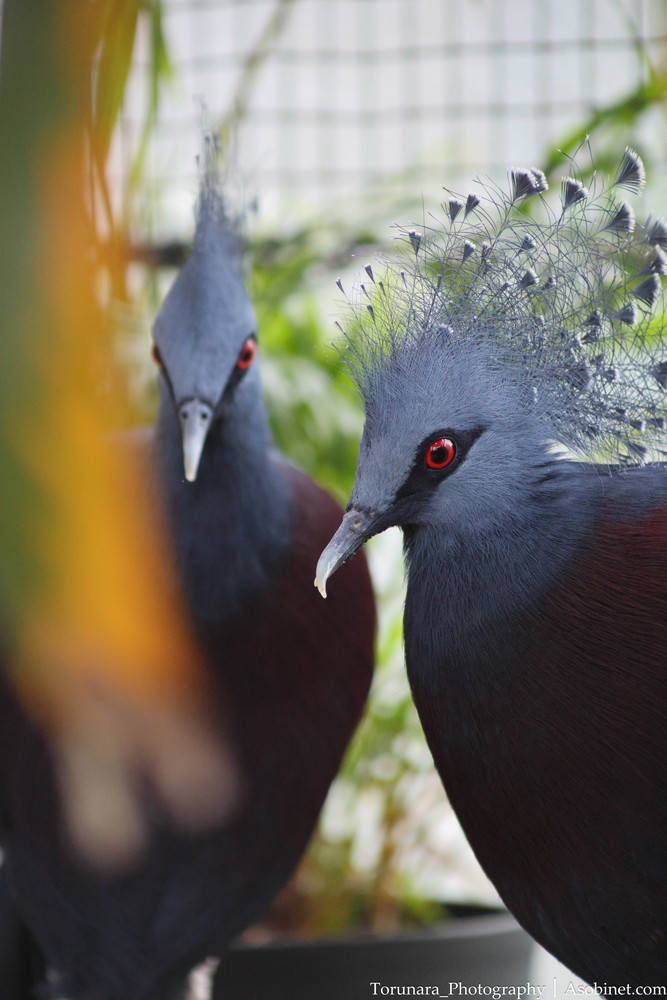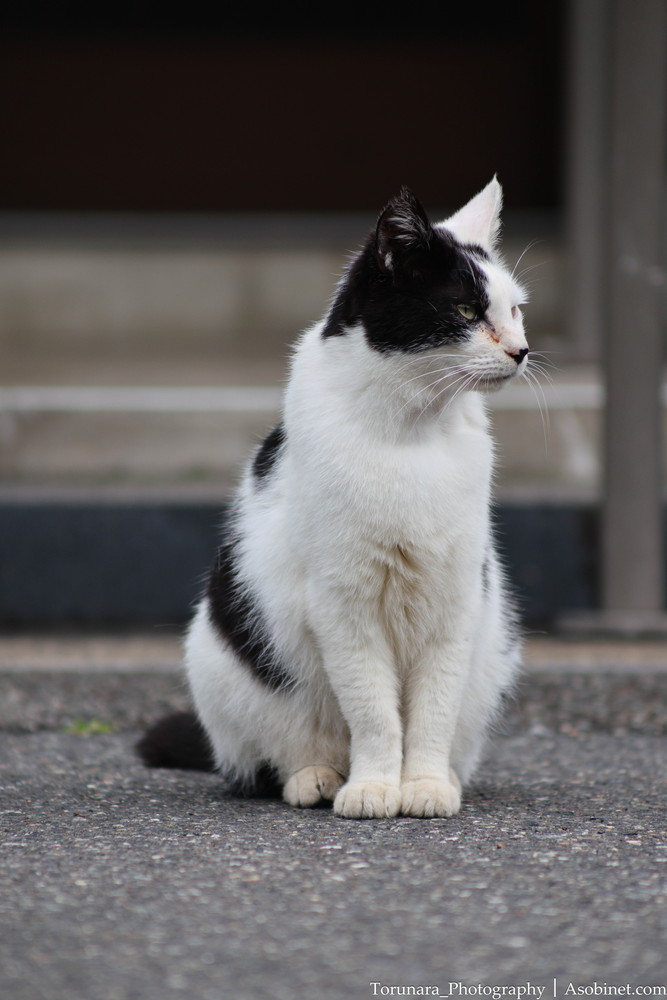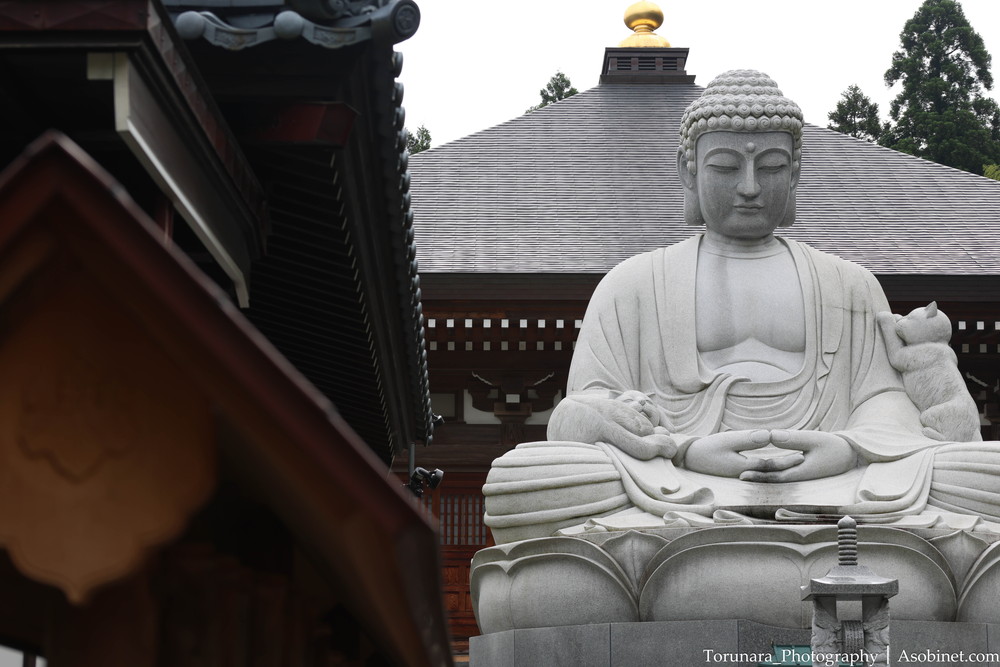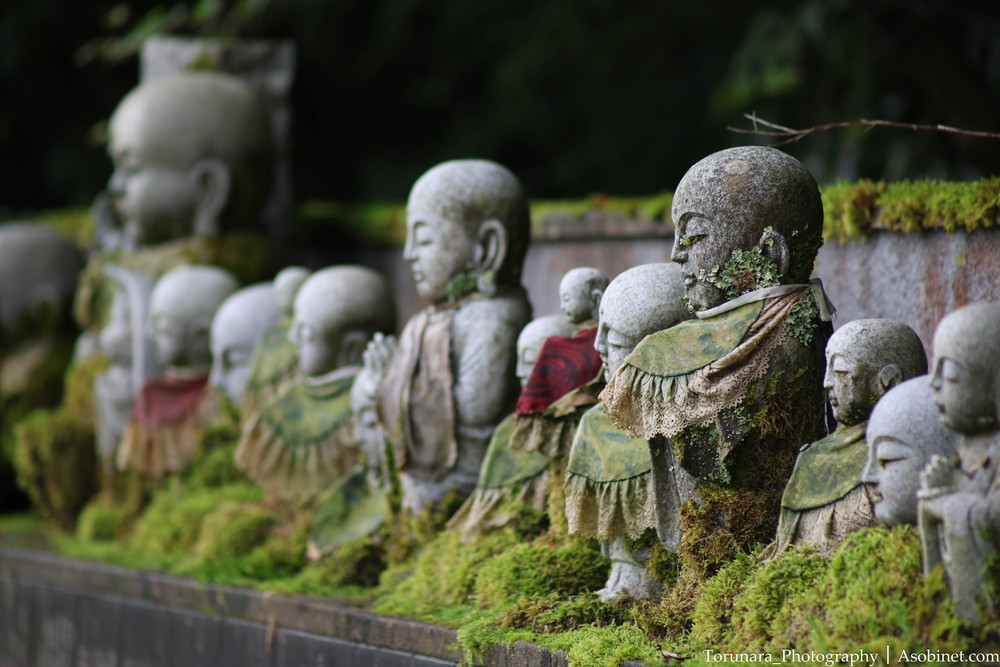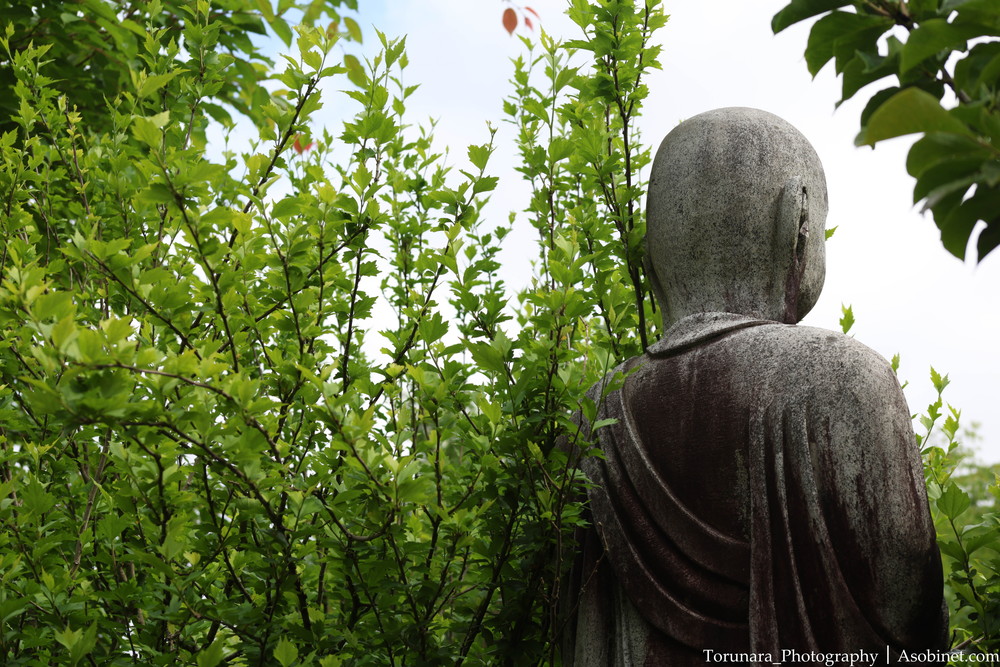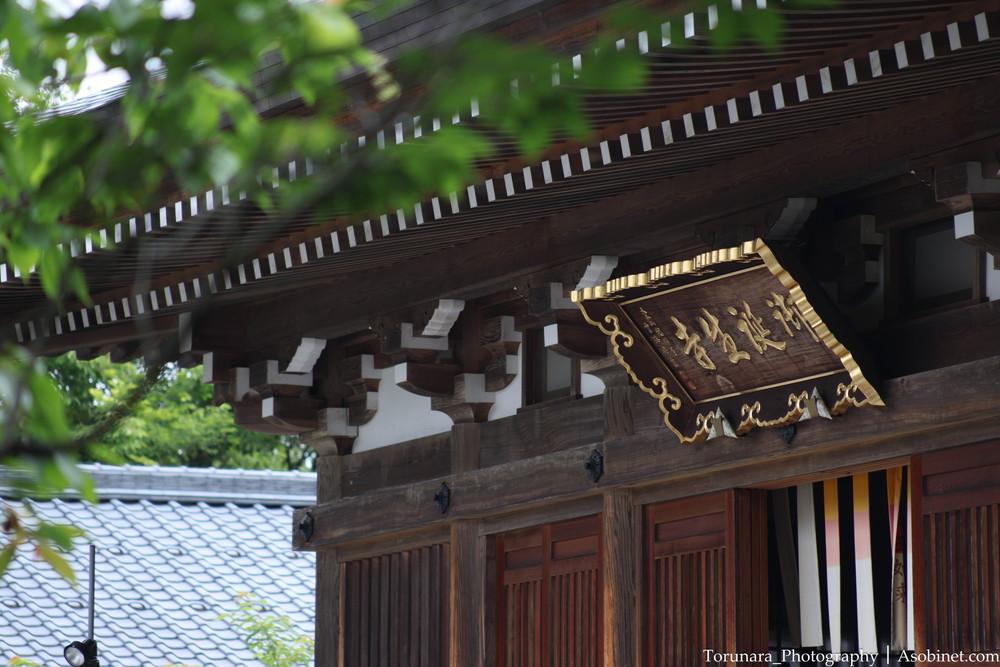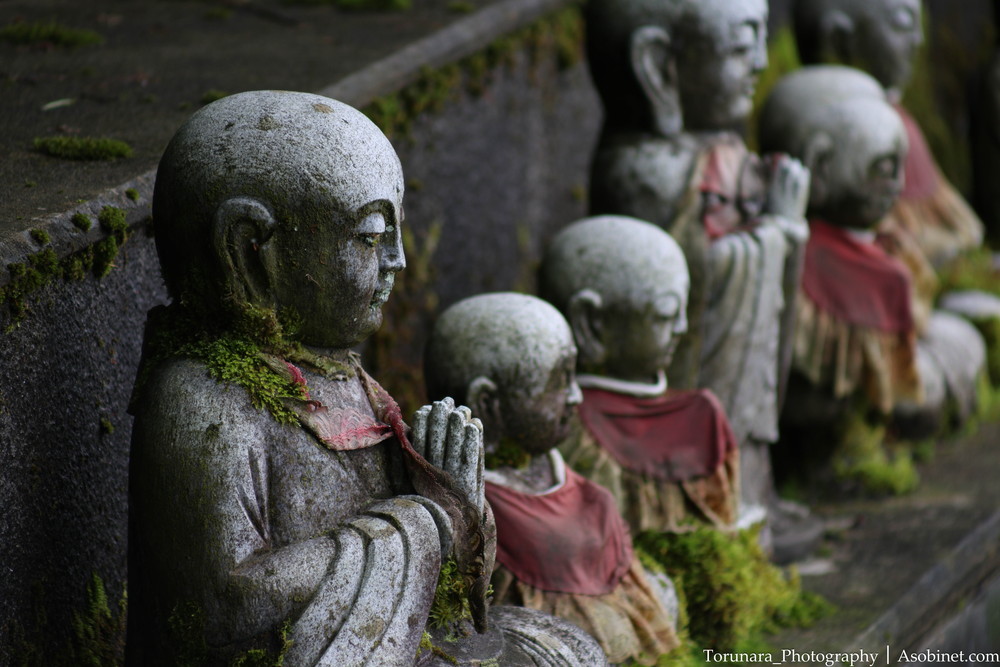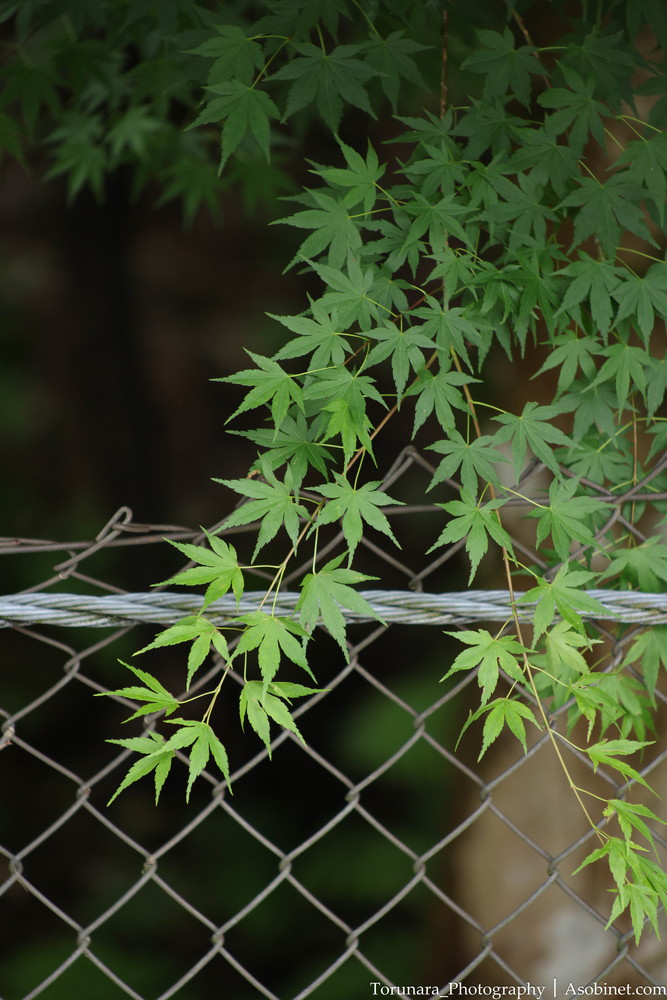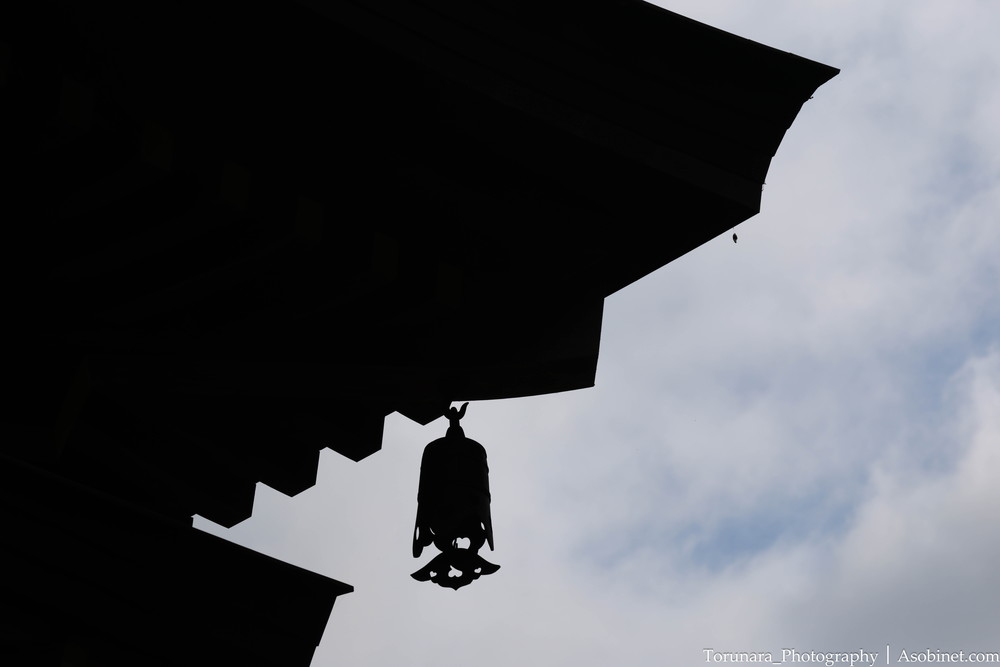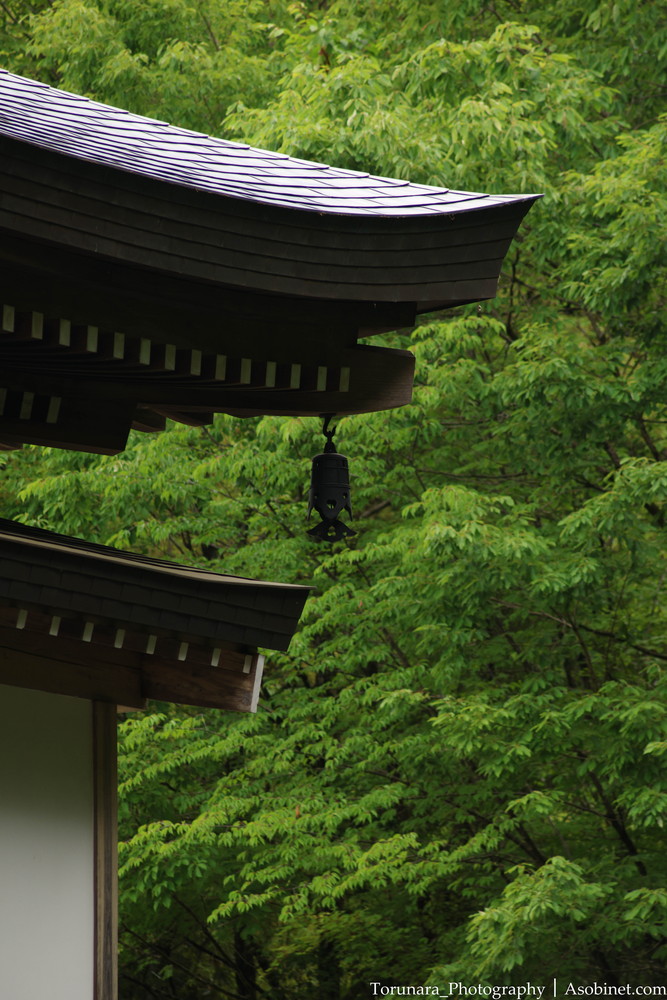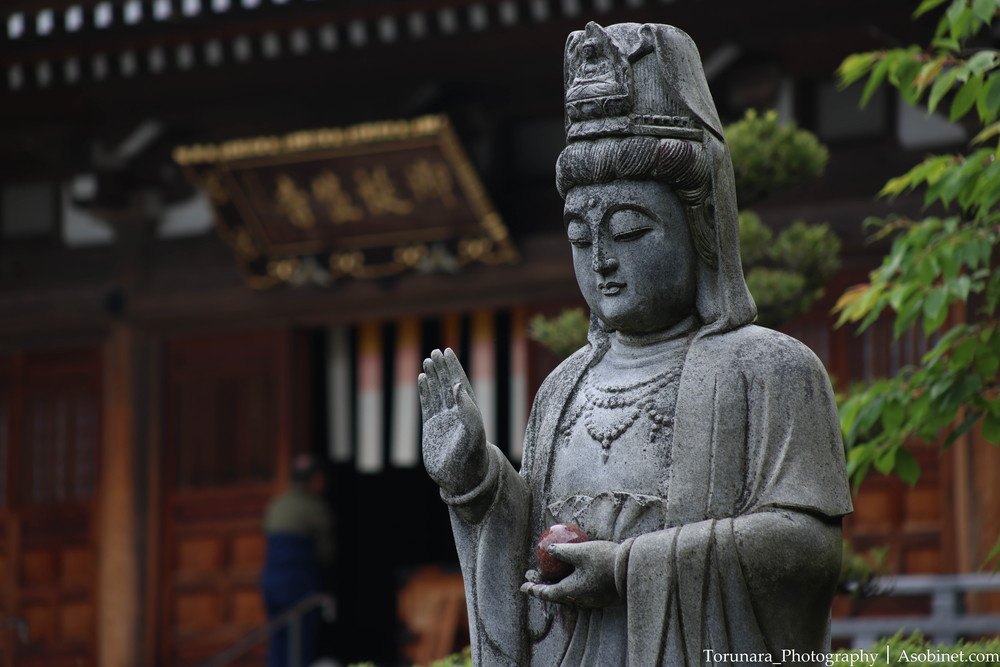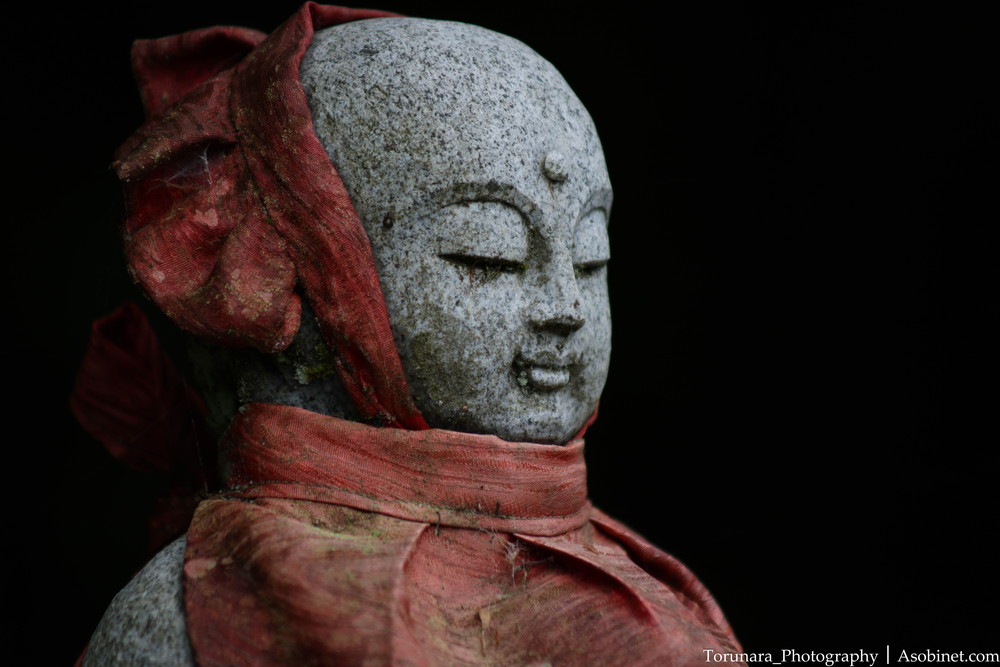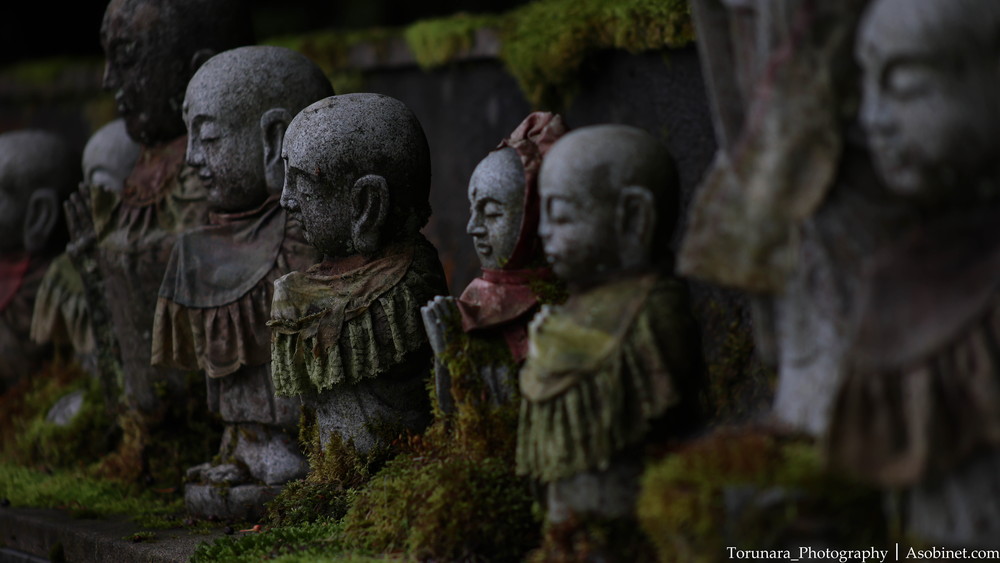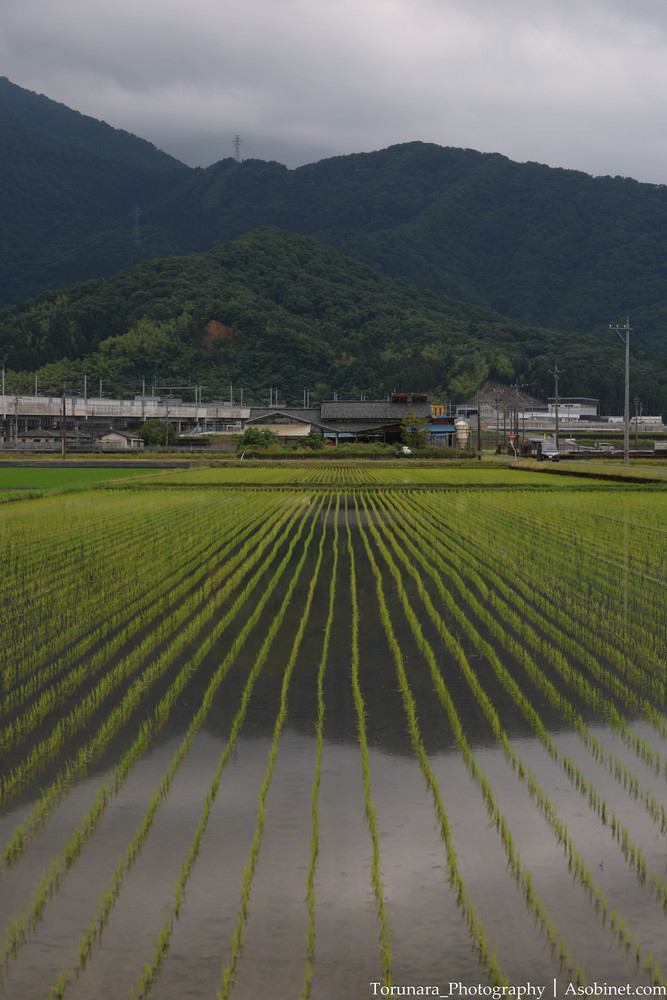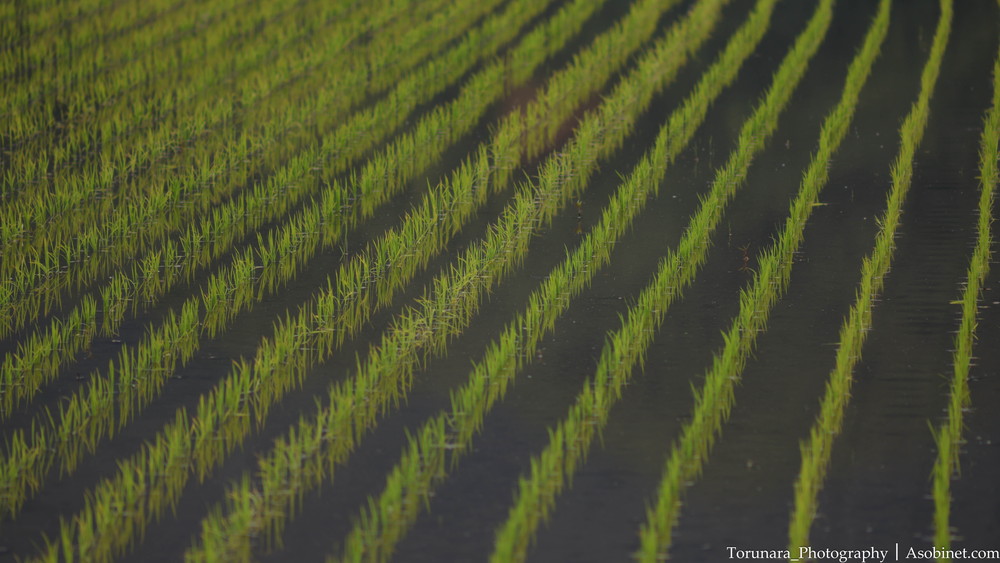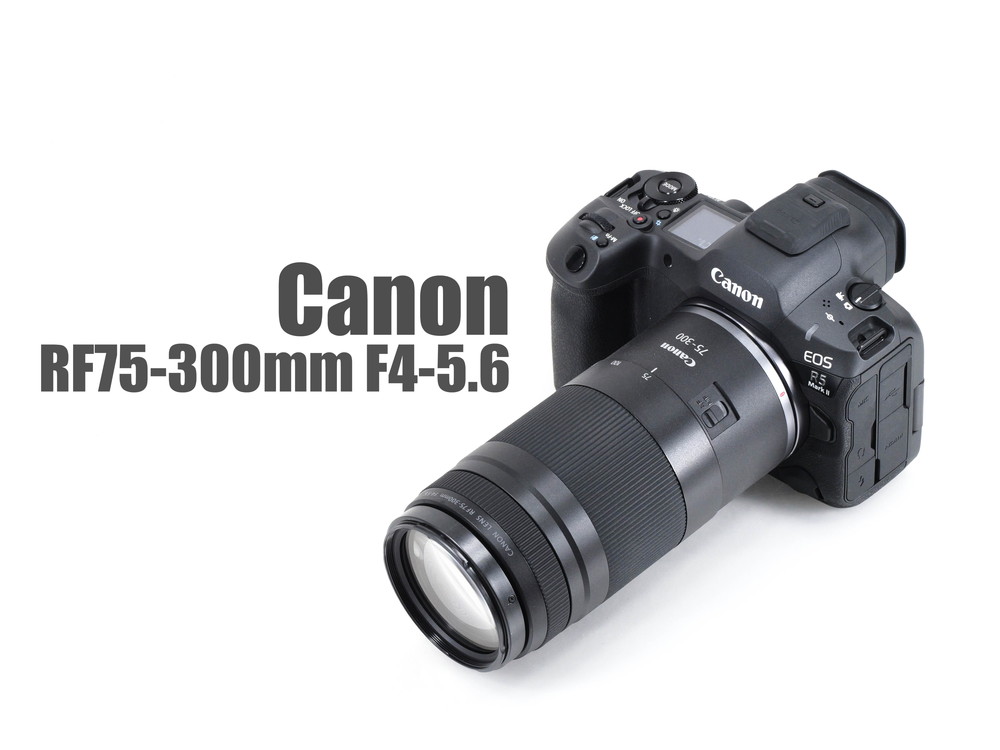This page features a review of the RF75-300mm F4-5.6.
Lens Summary

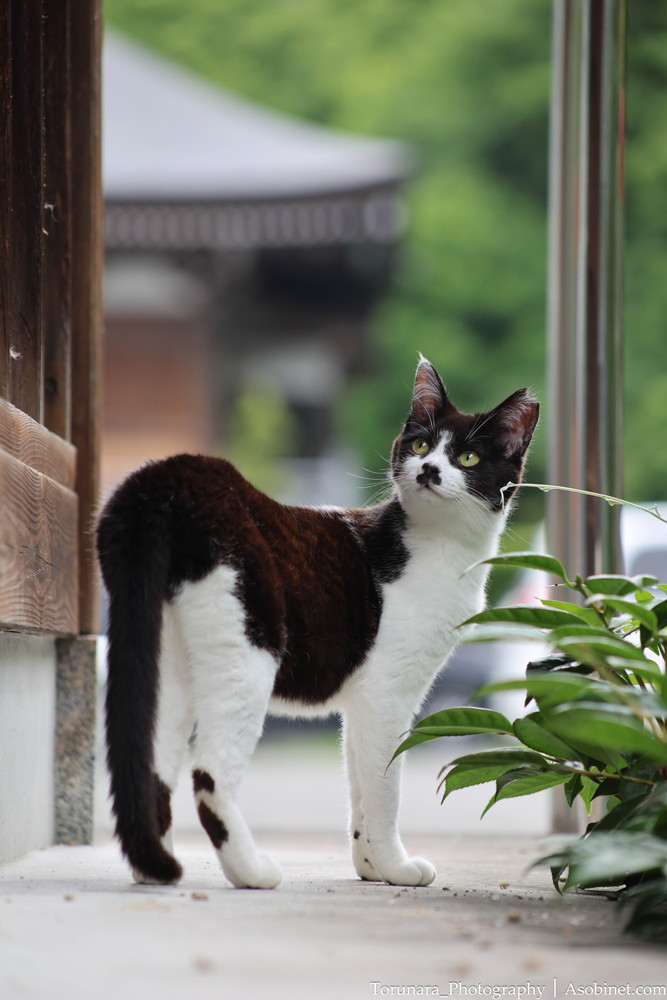
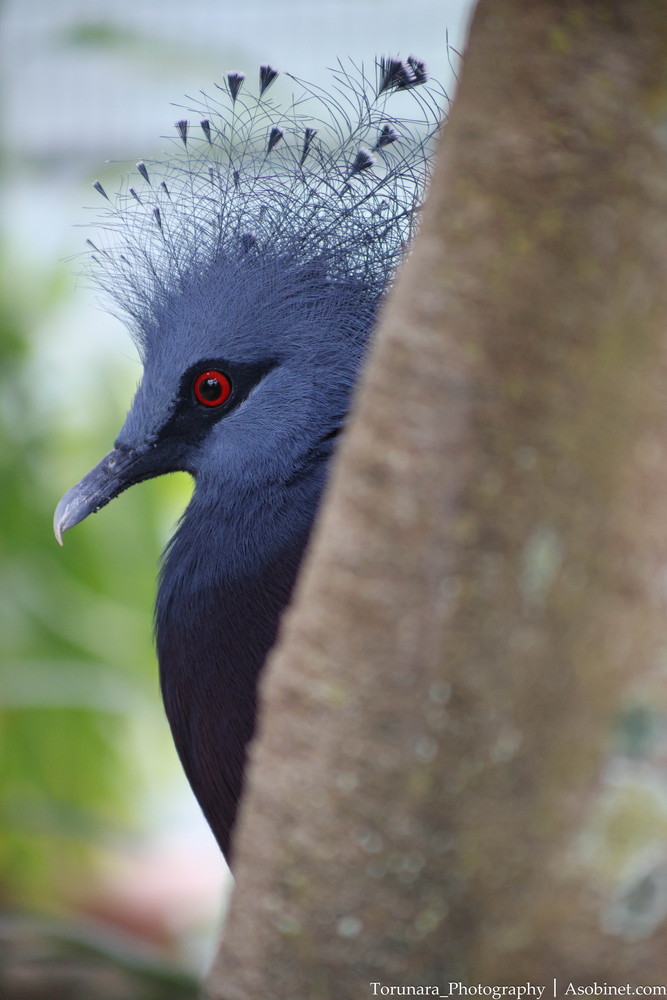


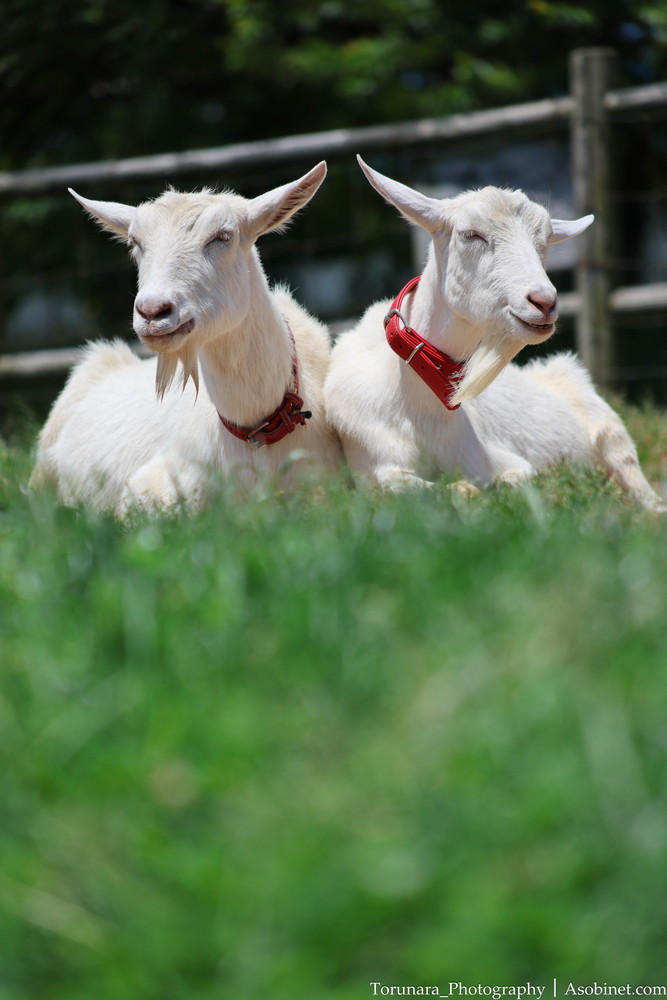
| Price | Amazingly cheap 300mm zoom |
| Size | General as 300mm zoom |
| Weight | Lightweight as 300mm zoom |
| Ease of use | Focus ring and switch must be checked |
| AF performance | DC motor drive has limitations depending on the application. |
| Resolution performance | Wide angle side and center are acceptable. |
| Bokeh | Smooth and clean |
| chromatic aberration | Overall correction required. |
| distortion | High need for correction except at wide angle side |
| coma aberration | neither good nor bad |
| Vignetting | Prominent at both ends of zoom |
| flare resistance | Worst as an RF lens |
| Overall evaluation | Welcome to the world of 300mm |
Evaluation:
In any case, the “Entry 300mm” is an exceptional deal.The main advantage is that you can use a full-size 300mm lens for 30,000 yen. That's the only advantage.Everything else is a compromise.
To be blunt, the points to note are not the optical performance but the autofocus and image stabilization. Optical performance can be improved to some extent by camera processing or development software.However, image stabilization and autofocus are beyond repair.
- No noticeable degradation in image quality at high ISO sensitivities
- The frame shakes during shooting, making it difficult to stabilize the composition
- Difficulty focusing on moving subjects, but it's something you can laugh off
If you can tolerate these issues, this might be a zoom lens worth considering.For those who want to experience a 300mm lens at an affordable price.
Welcome to the world of 300mm.
Foreword
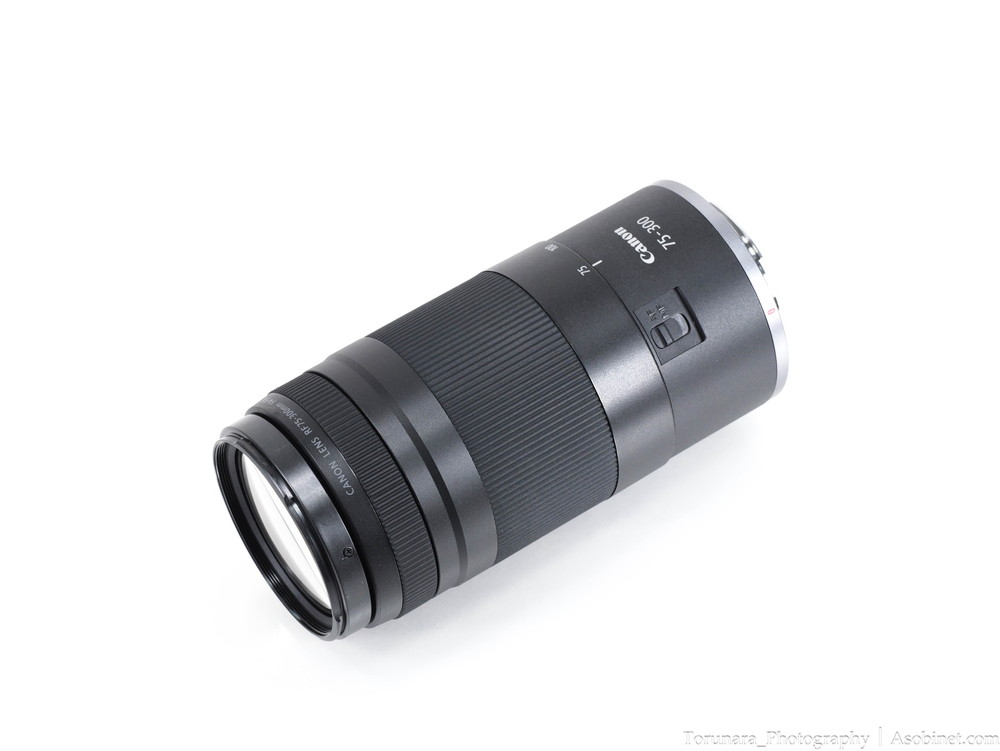
- Release Date:May 30, 2025
- Product page
- My Flickr album
- Japanese user contribution site
- B&H photo
A telephoto zoom lens for Canon's RF mount announced in 2025.
It is characterized by an unbeatable low price. However, the optical system used is the same as that of lenses for the EF mount, which appeared several decades ago. Furthermore, the focus drive system uses a “DC motor,” which is rare for RF mounts, achieving thorough cost reduction.Perhaps the most notable feature is the absence of optical image stabilization, so caution is required when using it with cameras like the EOS RP or R8, which lack in-body image stabilization.
While it is important to thoroughly understand the lens's characteristics before purchasing, the ability to acquire a full-frame telephoto zoom lens for just over 30,000 yen remains highly appealing. For the Canon RF mount, which currently lacks third-party lens options, this product is undoubtedly a valuable addition.
specifications
Compared to the RF100-400mm F5.6-8 IS USM, the minimum shooting distance is longer, but by using 300mm, it is possible to enlarge the subject up to 0.25x. The lens consists of 13 elements, which is actually more than the RF100-400mm. However, aspherical lenses and UD lenses are not used.
| lens mount | RF |
| Supported sensor size | fullframe |
| focal length | 75-300mm |
| Lens construction | 9 groups and 13 images |
| Aperture | F4-5.6 - F32-45 |
| Aperture blades | 7 aperture blades |
| Minimum focusing distance | 1.5m |
| Maximum magnification | x0.06-0.25 |
| Filter diameter | 58mm |
| image stabilisation | - |
| Teleconversion lens | - |
| Coating | Super spectra |
| Size | 71.2 x 146.1 mm |
| Weight | 507g |
| weather sealing | - |
| AF | DC |
| Aperture ring | - |
| Other controls | AF/MF |
| Accessories | - |
Lens prices and how to buy them
This is an exceptional price for a genuine 300mm-class telephoto zoom lens. While some compromises may be necessary, it is still an interesting option. It's better to have it than not.
- B&H Photo
- Adorama
- Amazon(US)
- Amazon(JP)
- MapCamera(JP)
- YodobashiCamera(JP)
- KitamuraCamera(JP)
- BigCamera(JP)
- Rakuten(JP)
Lens Review
Appearance and operability
Boxes and accessories
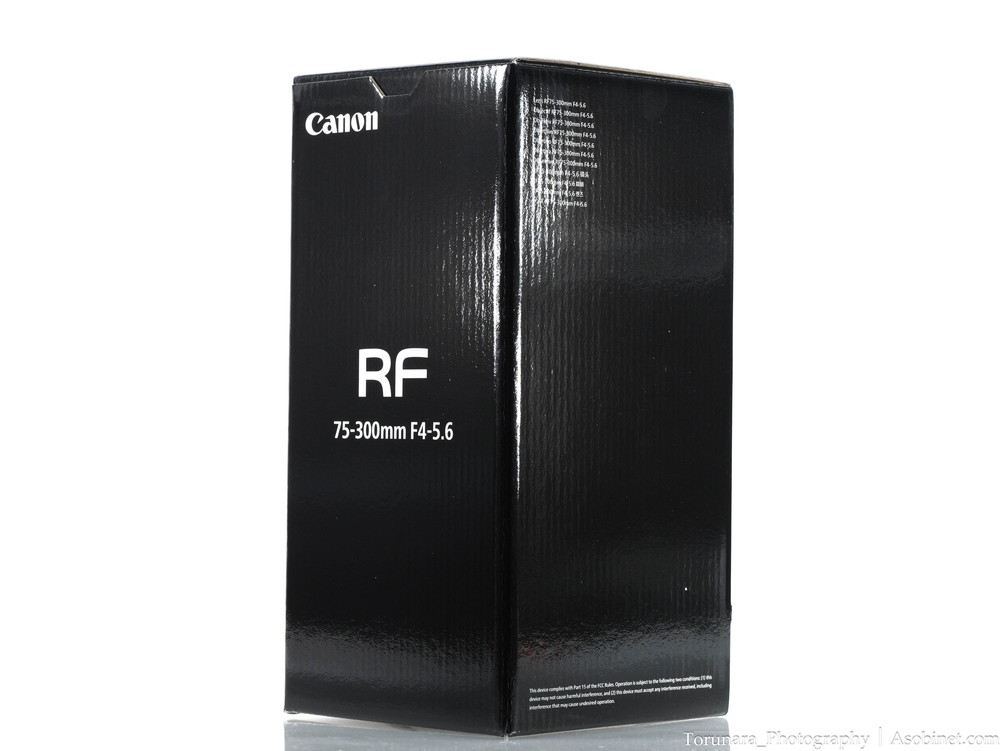
The box has a simple design with Canon's signature black color.
Like the EOS R5 Mark II, the packaging materials have been changed to be more environmentally friendly, and plastic packaging materials have been eliminated.
In addition to the lens itself, the only other items included are the front and rear lens caps.
As is typical for non-L series lenses, the lens hood is sold separately.
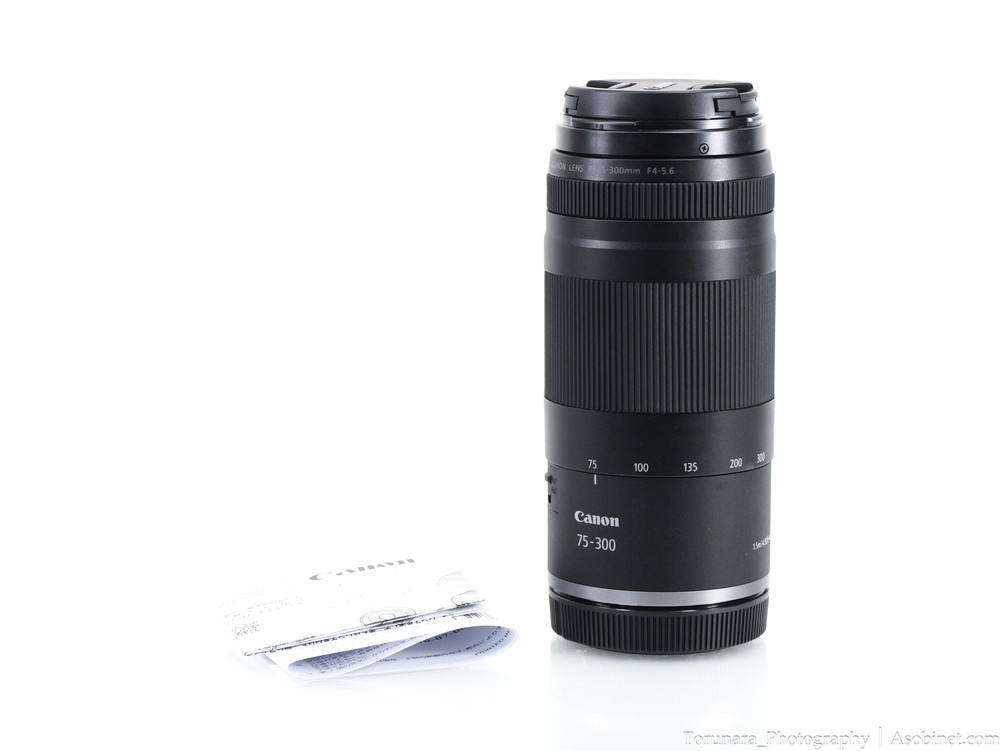
Appearance
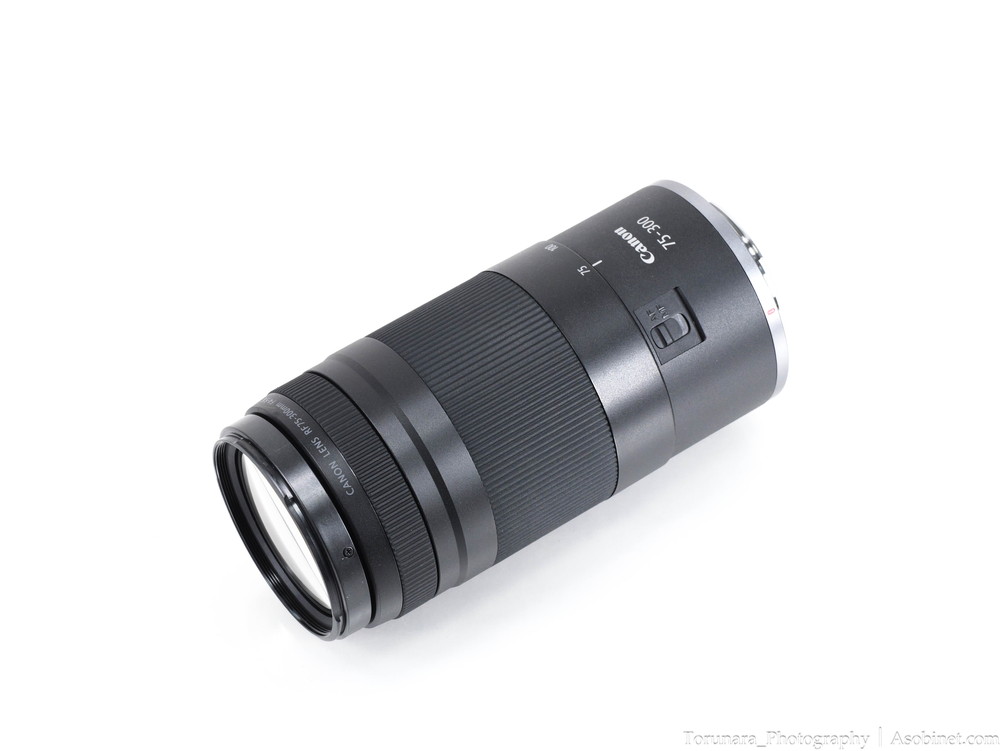
As is typical of RF lenses, the exterior is made of plastic and painted gray. Compared to the black-toned L series lenses, the color is more gray. Except for the color difference, the texture is comparable to the L series and does not look inferior. The zoom ring is made of rubber as usual, and the focus ring is made of plastic with a knurled finish.
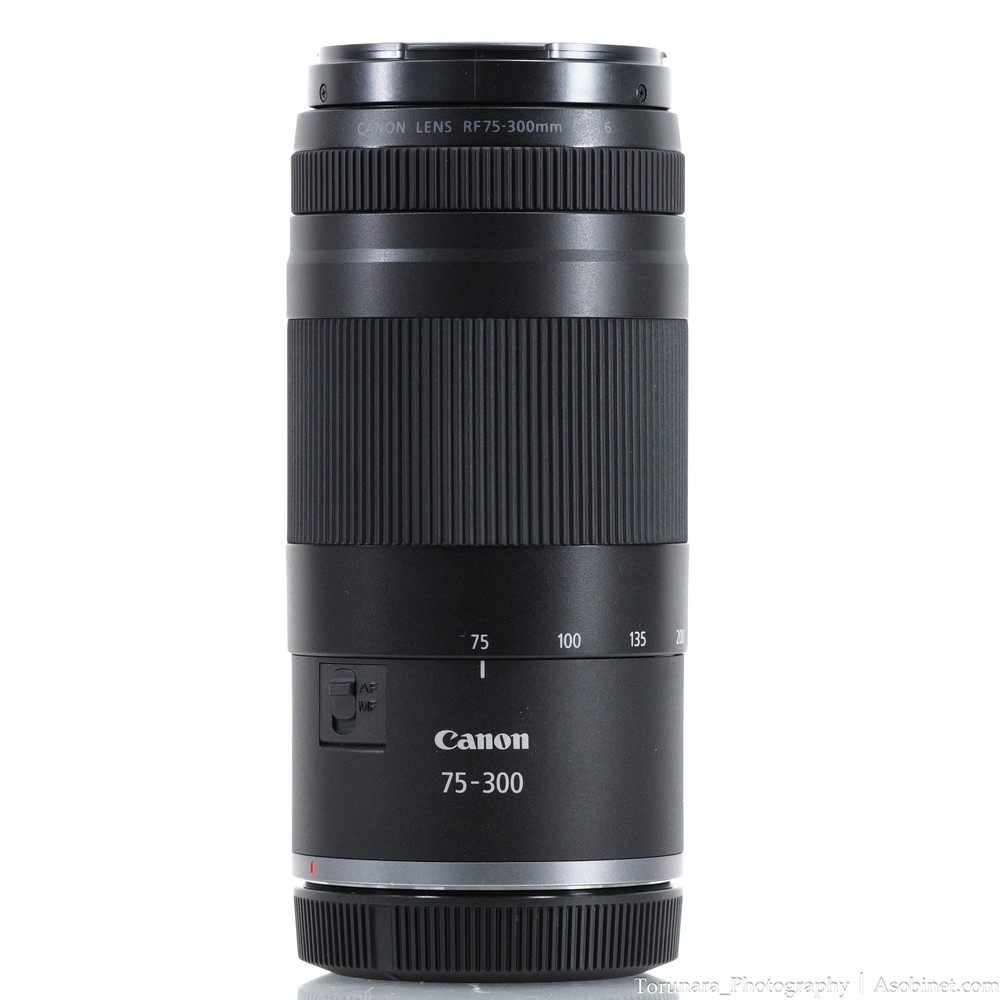
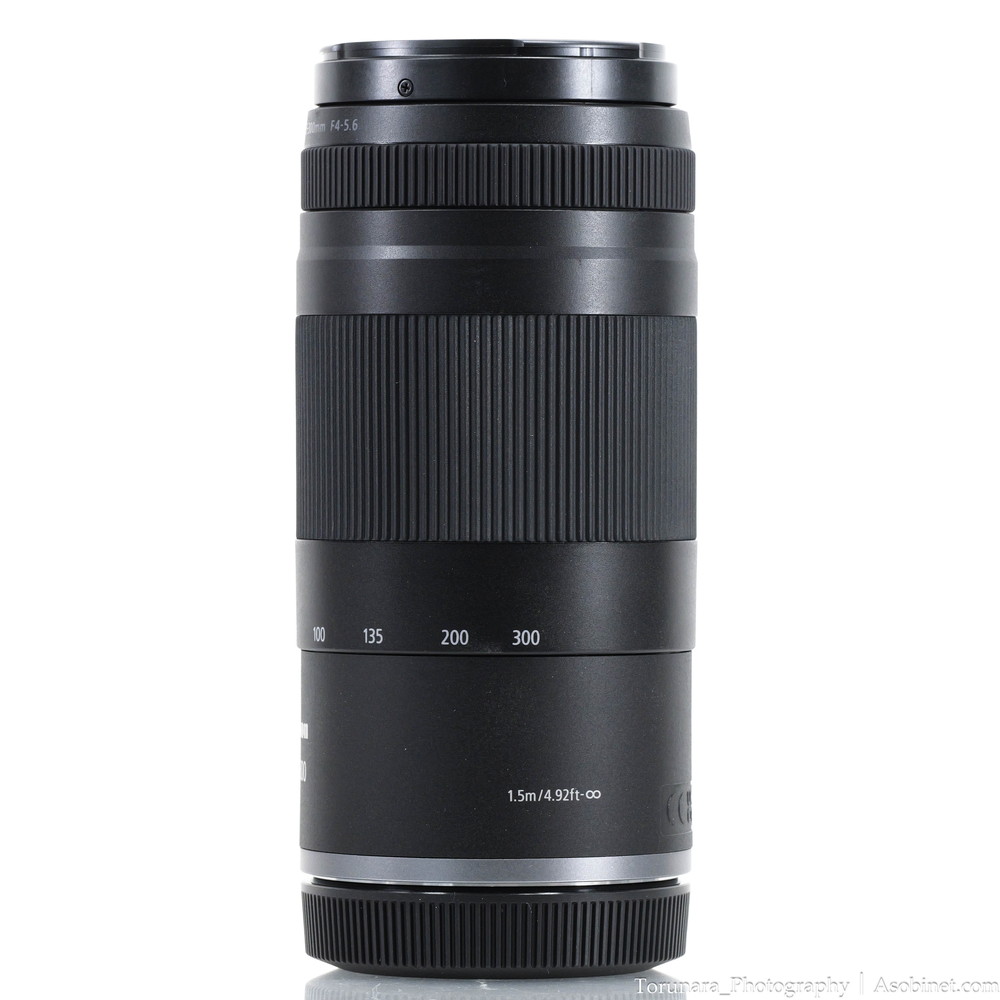
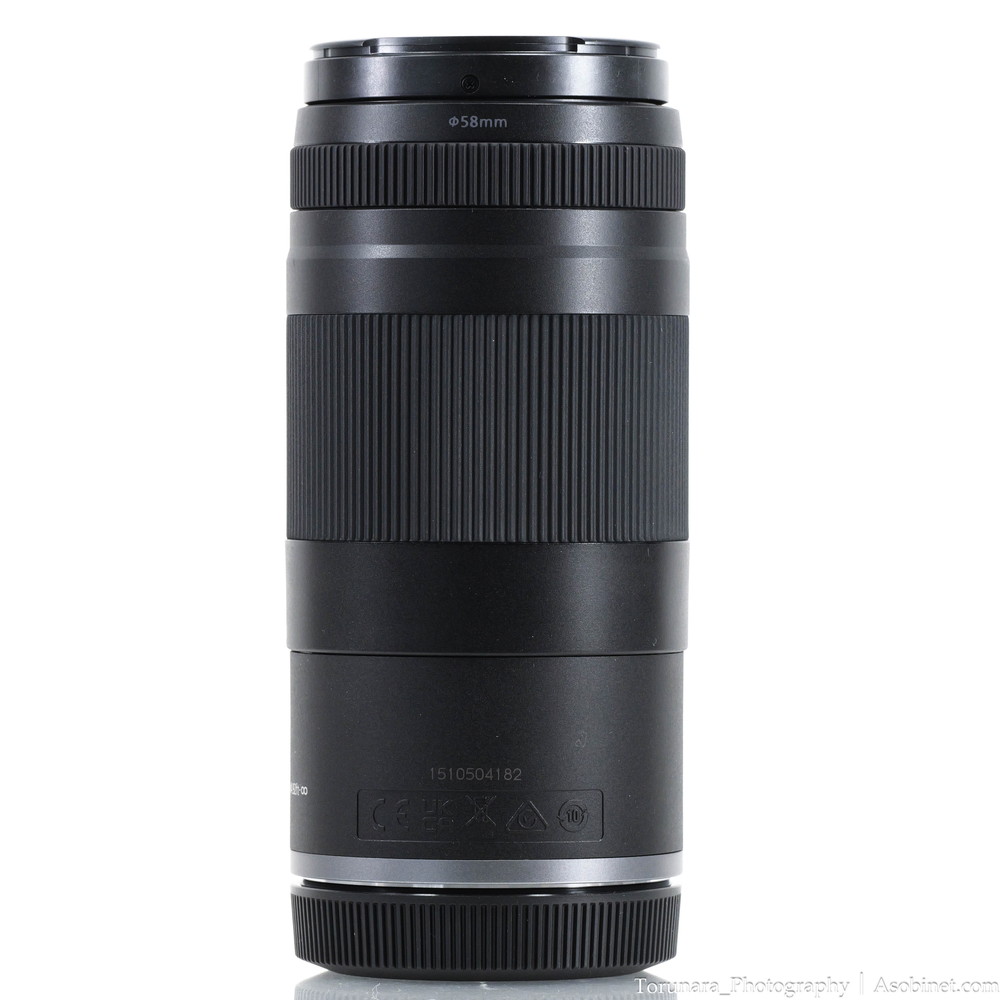
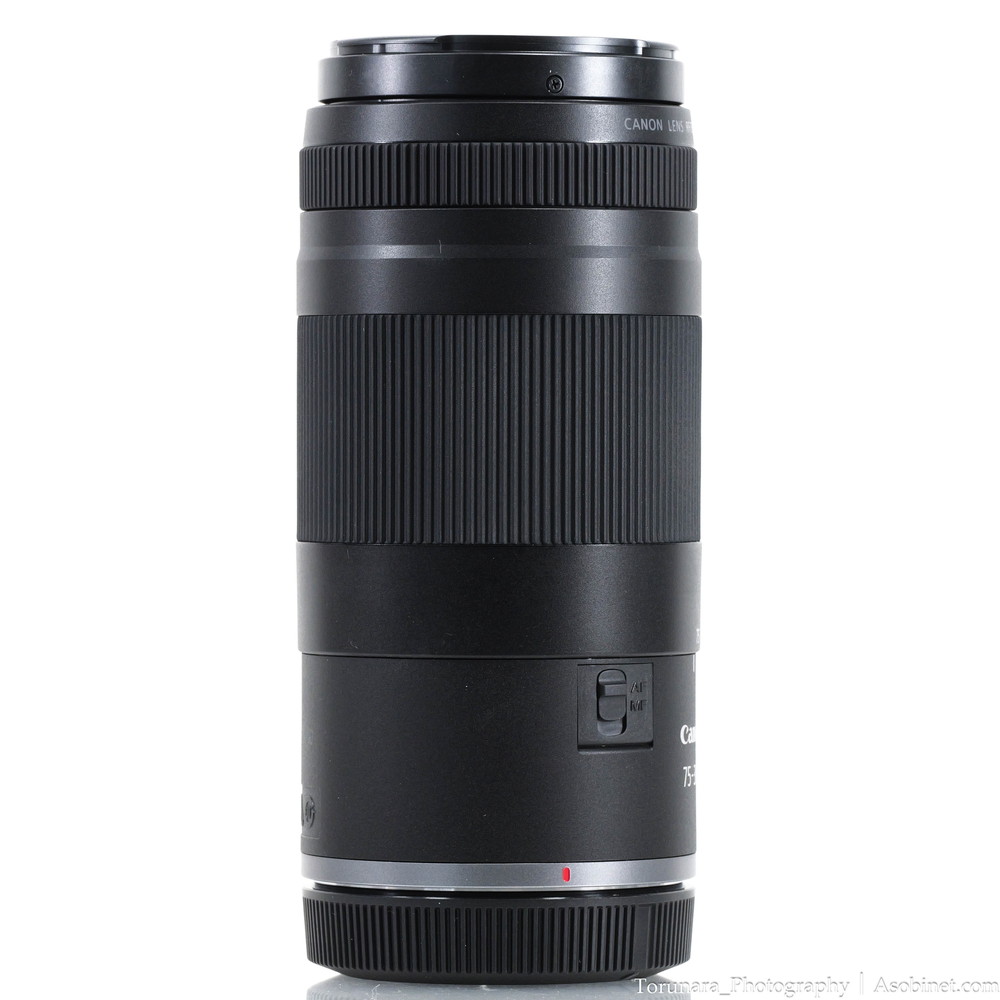
Perhaps because it does not have optical image stabilization, the lens barrel is slim and almost the same diameter as the mount. The exterior is very simple, with only the Canon logo as decoration. The serial number is printed on the lens barrel.
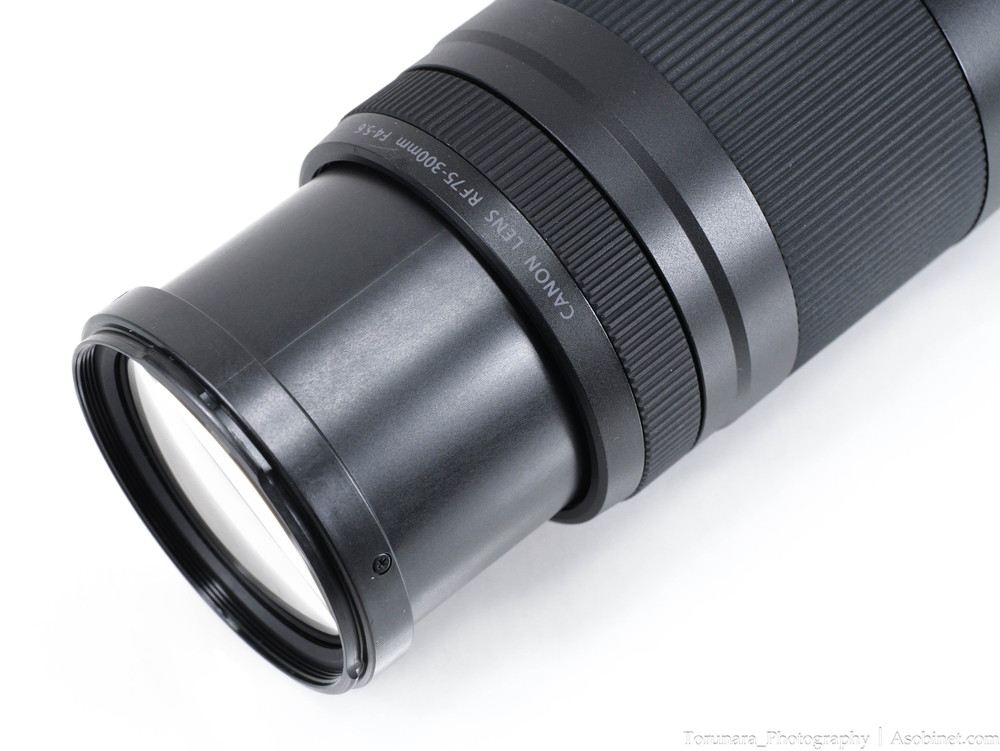
The inner tube, which extends when zooming, is also made of plastic.Although it is not as sturdy as the metal inner tube, it does not rattle.
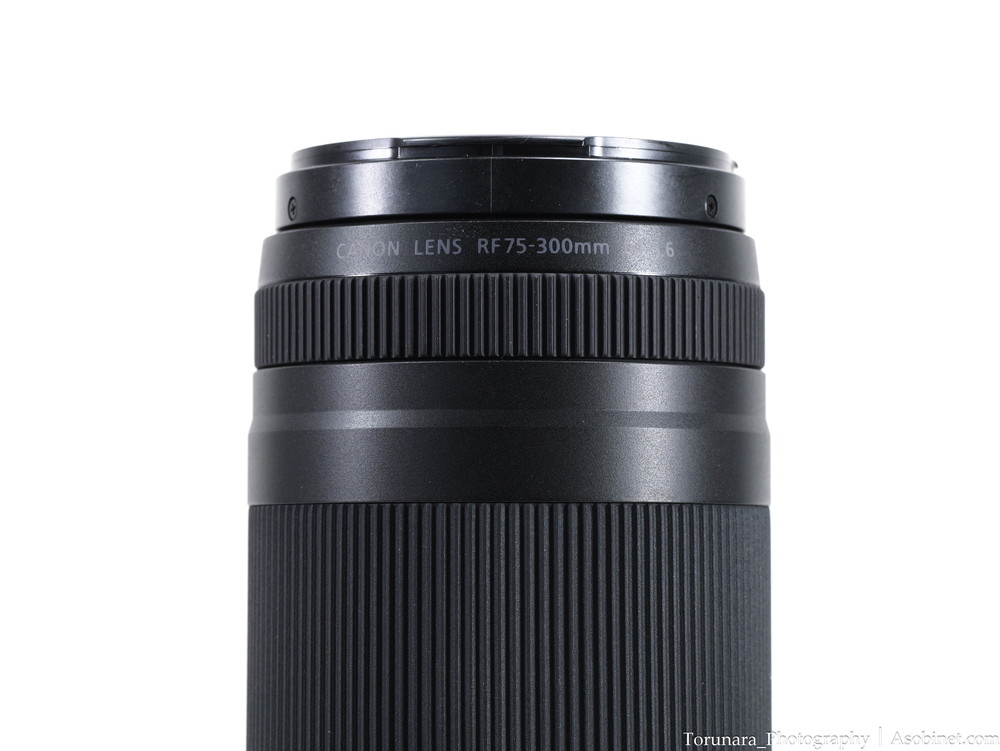

Surprisingly, the lens uses an advance focusing system, which is rare among recent zoom lenses.Focusing causes the front lens to move back and forth.The filter and lens hood extend and retract while rotating, so be careful not to grab them by hand.
The inner barrel, which is extended by focusing, is automatically retracted when the power is turned off.(In the case of the default setting)
Hands-on
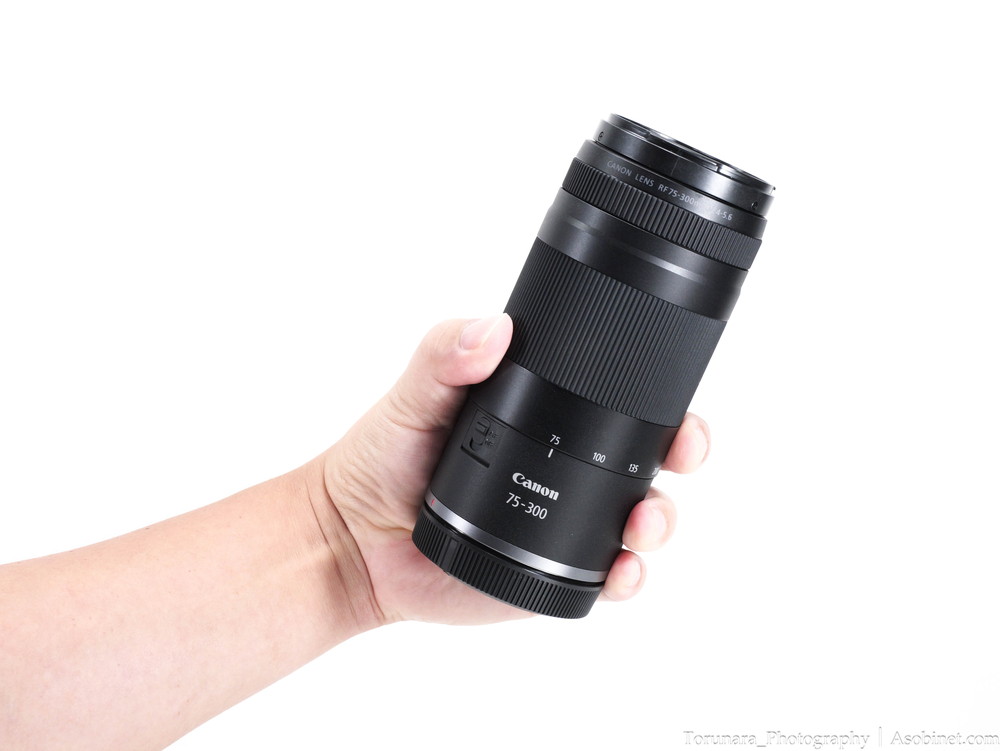
The lightest 300mm zoom lens for mirrorless cameras weighs approximately 507 g. It is slim and light for a full-size mirrorless 300mm lens, and is not difficult to store.
Front and back
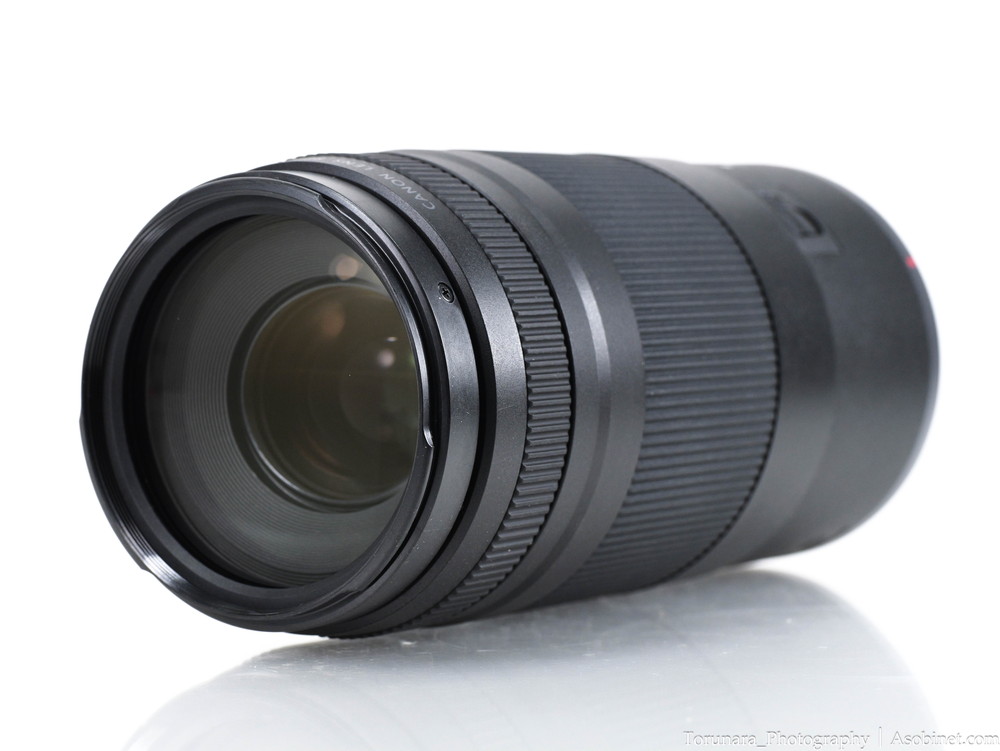
Suits filter diameter is as small as 58mm.The C-PL is difficult to use because the filter surface also rotates when focusing.Also, if you rotate the filter to control the C-PL, you may accidentally control the focus.
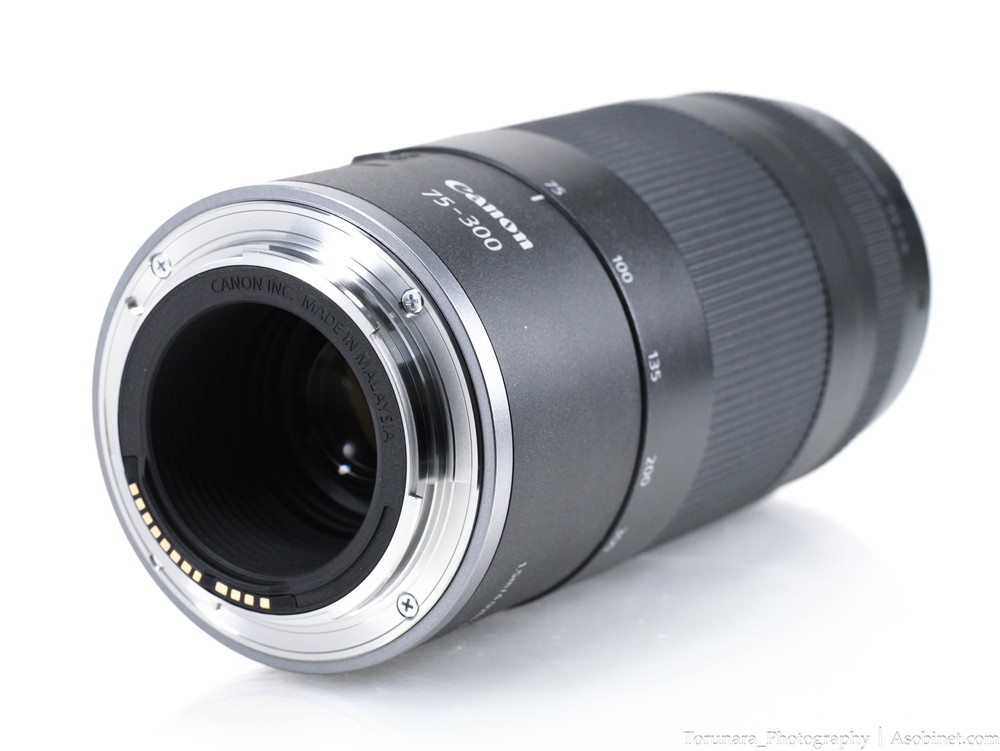
The metal lens mount is secured to the body with four screws.The mount surface is marked "Made in Malaysia.As the lens was originally designed for SLR cameras, the back focus is long.The rearmost lens is hidden inside the lens barrel.
Focus ring
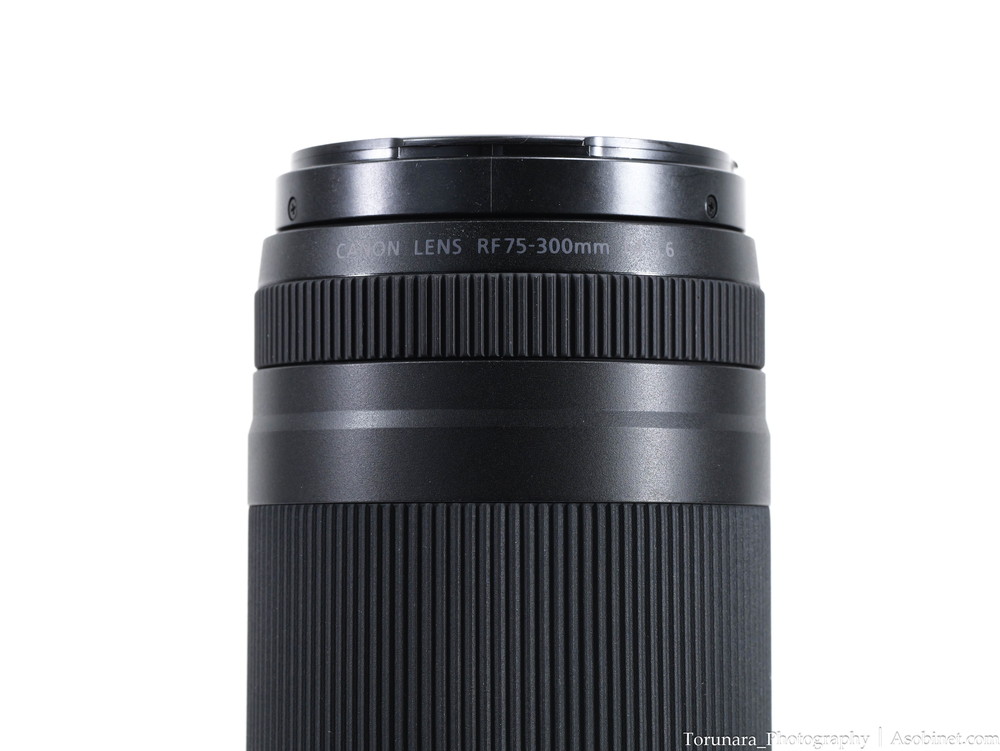
A thin plastic focus ring is mounted on the tip of the lens, a rare mechanical ring for an RF lens, which enables focus operation even when the power is off.However, since there is no shooting distance indicator, it is difficult to focus with the power off.
In AF mode, the DC motor is directly connected to the lens, and operating the focus ring rotates the DC motor as well.To avoid the risk of damage, the camera should be switched to MF mode when operating the focus ring.
The stroke of the focus ring is about 90°, which is the same throughout the entire zoom range.It is quick to operate, but you may find the stroke too short for detailed focusing.
Zoom Ring

It has a wide zoom ring that can operate from 75mm to 300mm.The stroke over the entire range is a little more than 90°, allowing for quick changes in focal length.Rotation operation is neither too heavy nor too light.It rotates smoothly during operation, but not enough to maintain an even zoom speed in video recording.
There is no switch to lock the zoom ring.
Switch
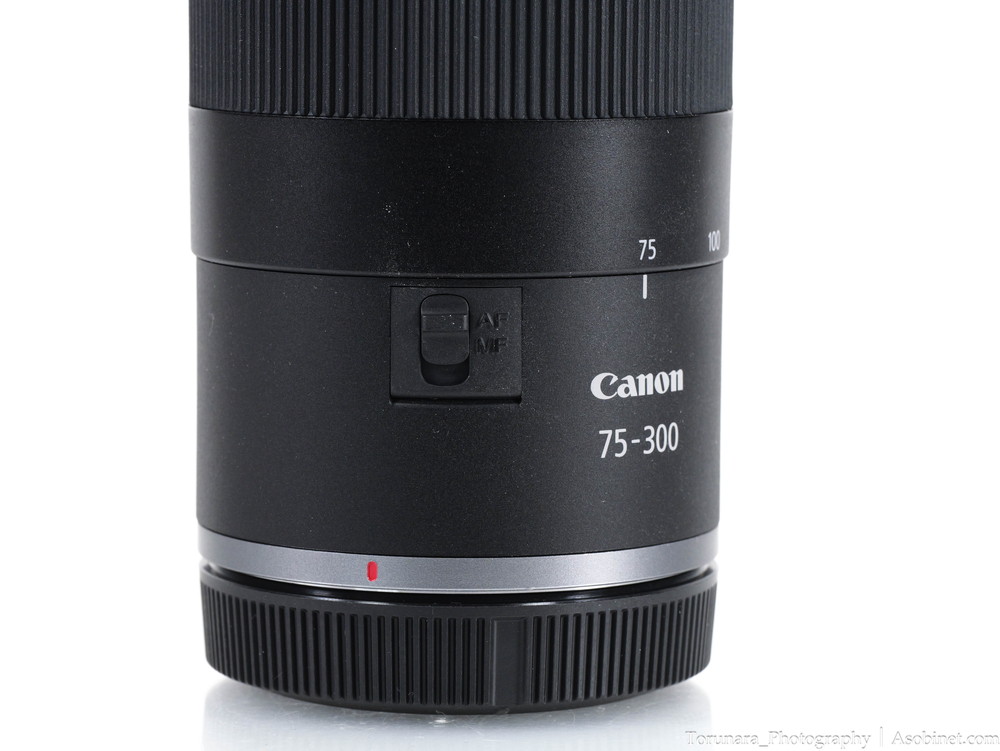
Only AF/MF switch is mounted on the left side.The design of the switch is more similar to the old EF75-300mm than to the RF lens.Furthermore, the cost has been cut so much that even the paint is omitted.
As mentioned above, the DC motor and gear are engaged in AF mode, so it is recommended to switch to MF mode when operating the focus ring.
Lenshood
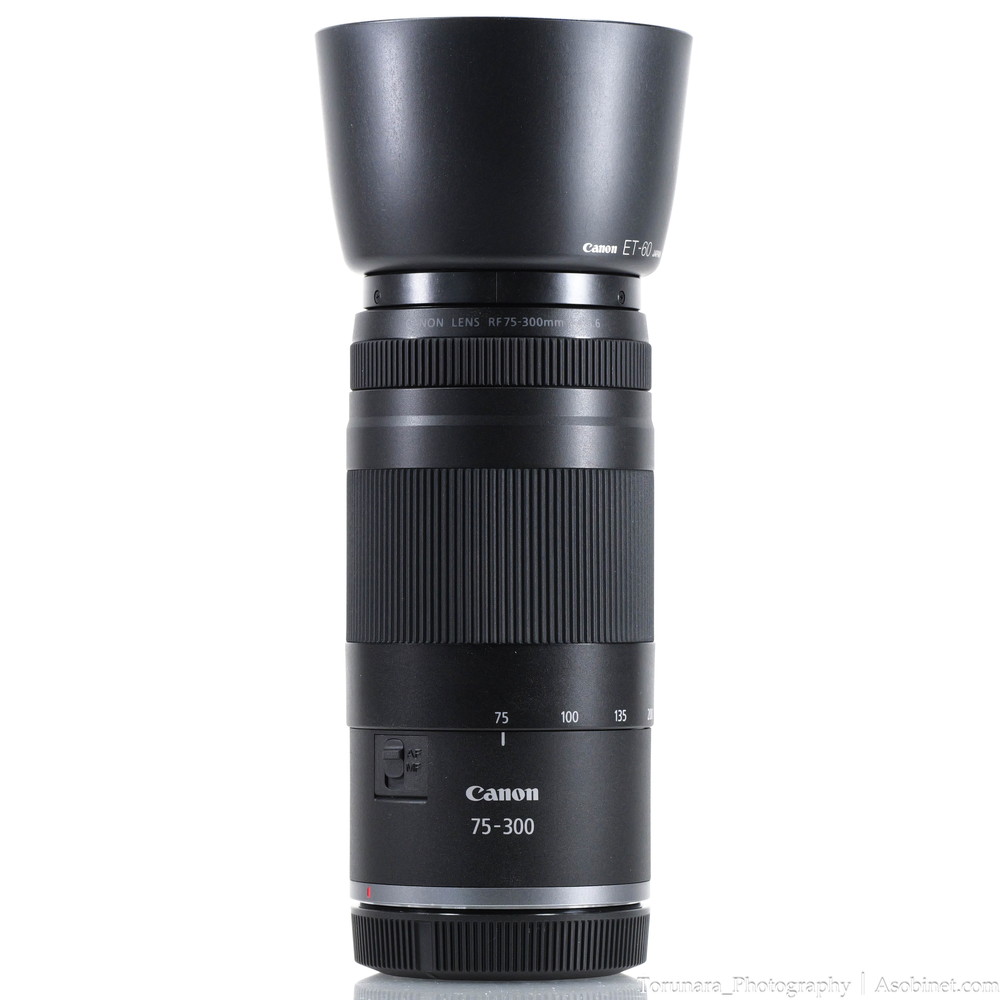
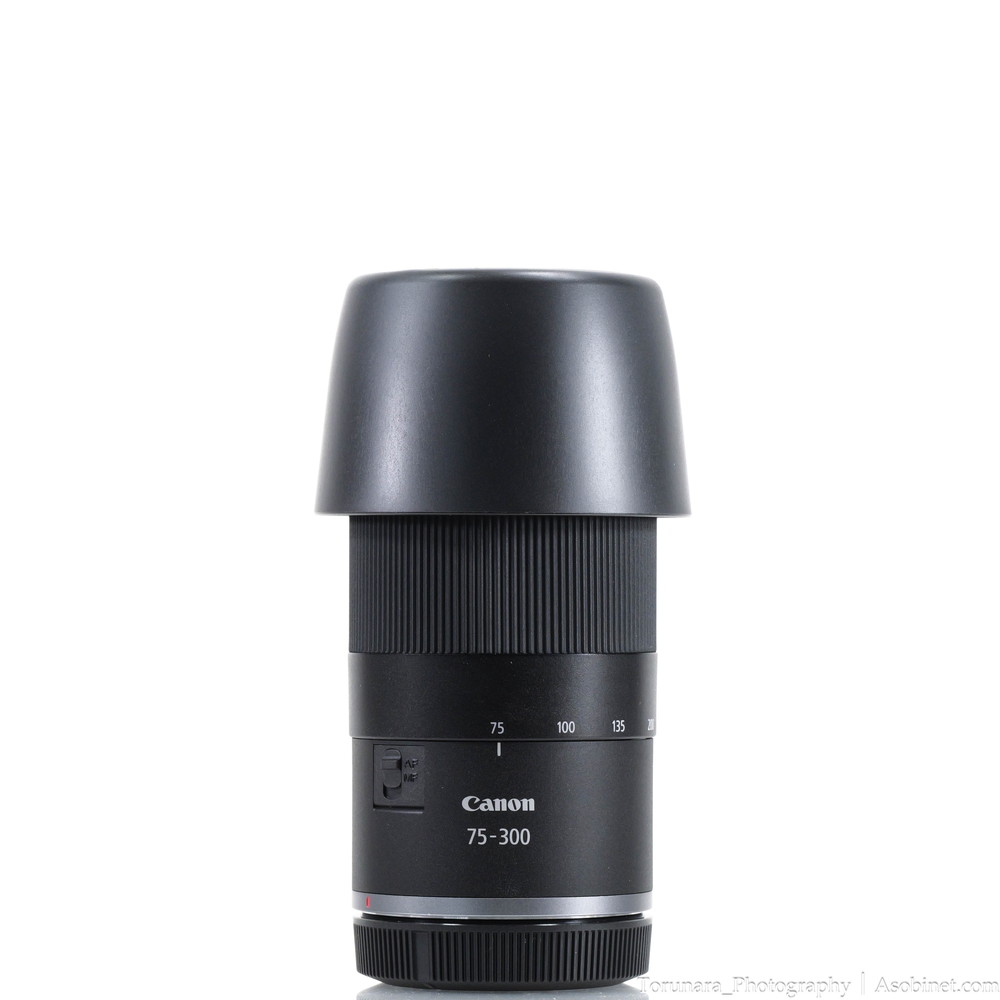
Purchased an optional lens hood “ET-60”.It is a bayonet type, but its fixing force is weaker than those for other RF lenses, and it is difficult to attach it upside down.Also, the focus unit may rotate when attaching or detaching the hood.It is recommended to hold the focus ring to fix it when attaching/detaching.
Example of use
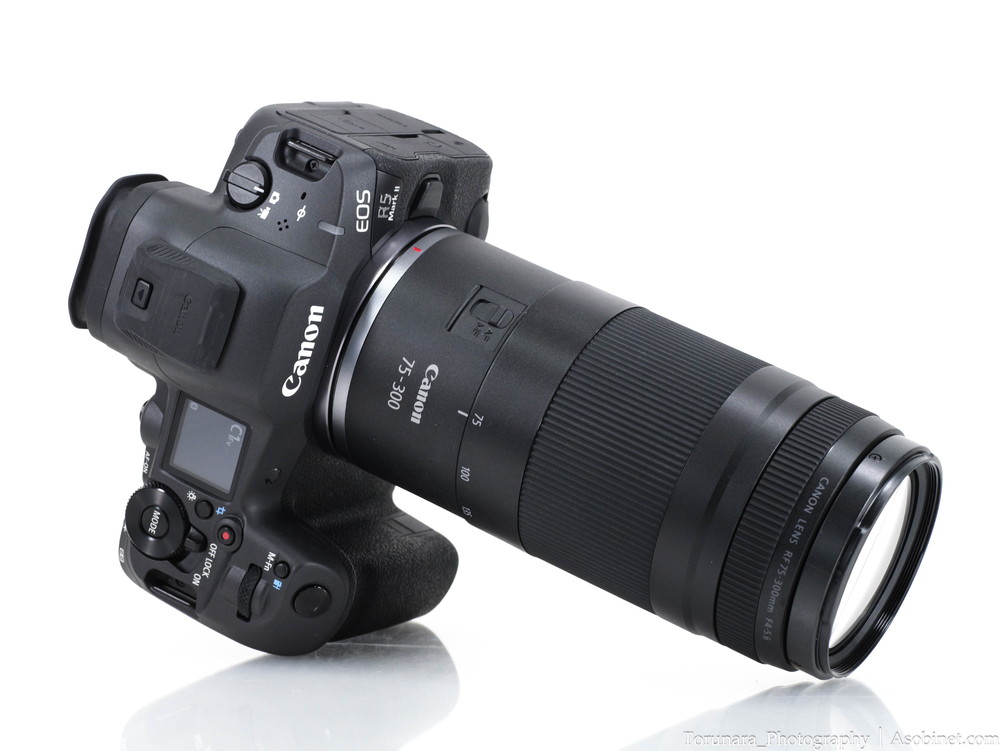
Mounted on EOS R5 Mark II.The lens barrel is slim, but the overall length is equivalent to a 300mm zoom lens.Although it would have been nice if the barrel could be made shorter with a sinking structure, this is not the case.
It is light enough to hold the camera in one hand.However, it is not equipped with optical image stabilization, so you will want to keep your left hand on the lens to stabilize the lens tip.However, be careful not to grip the focus ring or the lens tip, as this will interfere with focusing.
AF・MF
Focus Speed
It operates with a DC motor drive + lens advance system.Naturally, there is a difference compared to a nano USM inner-focus lens.Still, it operates crisply enough to be sufficient for general shooting distances.However, if the AF strays in low contrast or low light, the focusing speed will be significantly reduced.
I was worried about whether servo AF was possible with DC motor drive.I was worried about this, but after focusing, the camera operates more smoothly than I had expected.The drive noise was also quieter than I had expected.However, when actually shooting, the release timing was slightly slow, and there were many shots that resulted in a slight miss.If you are mainly shooting moving subjects, you may want to consider a different lens.
IS
Since the camera does not have optical image stabilization, the sensor-shift image stabilization on the body is used.Of course, cameras that do not have sensor-shift image stabilization, such as the R8 and RP, cannot be used.
In addition, optical type is more suitable than sensor-shift type for telephoto range such as 300mm.Although it is somewhat more effective, the shaking is greater than with the optical type.
Breathing
Focus breathing refers to the change in the angle of view depending on the focus position.If the change in angle of view is significant, the field of view will expand or contract during focusing, potentially causing distractions and affecting autofocus stability. Ideally, it is better to have no focusing breathing. In order to check the effects of breathing, we took the following photos with the lens stopped down to the minimum aperture, at the minimum shooting distance and at infinity.
75mm
The angle of view changes significantly between the minimum focus distance and infinity, perhaps due to the fact that the lens has a retractable focus.
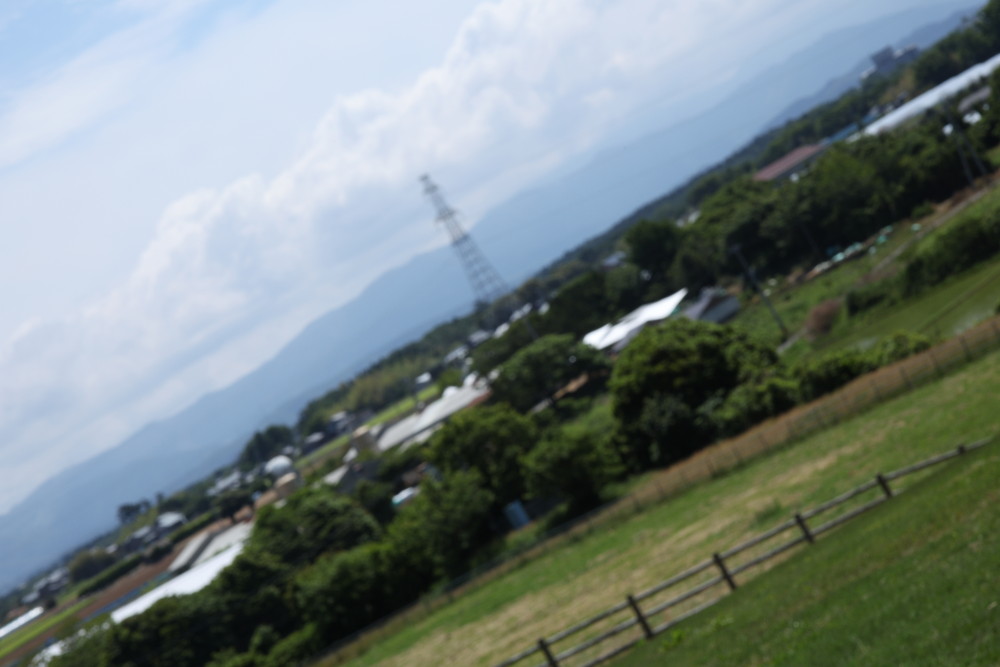
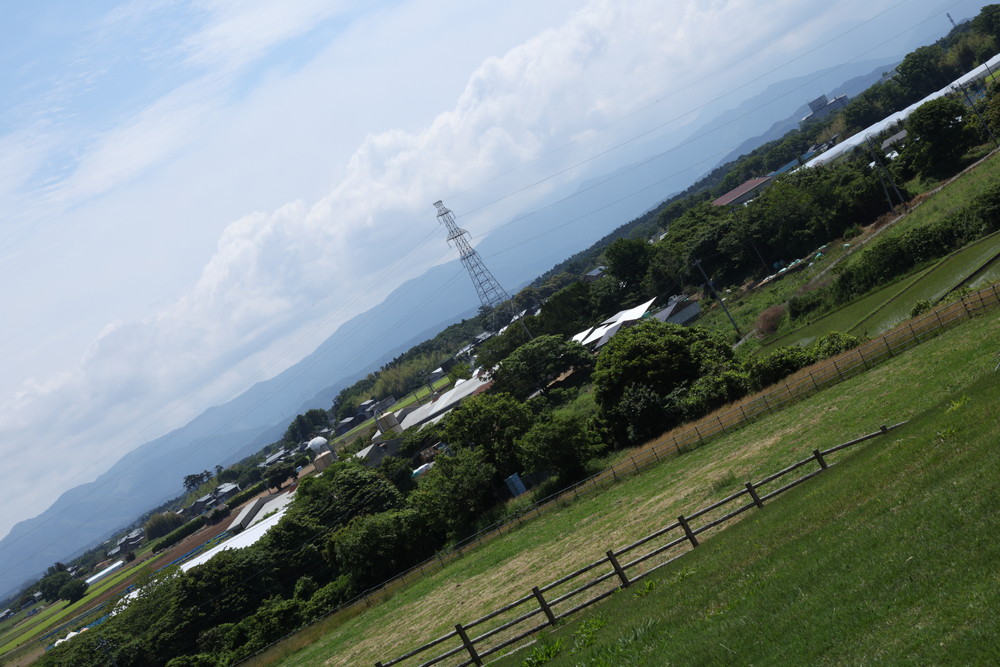
300mm
As with the wide-angle side, there is a large change in the angle of view.

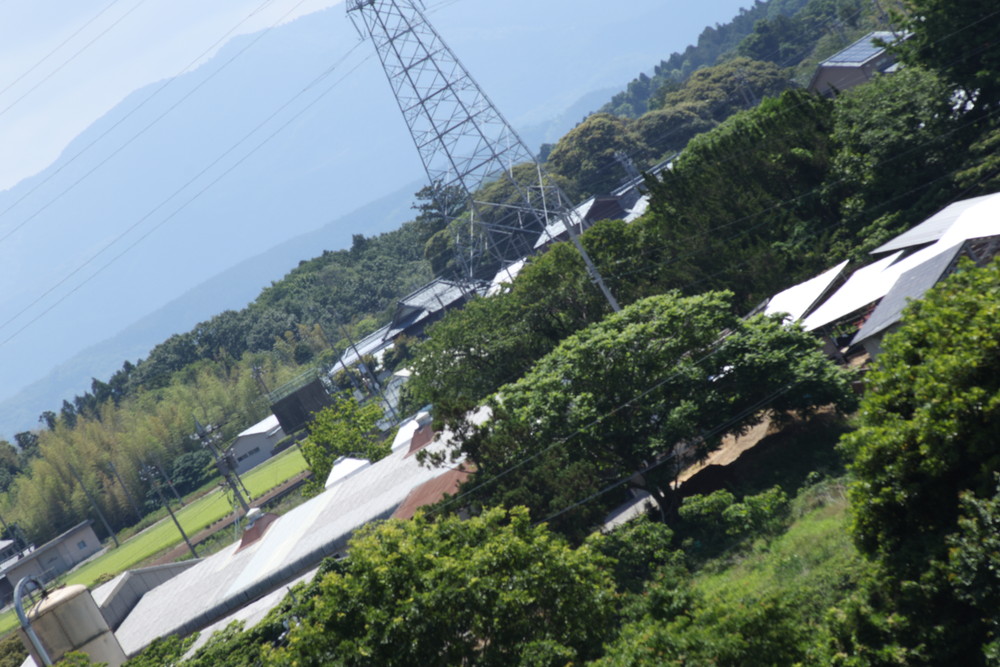
AF accuracy
As far as the EOS R5 Mark II is combined with the EOS R5 Mark II, there are very few missed shots with one-shot AF.The misses are often caused by the camera, such as subject detection misdetection.In the case of servo AF, the timing of the release may be slow, resulting in a slightly out-of-focus photo.
MF
Mechanical type focus ring with 90° stroke.Necessary and sufficient, but not suitable for fine-tuning of details.
Resolution Chart
Test conditions
- Camera body:EOS R5 Mark II
- Interchangeable lens:RF75-300mm F4-5.6
- Pearl Optical Industry Co.
‘[HR23348] ISO12233-compliant 8K resolution test chart (for still cameras)’ - Olympus HYRes 3.1 analysis software
- The lighting environment is constant indoors.
- Tripod, self-timer 10 seconds, electronic shutter
- RAW output
- ISO 200-400
- RAW development in Adobe Lightroom Classic CC
・Sharpness: Off
・Noise reduction: Off
・Chromatic aberration correction: Off - Focus on each point to be analysed and take a picture
(image plane curvature is difficult to measure at close range, so check at infinity) - Note that this is a test at close range (infinity may be even better).
- If you adjust the sharpness when developing JPEG or RAW images, the values may improve. Please note that the values given here are the ‘minimum values’.
75mm
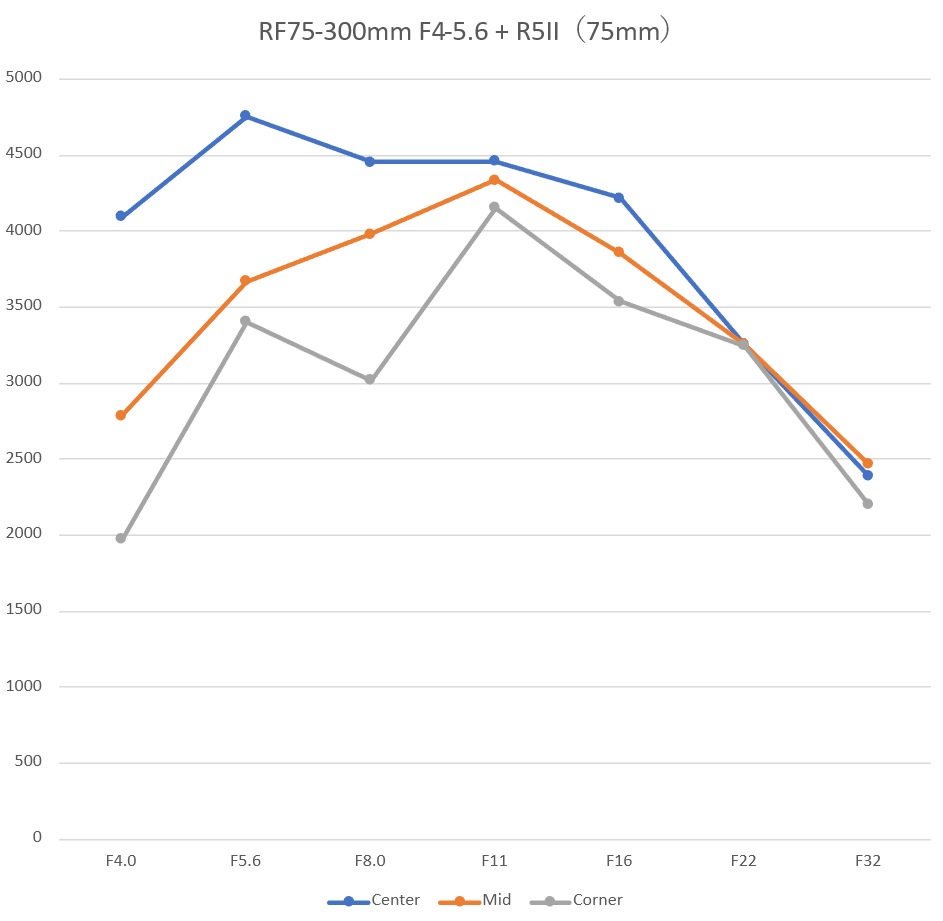
The center results are good from the widest aperture.Although there is no significant improvement when the aperture is stopped down, the results are practical enough even with a high-resolution sensor.On the other hand, image quality is significantly degraded at the periphery and corners.This is due to eccentricity, which was not noticeable in the distance.Considering the effect of eccentricity, a slightly better result could be obtained.
Centre of frame
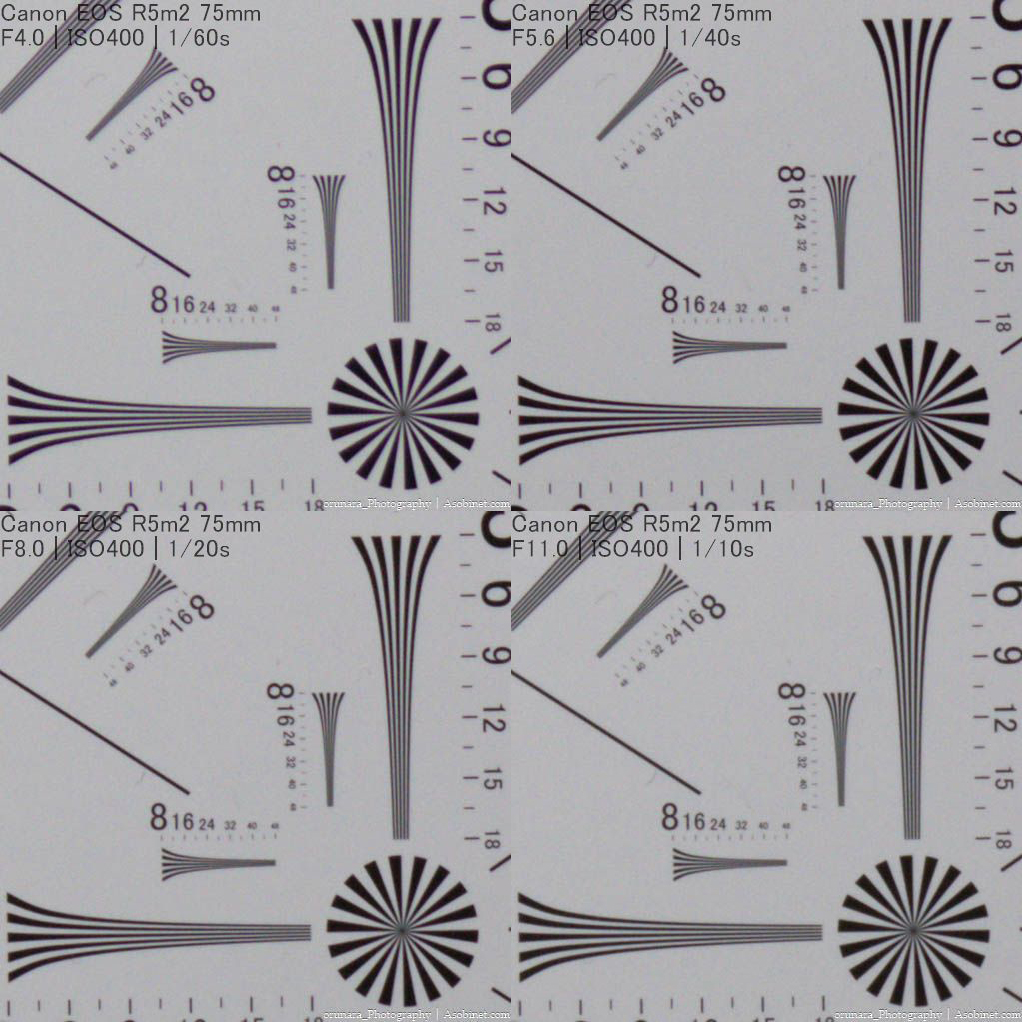
Middle of frame
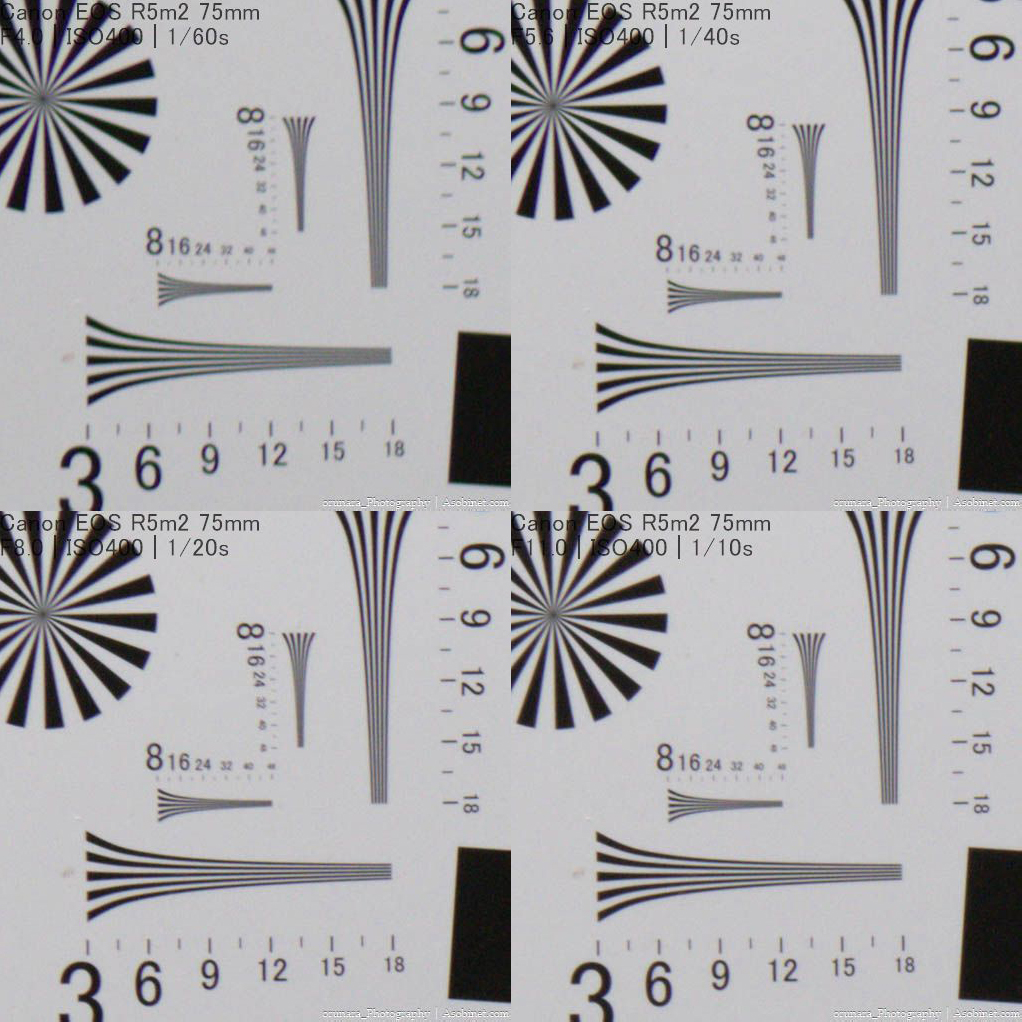
Four corners of frame
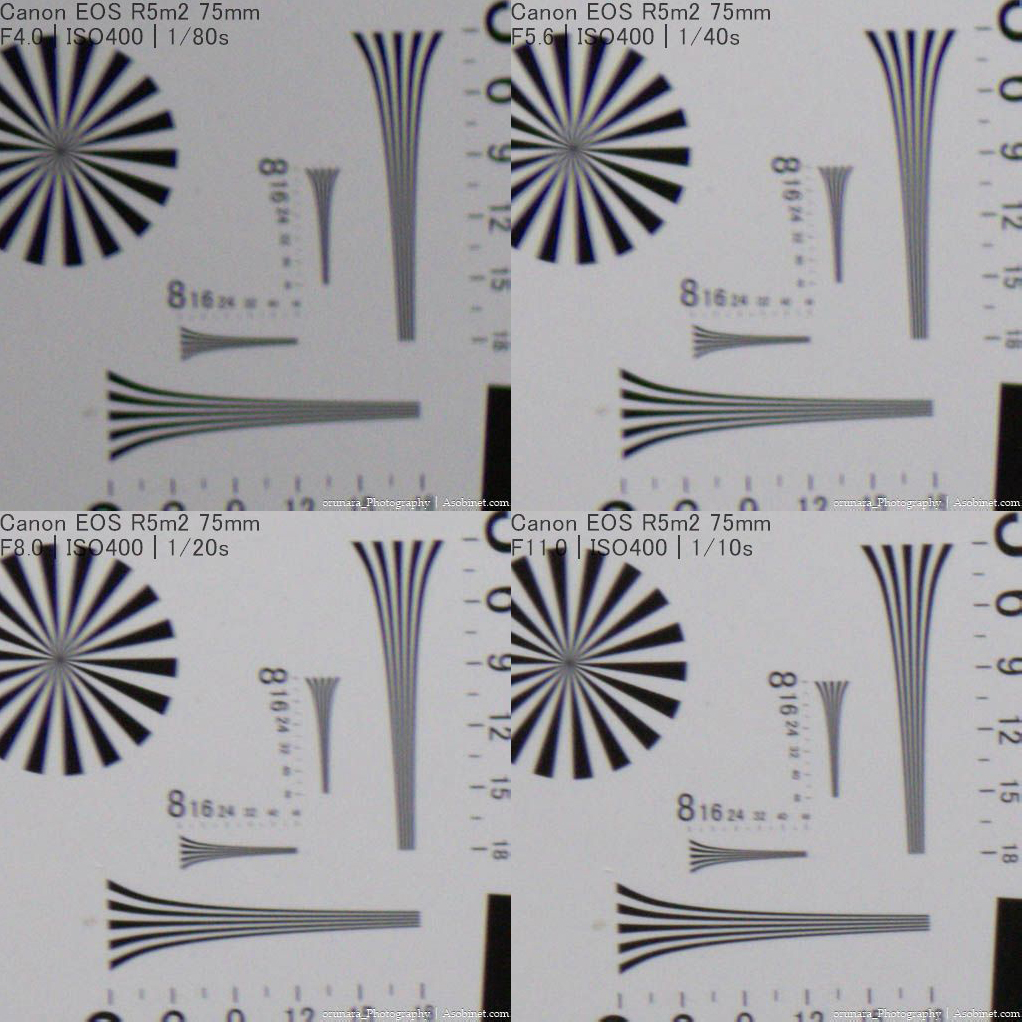
Test values
100mm
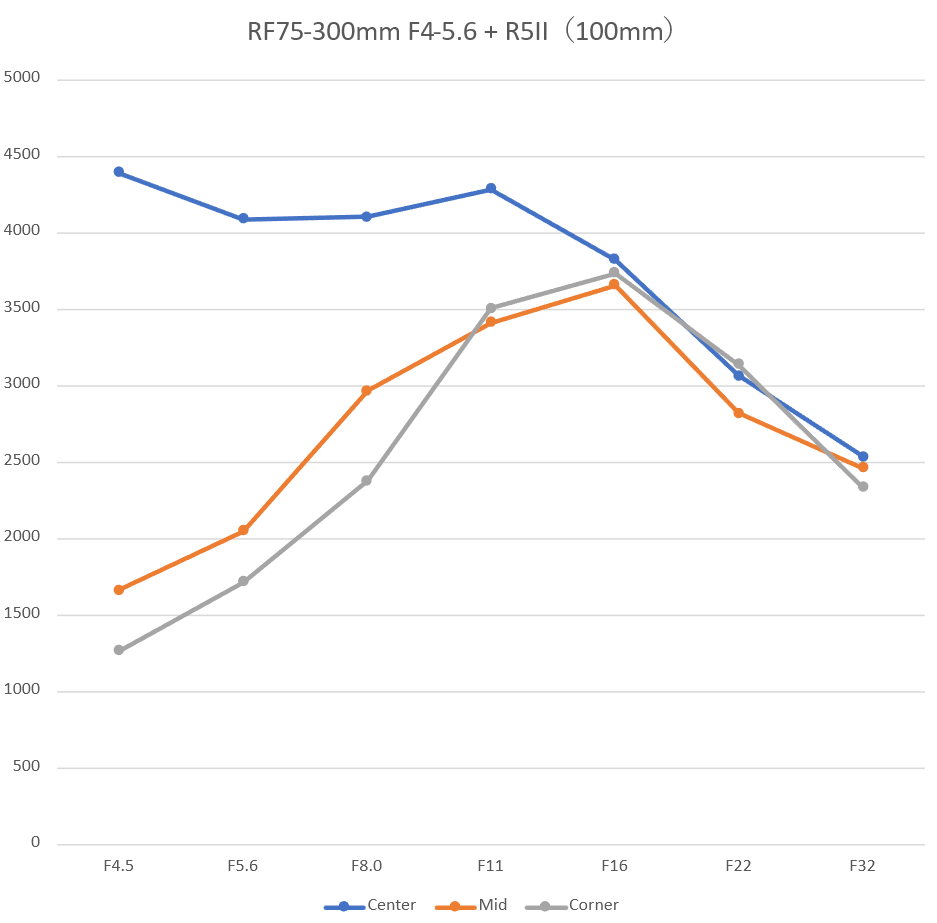
As with the 75mm lens, the center is sharp at the widest aperture. The image quality is practical. On the other hand, the periphery and corners continue to be soft. Considering the effect of eccentricity, a slightly better result could be obtained.
Centre of frame
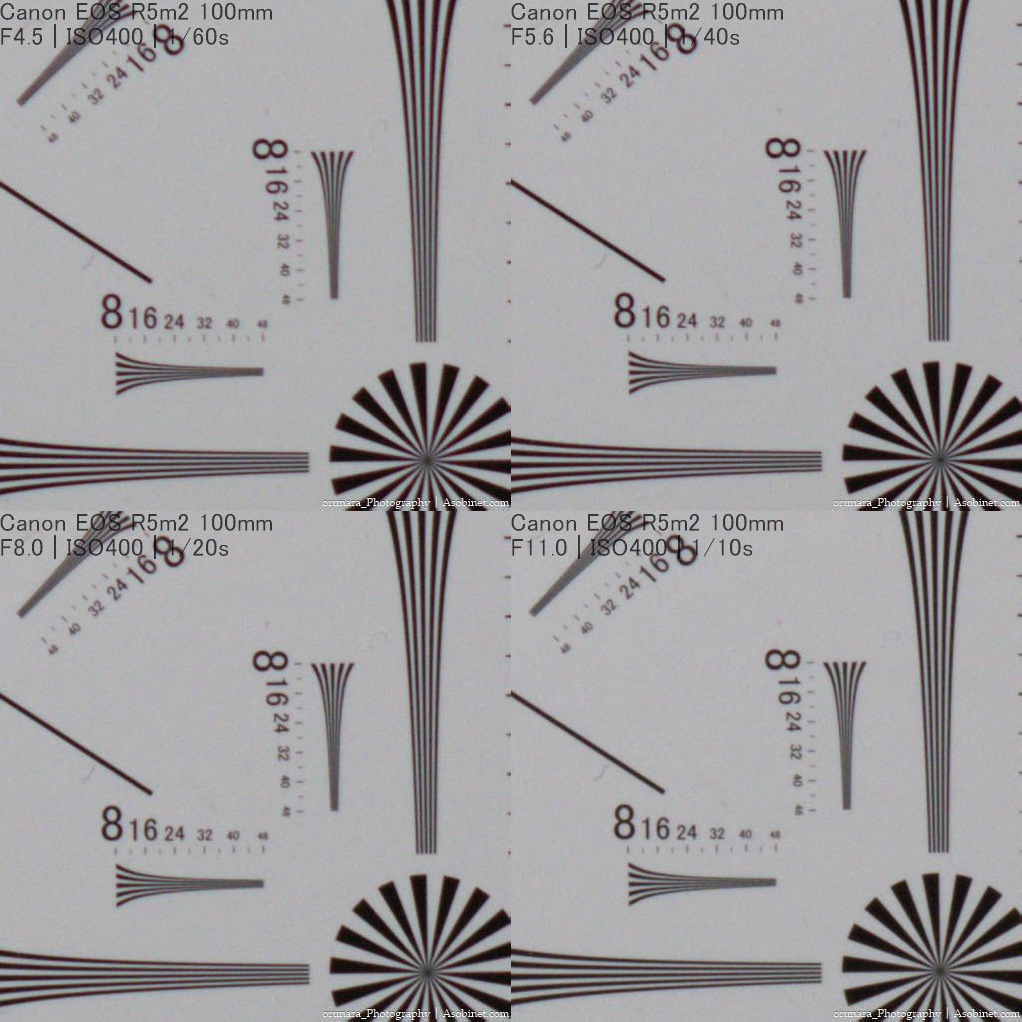
Middle of frame
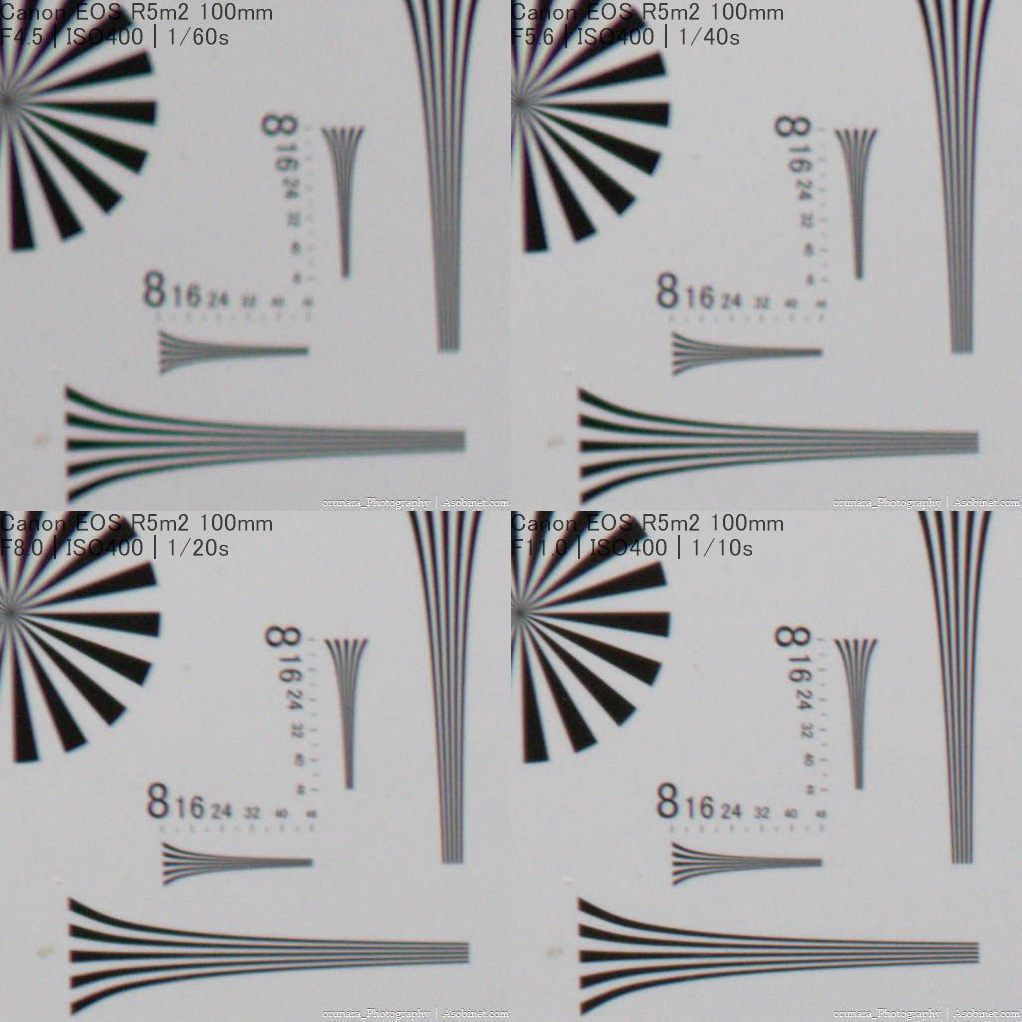
Four corners of frame
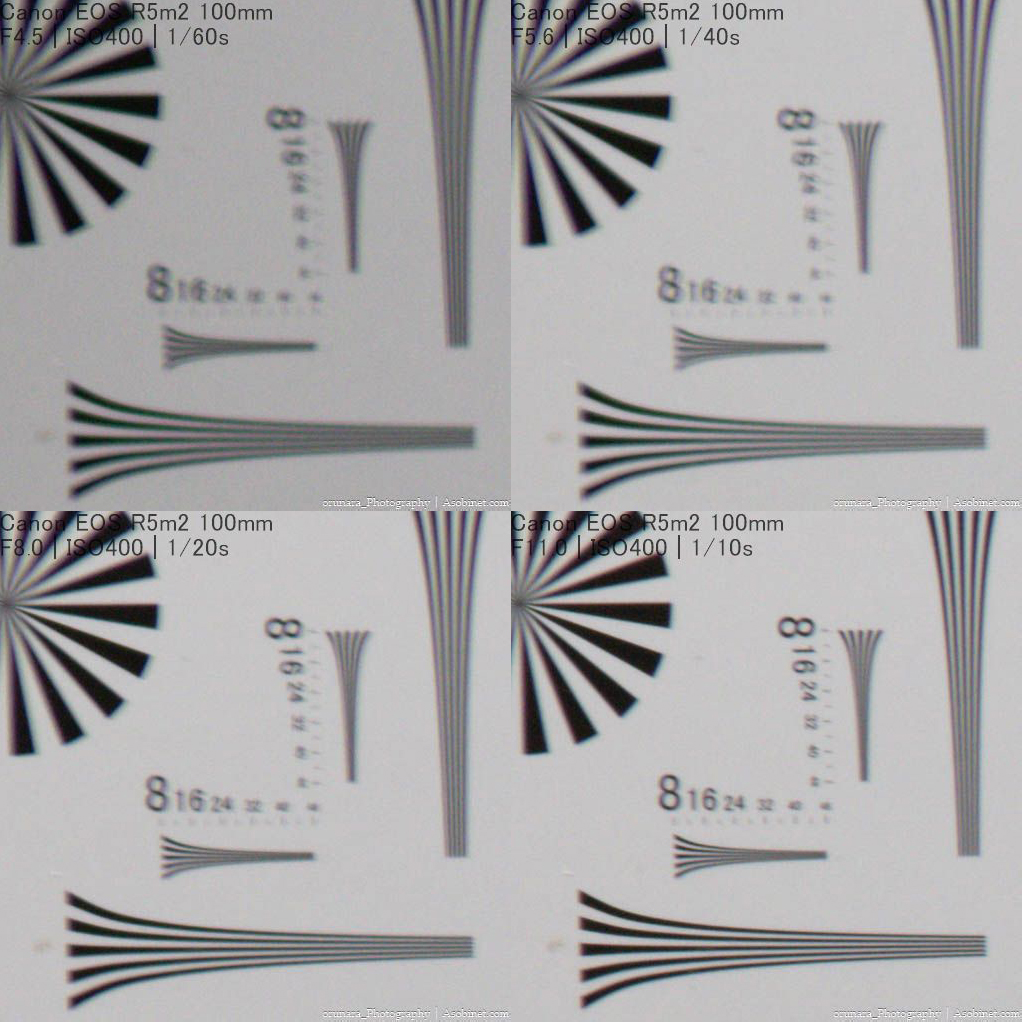
Test values
135mm
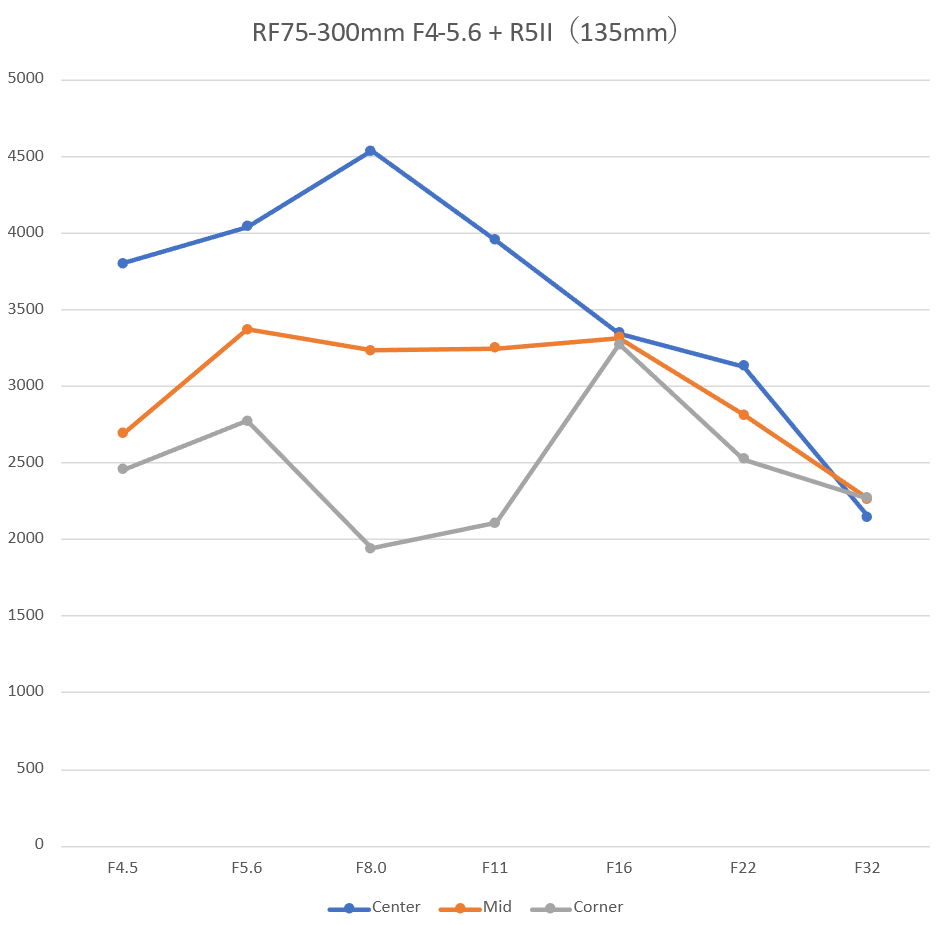
Center continues to be good.Not “very good,” but practical and not particularly unsatisfactory.Contrast gradually improves as you stop down, but not enough to sacrifice light loss with aperture.Periphery and corners are more stable than at the wide-angle end.The effect of eccentricity is modest.
Centre of frame
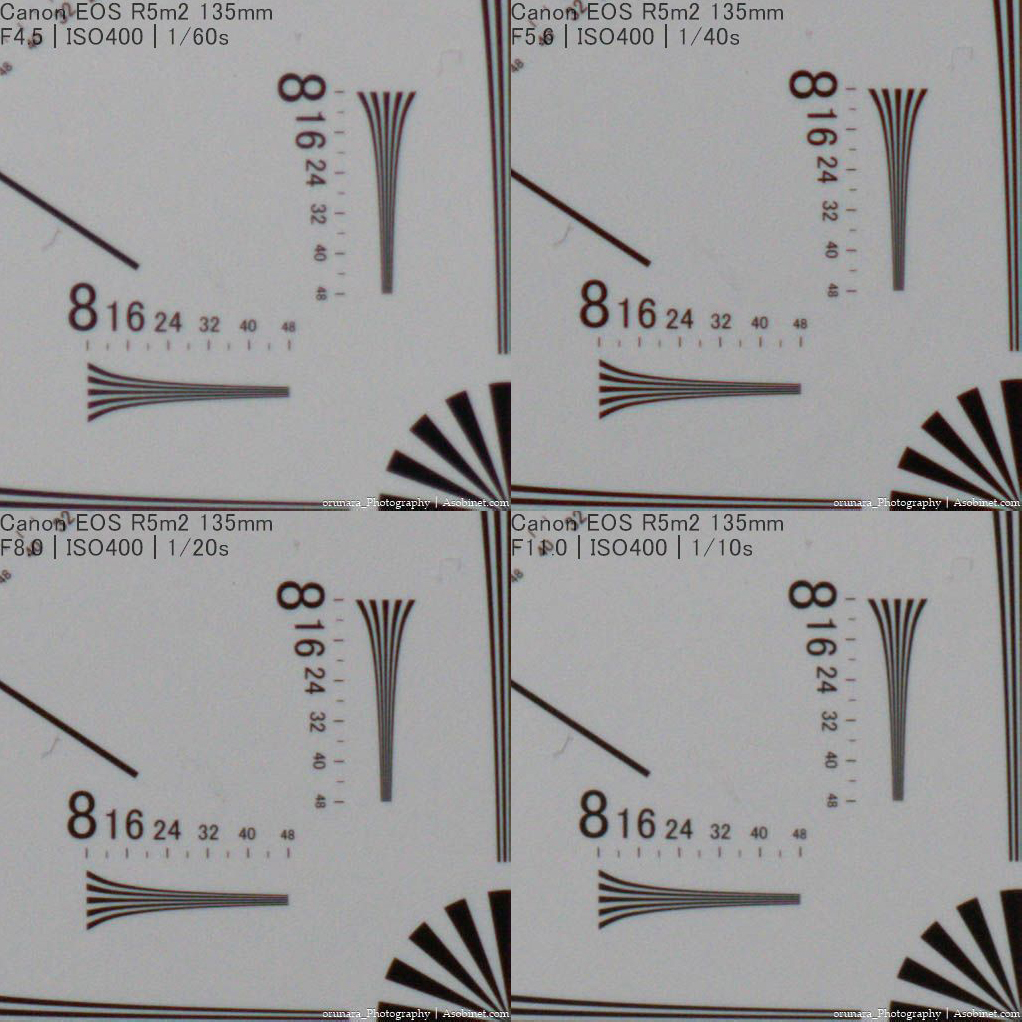
Middle of frame
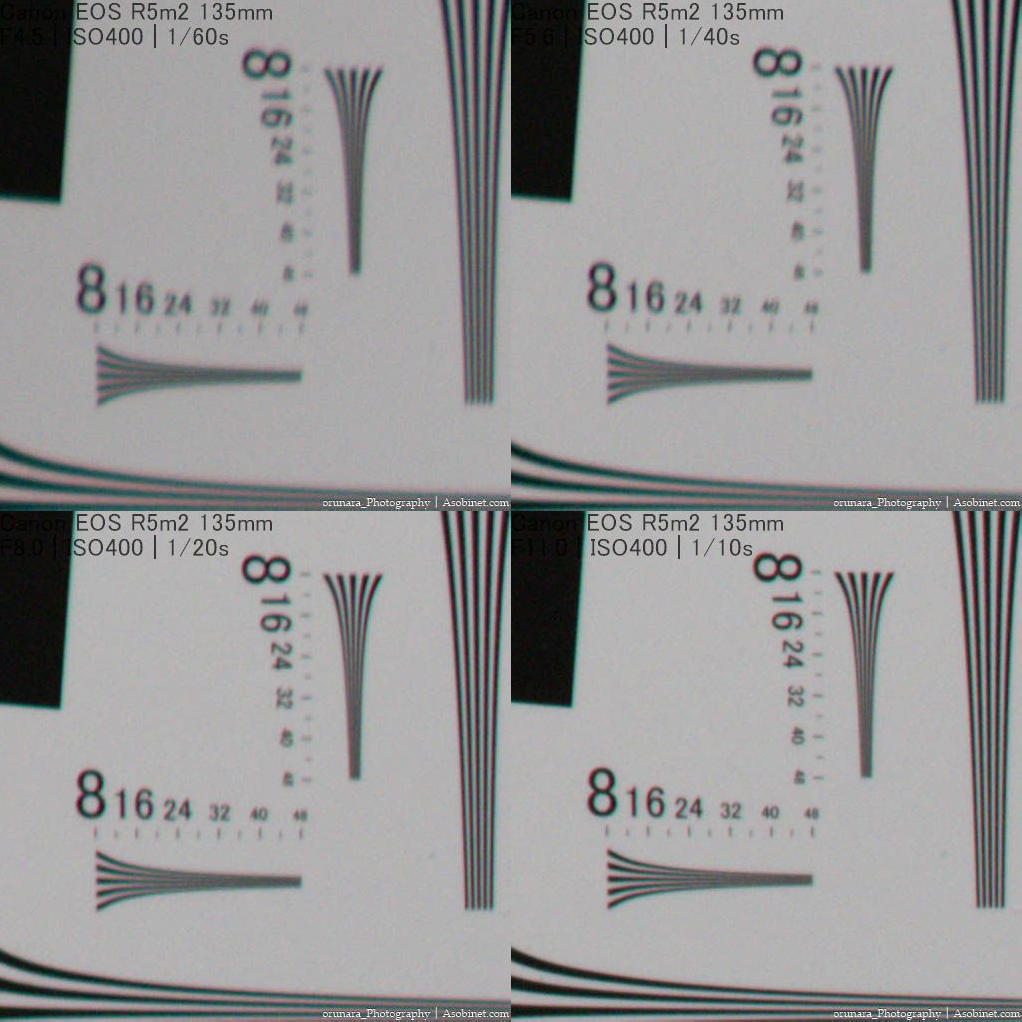
Four corners of frame
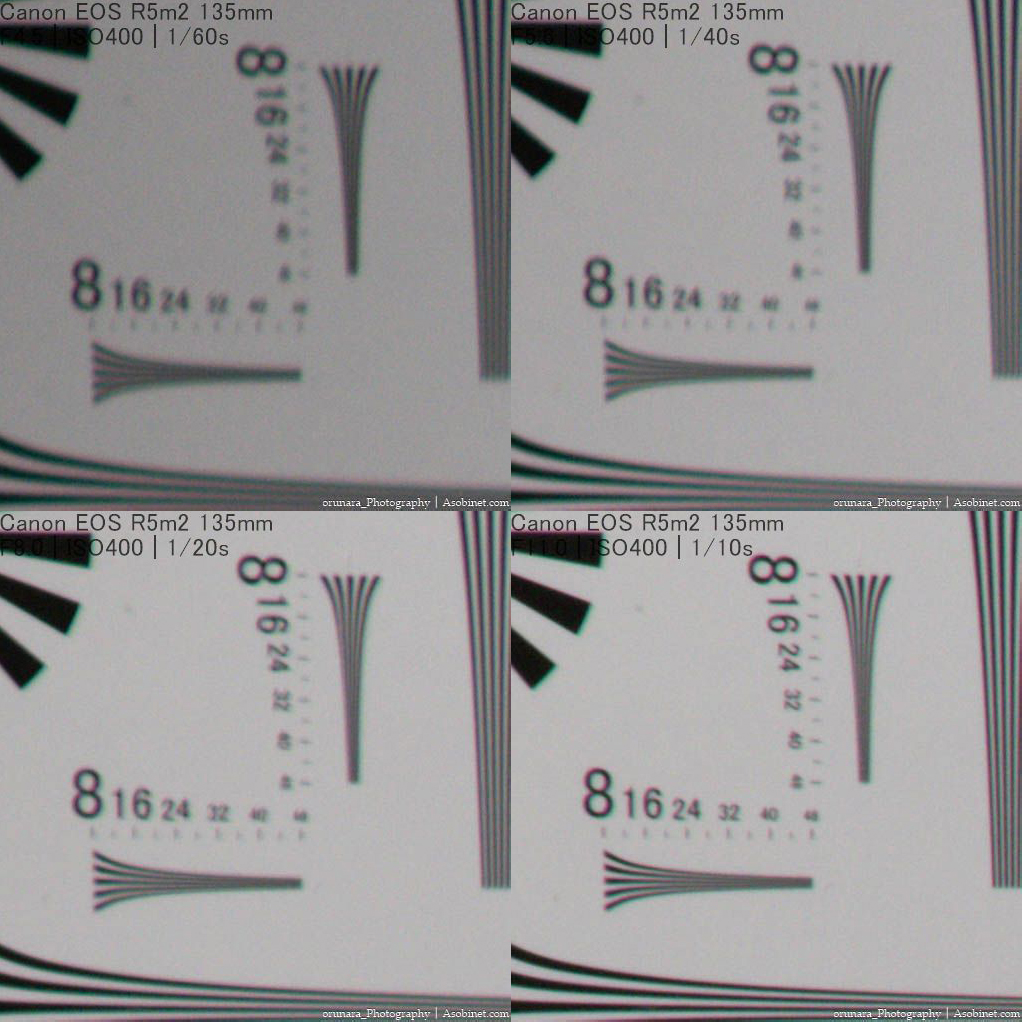
Test values
200mm
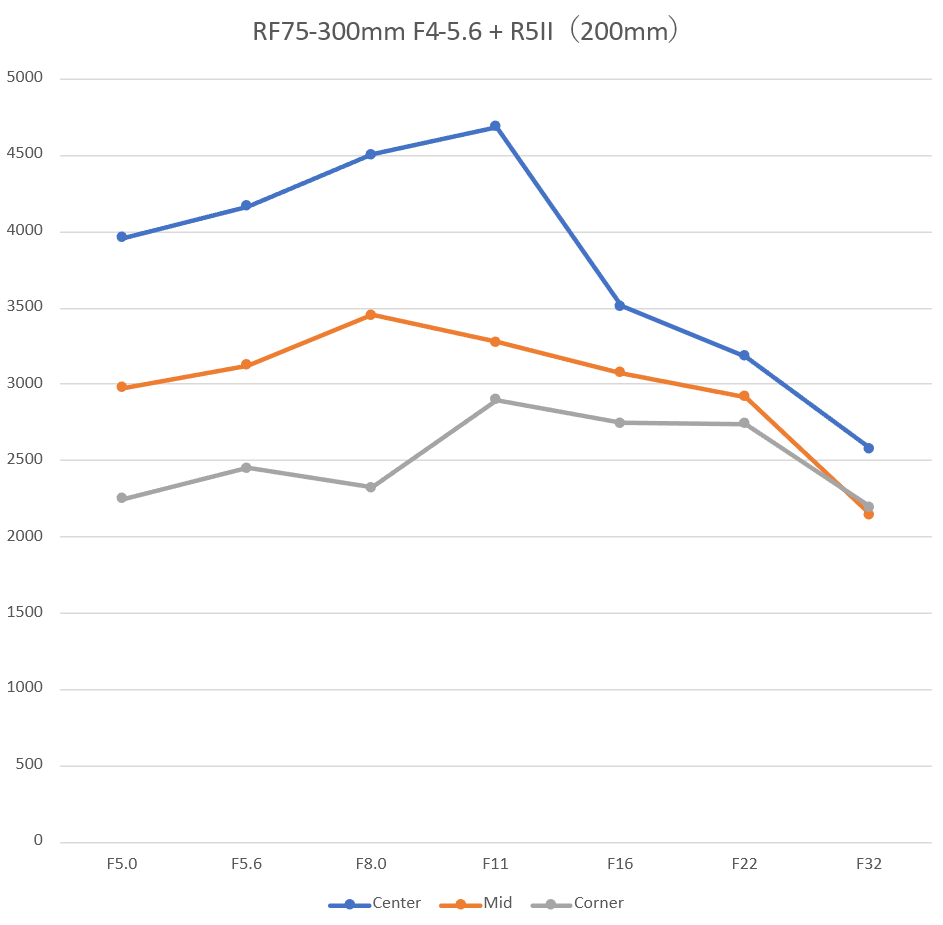
Center continues to be good.Not “very good,” but practical and not particularly unsatisfactory.Contrast gradually improves as you stop down, but not enough to sacrifice light loss with aperture.Periphery and corners are more stable than at the wide-angle end.The effect of eccentricity is modest.
Centre of frame
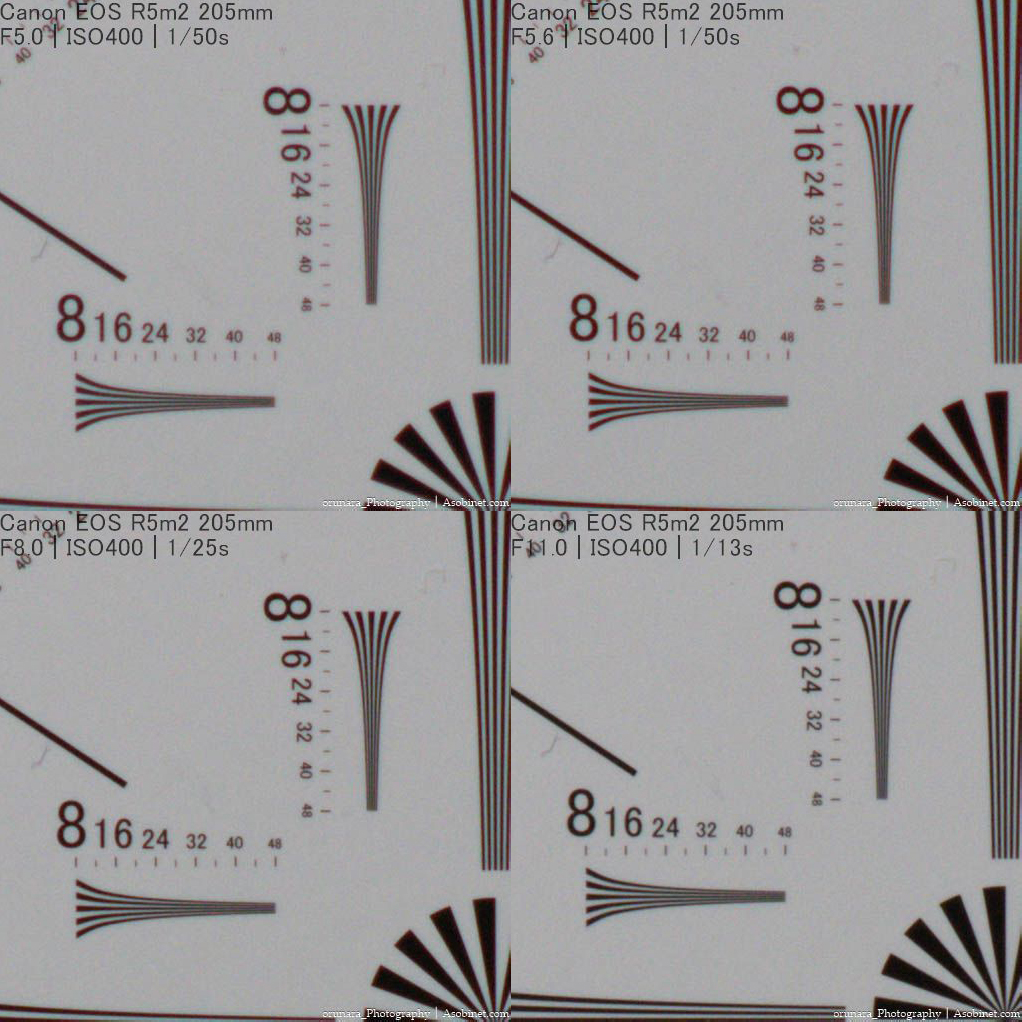
Middle of frame
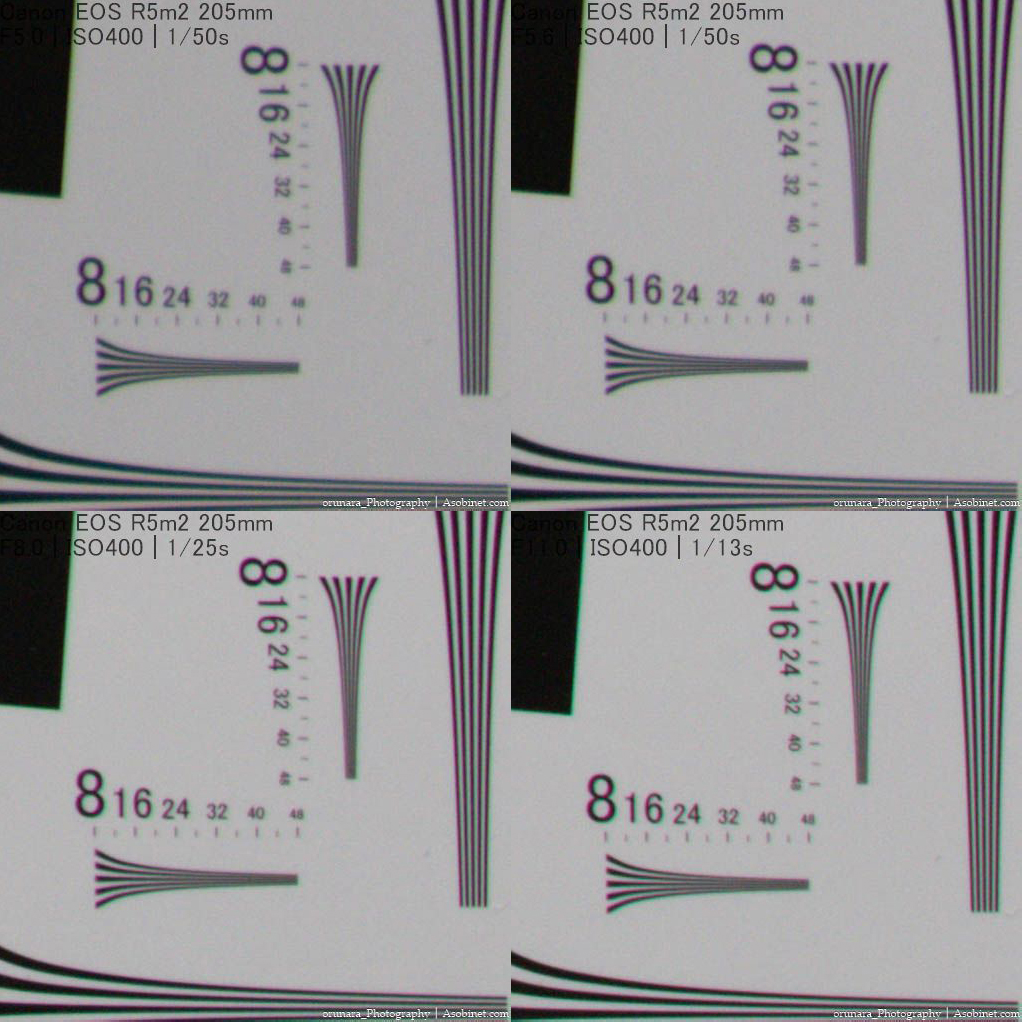
Four corners of frame
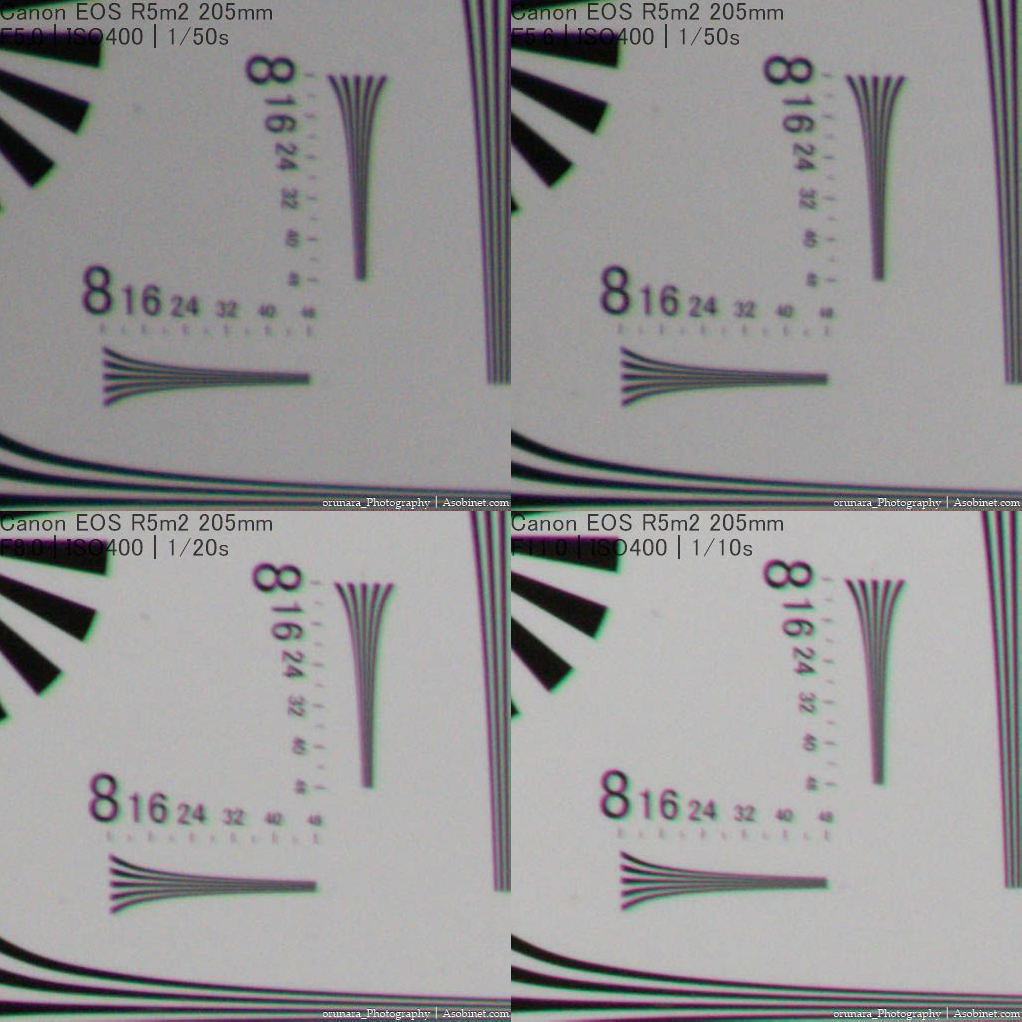
Test values
300mm
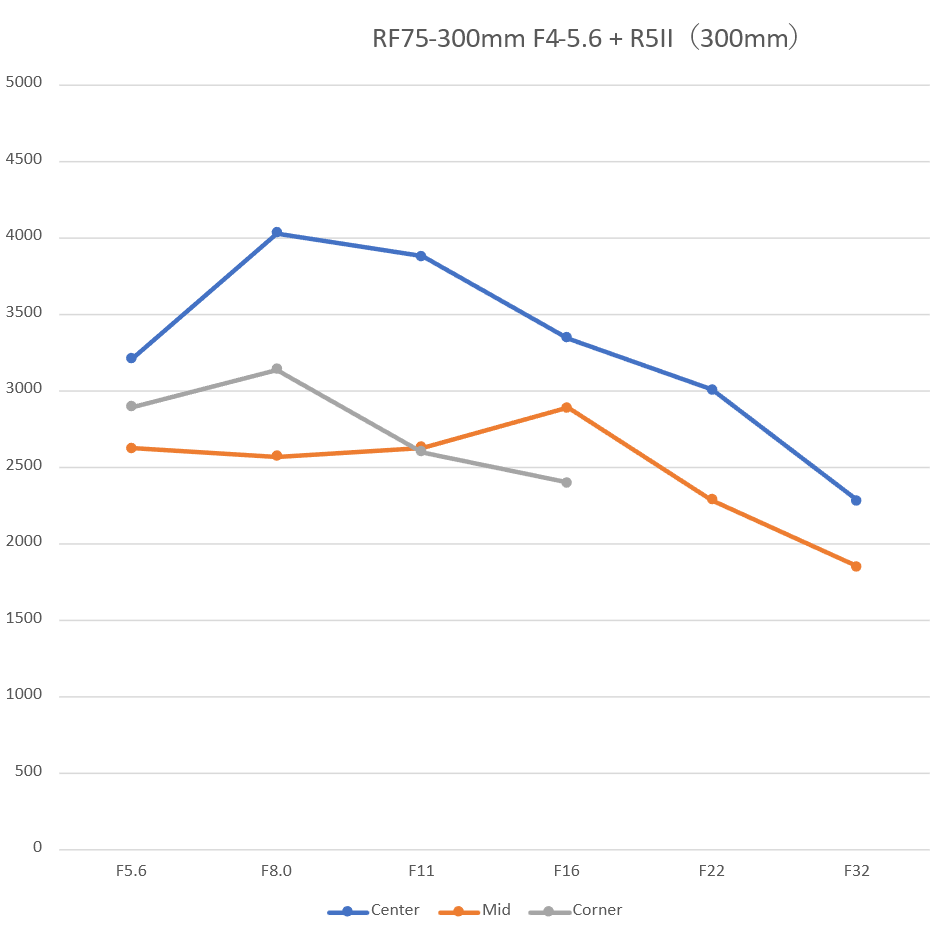
The resolution performance in the center deteriorates, but it improves as you stop down the aperture.However, there is little room for growth, so compromising at f/5.6 is an option.If you are outdoors during the day and can stop down the aperture, F8-F11 is recommended.The periphery and corners are stable from the widest aperture, but the values are not high.Also, the effect of lateral chromatic aberration is noticeable and affects the measurement results.
Centre of frame
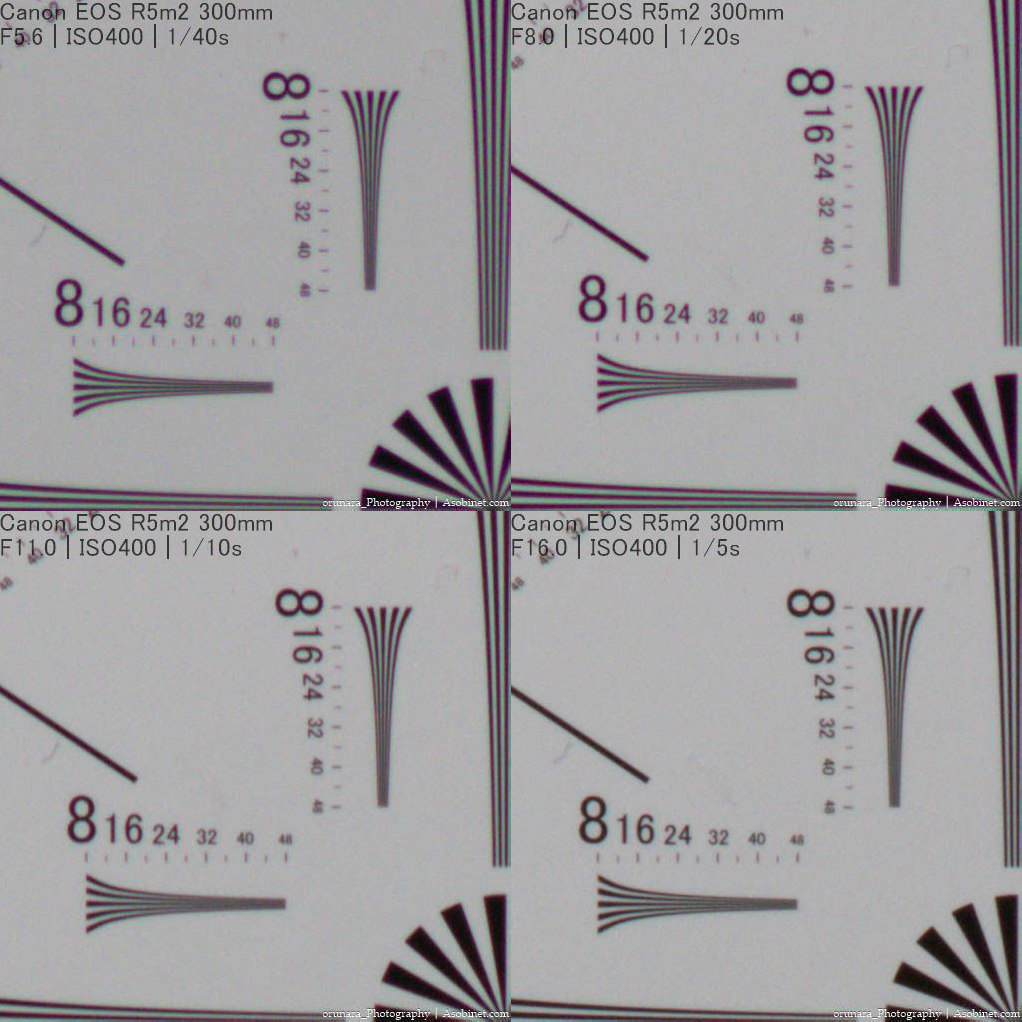
Middle of frame
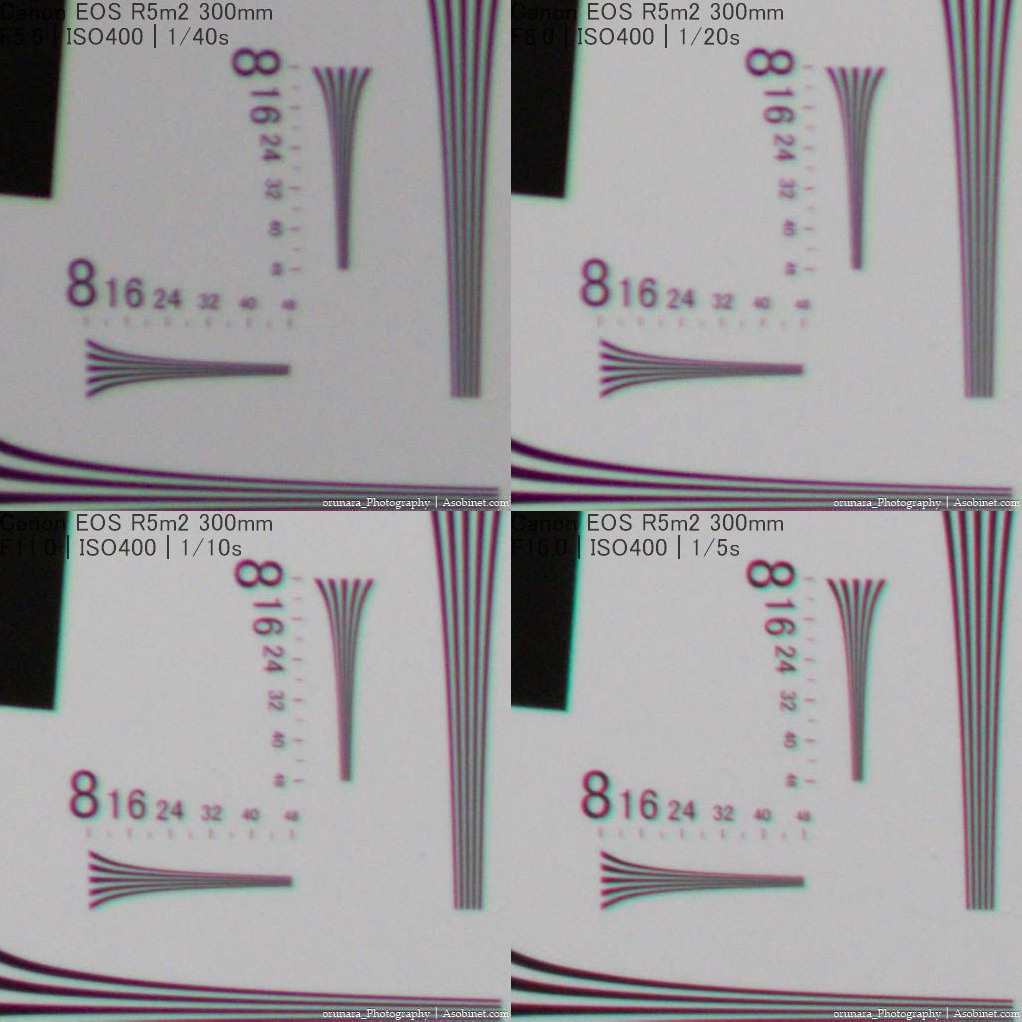
Four corners of frame
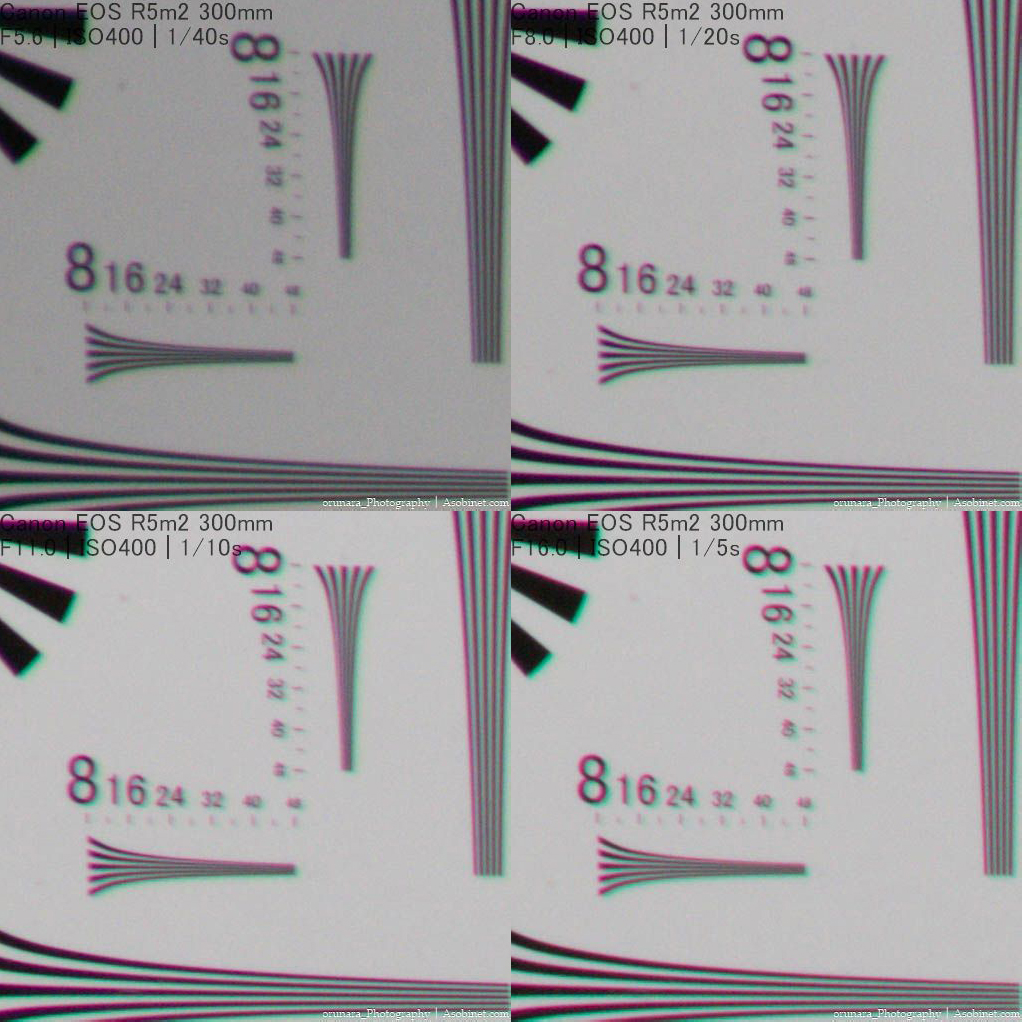
far-field resolution
Test environment
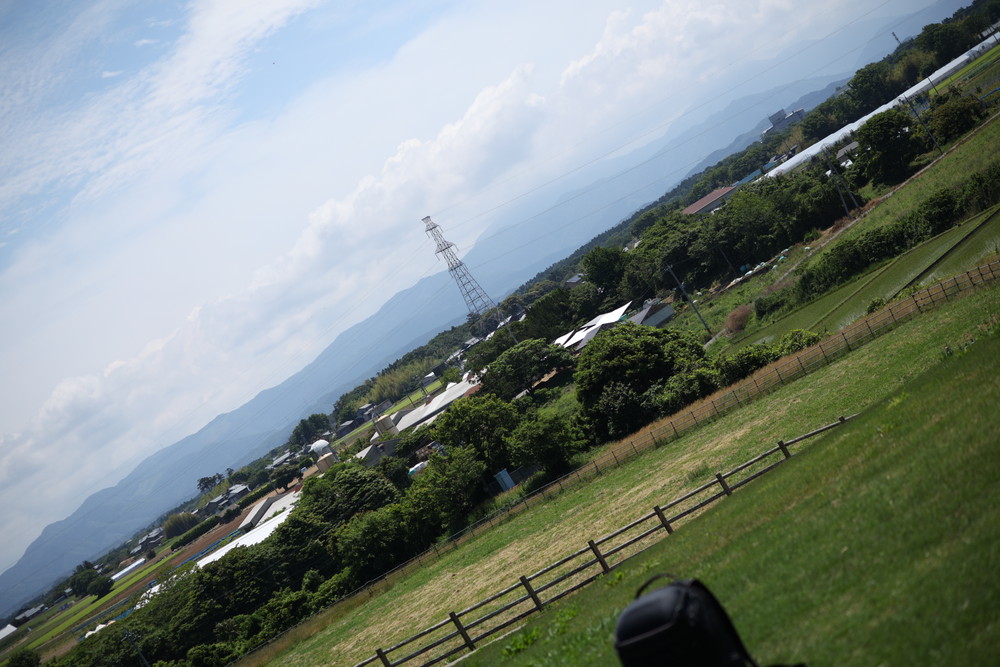
- Date: 2025.5.30 Windy (with a stone bag)
- Camera: EOS R5 Mark II
- Tripod: Leofoto LS-365C
- Head: BF BA FANG BCA-01
- Exposure: Aperture priority AE ISO 100-400
- RAW: Adobe Lightroom Classic CC
- Sharpness off
- Noise correction off
- Lens correction off
75mm
Centre of frame
Good results can be obtained from the widest aperture.There is a slight residual effect of axial chromatic aberration, but this improves as you stop down to f/8.0, which increases the resolution performance and contrast of details.After that, nothing good can be achieved by stopping down the aperture.
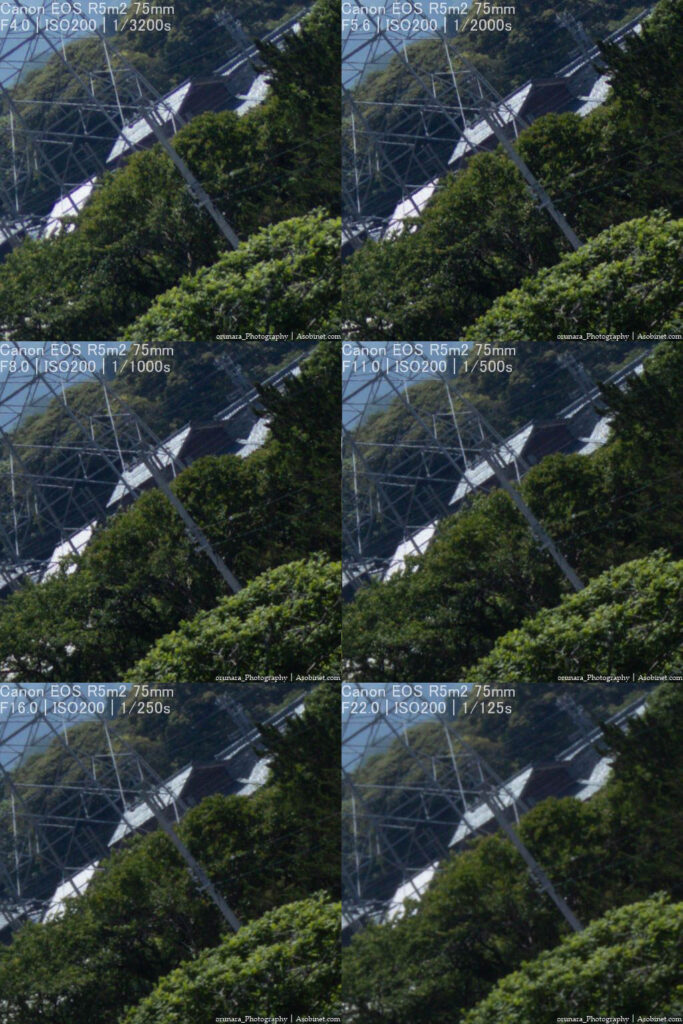
Middle of frame
When compared to the center, the detail is slightly softer and there is some flow like astigmatism.Nevertheless, the results are good enough if you do not look too closely, and are comparable up to around f/11.
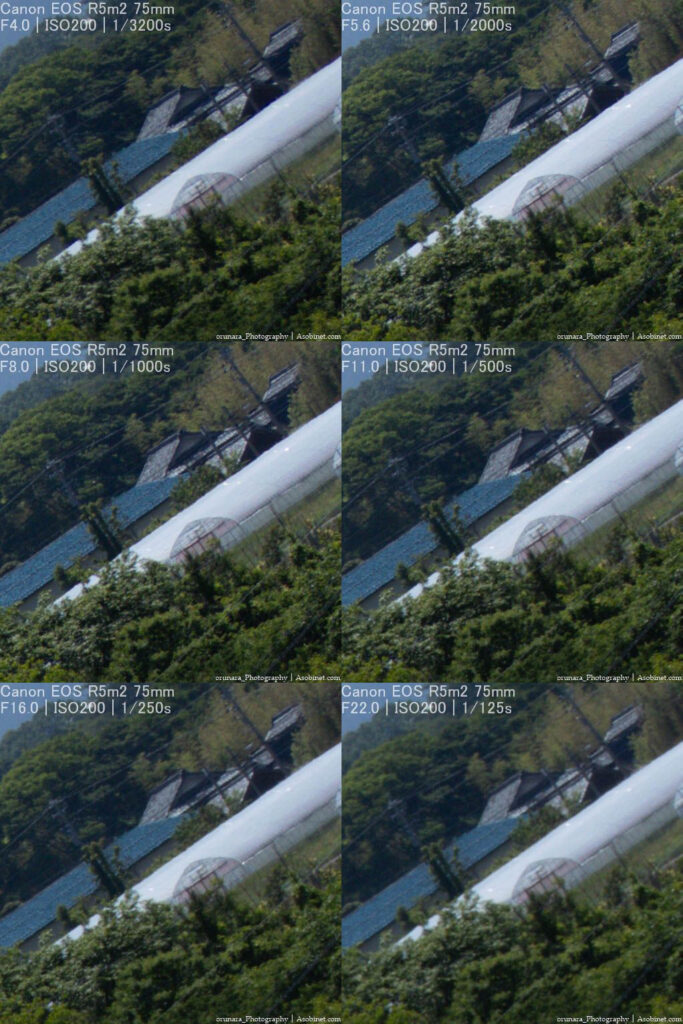
Four corners of frame
Slightly softer than center and periphery, but improves when stopped down to f/8.The improvement effect of image quality with aperture is small, but generally stable.Not a bad result.
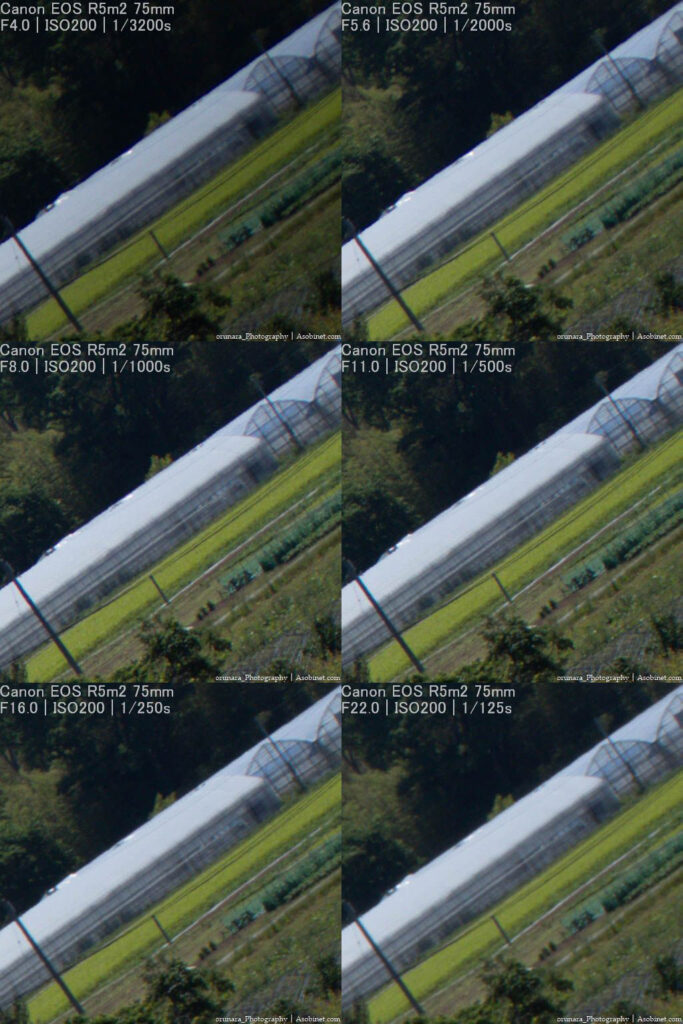
100mm
Centre of frame
Same trend as 75mm.It is doing well despite the optics of the telephoto zooms of the film era.
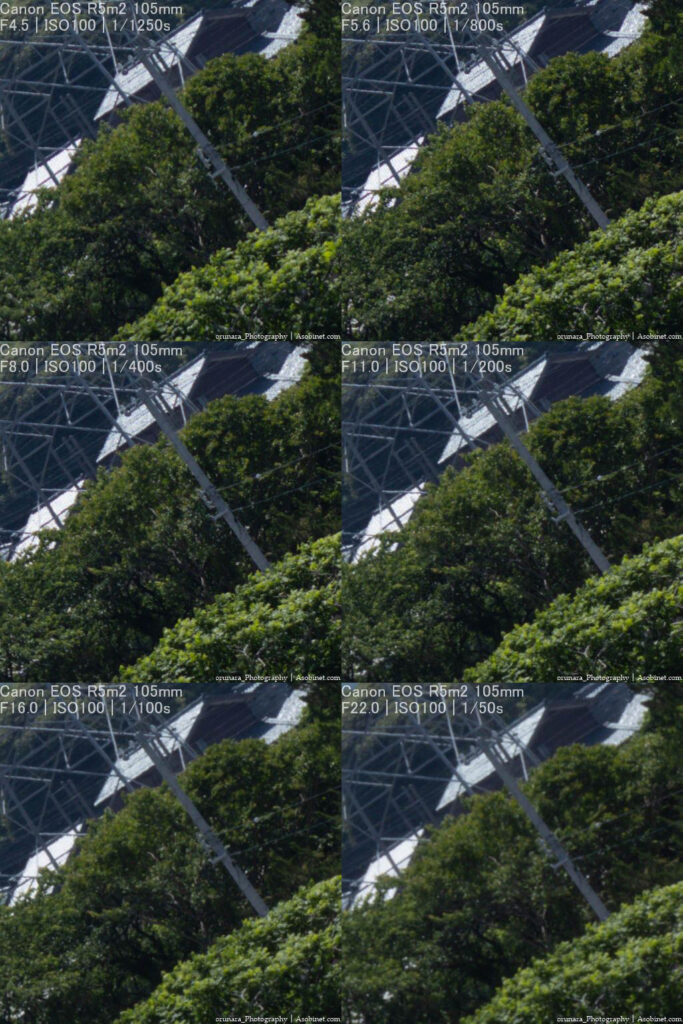
Middle of frame
Same trend as 75mm.Good results.
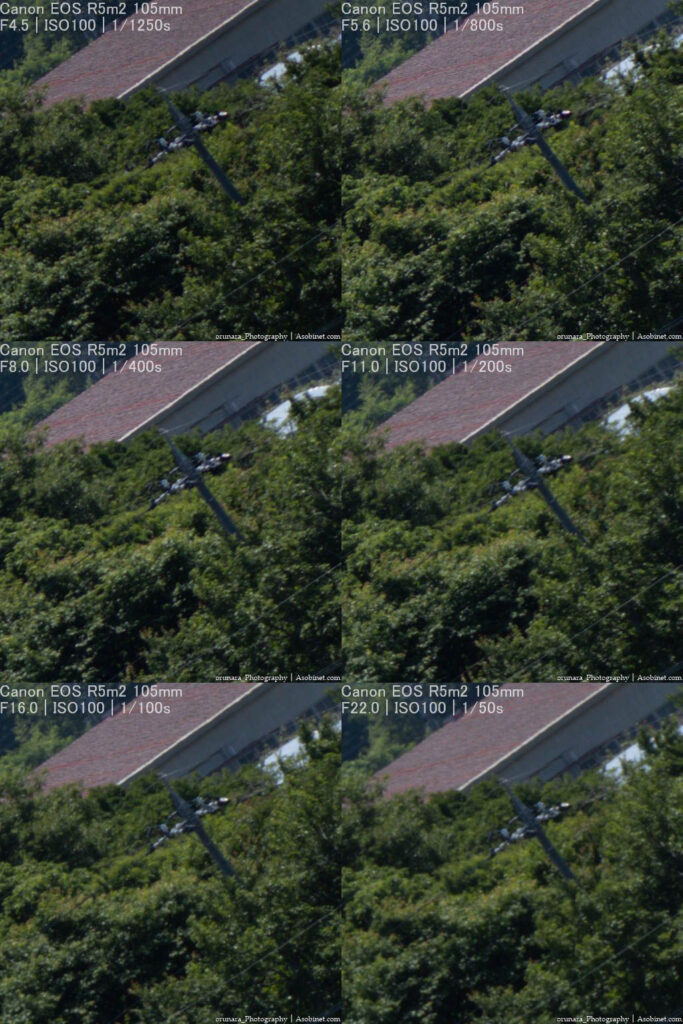
Four corners of frame
As with the 75mm, good results can be obtained by stopping down to f/5.6-f/8.Do not expect too much, but it is sufficient for practical use.Although the effects of magnification chromatic aberration can be seen, it can be corrected with lens correction.
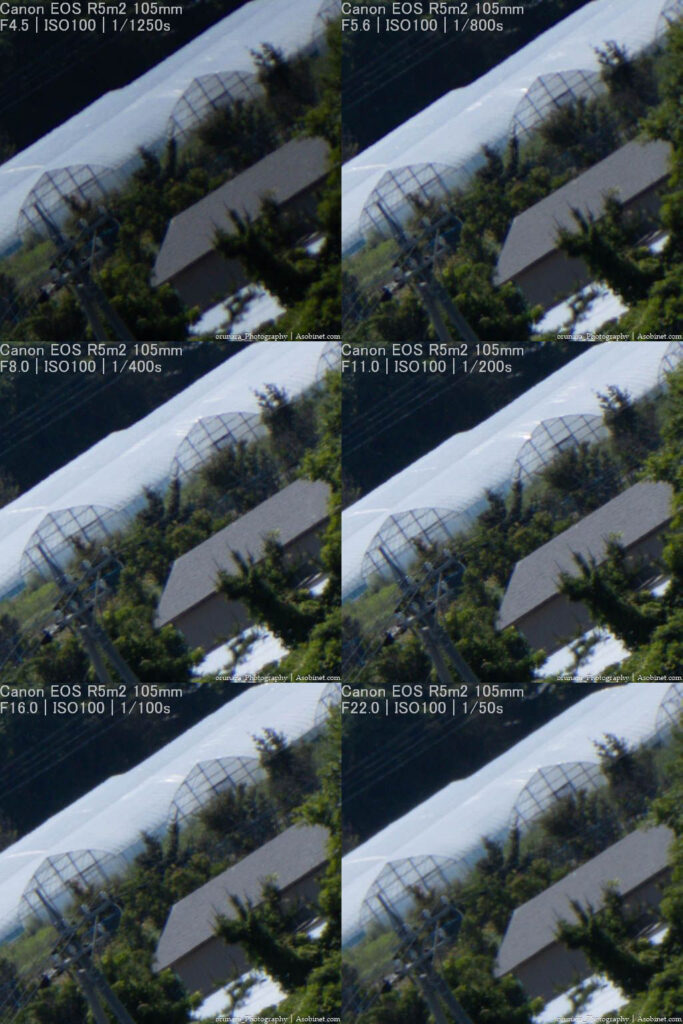
135mm
Centre of frame
Contrast continues to be good, although it appears to be slightly reduced; contrast improves slightly when stopped down to f/8.
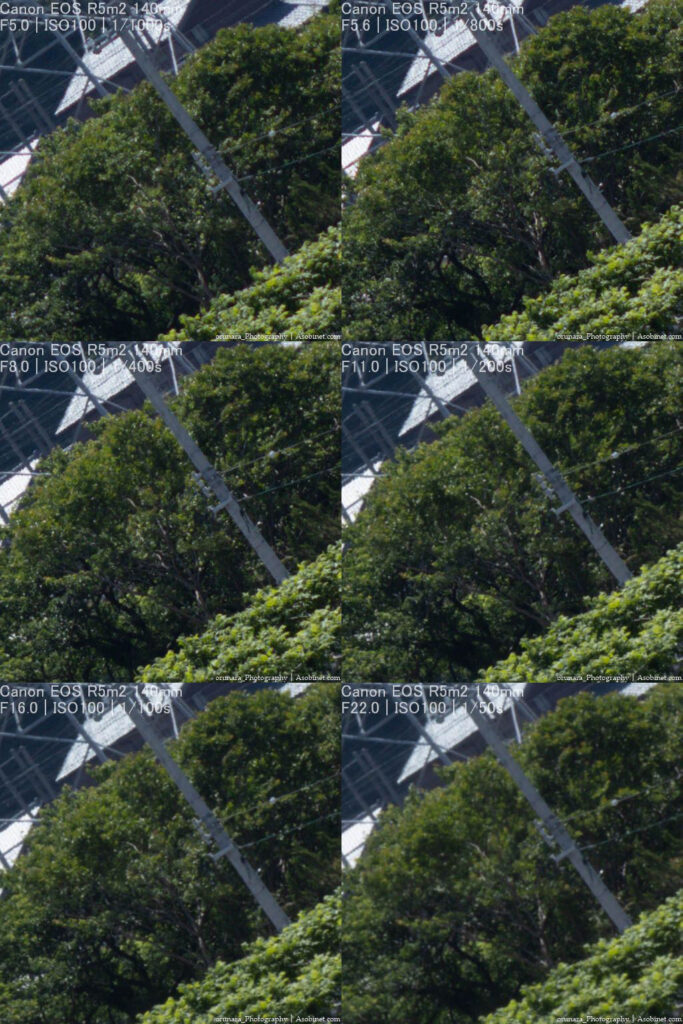
Middle of frame
Results as good as the center.No significant improvement in image quality when stopped down.
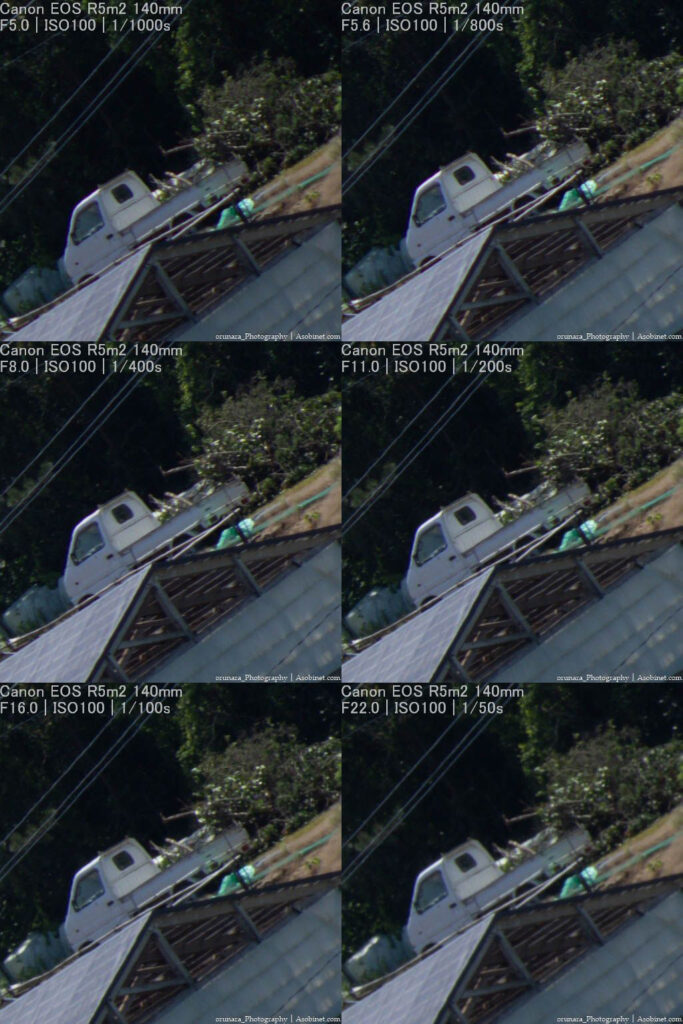
Four corners of frame
There is a sweetness of image quality, like astigmatism, which does not change much as you stop down, and while it improves a bit as you stop down to f/8-f/11, you need to stop down to f/16 or so (even allowing for diffraction effects) to get the aberrations under control.
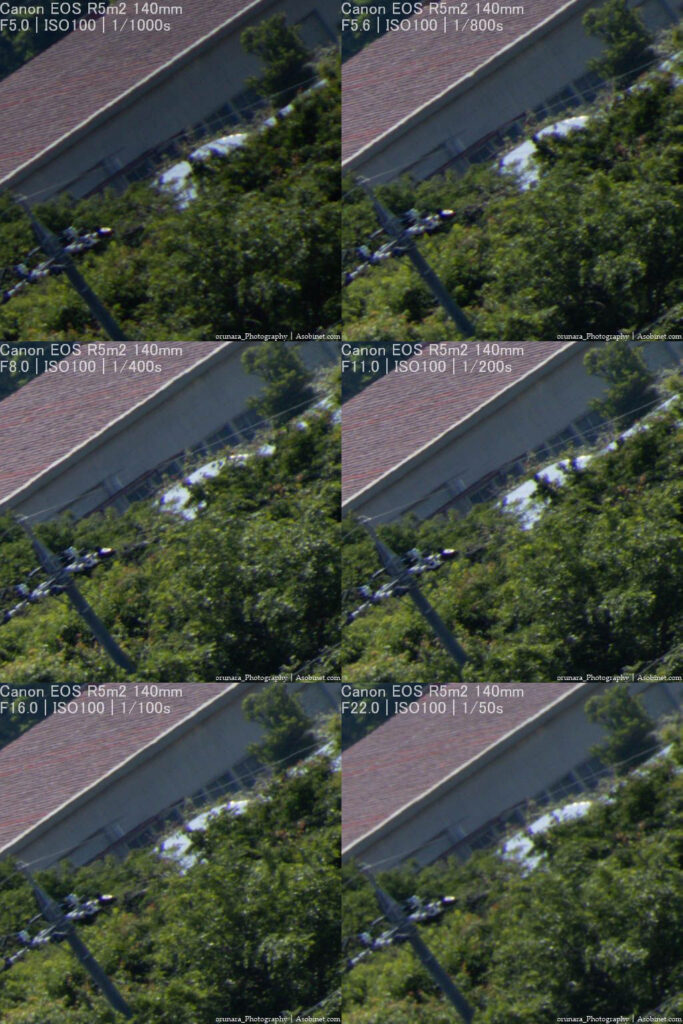
200mm
Centre of frame
Compared to the wide-angle side, the image quality at wide aperture decreases.If you want the best results, you will want to stop down to f/8.By stopping down the aperture, you can get good results first.
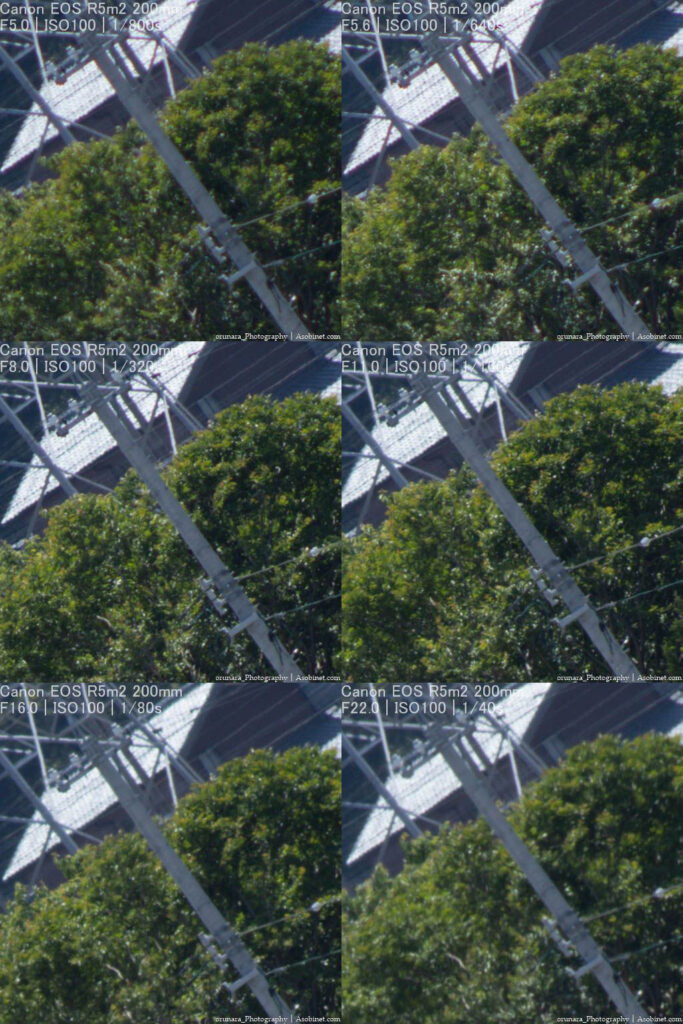
Middle of frame
Soft results near maximum aperture; image quality stabilizes when stopped down to about f/11.However, if you don't want to go into details, the results are not bad even with a wide aperture.
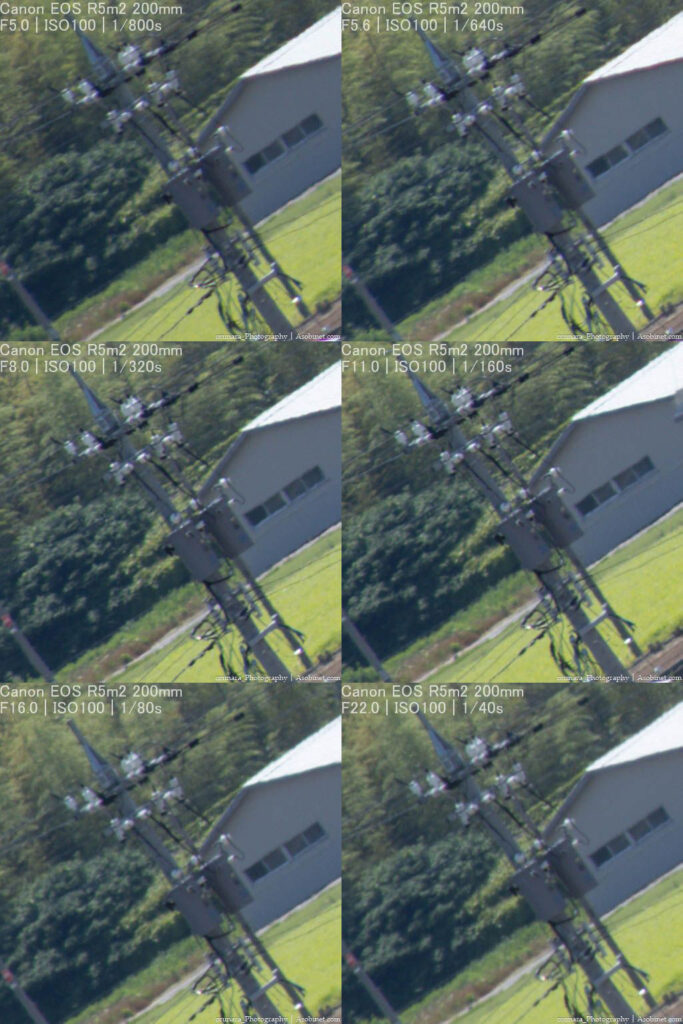
Four corners of frame
Magnification chromatic aberration is noticeable regardless of the aperture.Chromatic aberration correction with the camera or development software is essential.No major distortions in detail, which stabilize when stopped down to f/11-16.
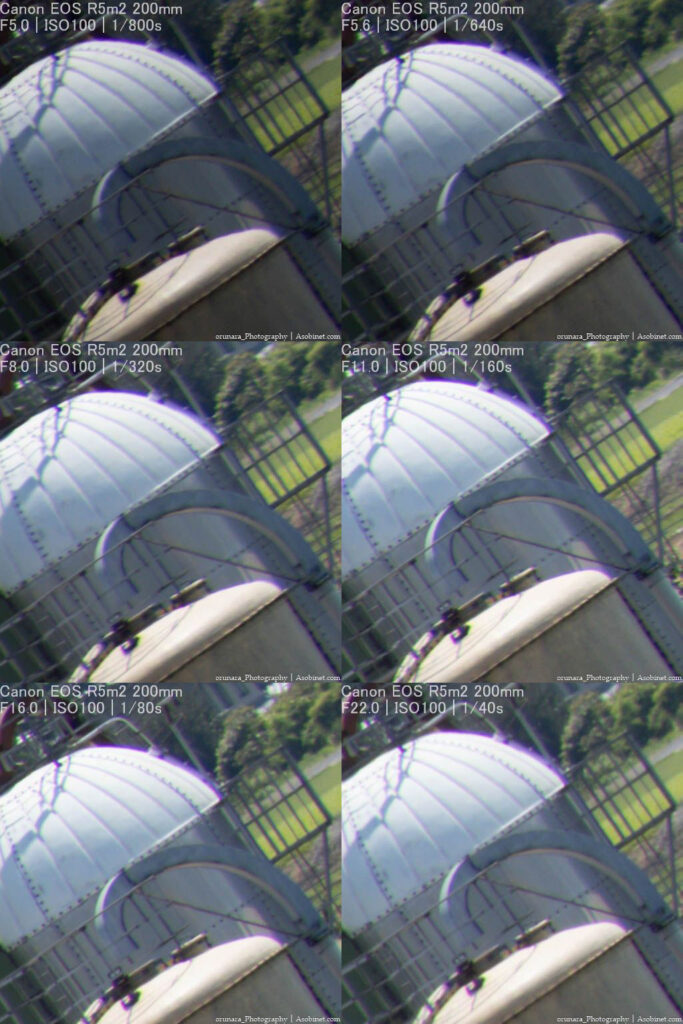
300mm
Centre of frame
Slightly softer results at f/5.6-f/8; stopping down to f/11 improves, but contrast is a bit low.
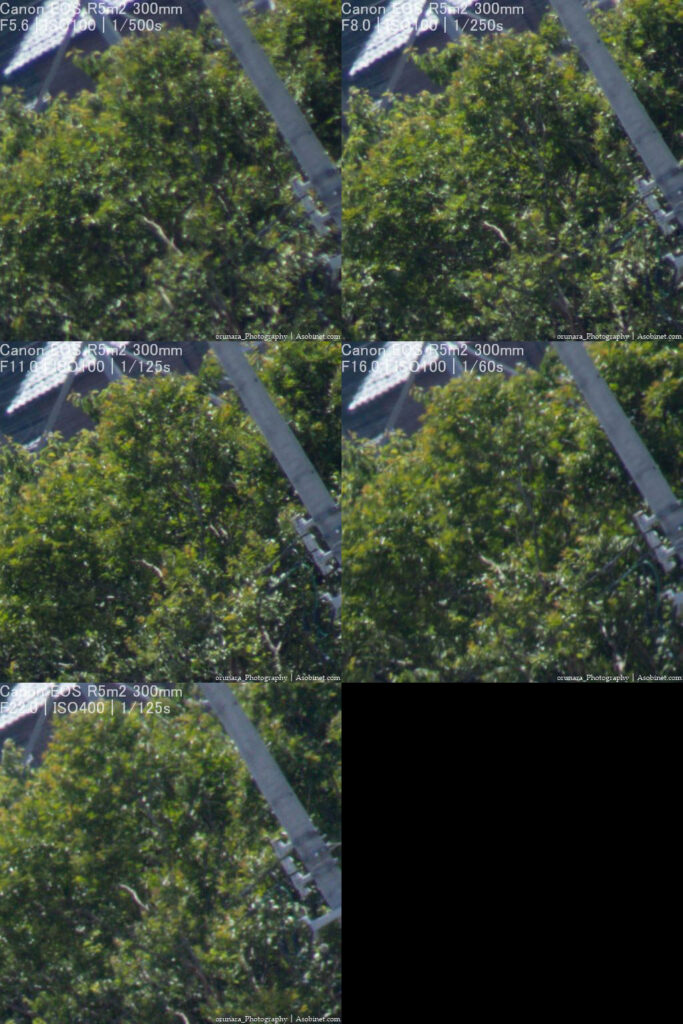
Middle of frame
Detail is a soft result and does not improve much with stopping down.It may not be noticeable if it is a real photo and no cropping/cropping.
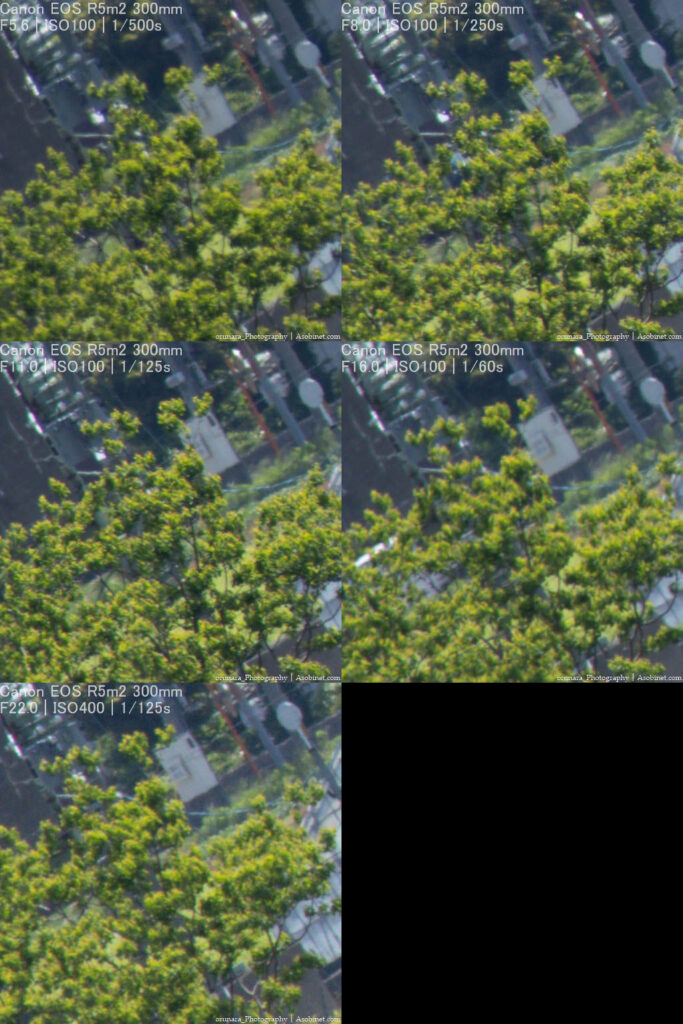
Four corners of frame
As with the 200mm, lateral chromatic aberration is noticeable but correctable.There is no extreme descriptive turbulence, but details are soft and resolution is low.
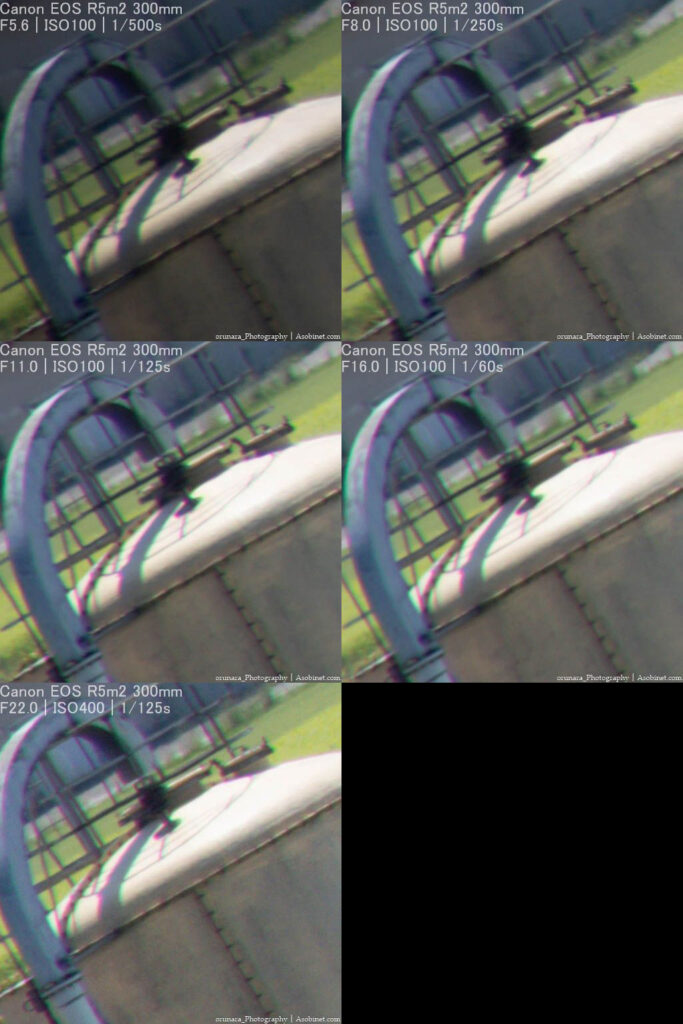
Lateral chromatic aberration
What is lateral chromatic aberration?
A colour shift that appears mainly around the edges and corners of the frame. Unlike longitudinal chromatic aberration, the effect of correcting this aberration using the aperture is small, so it is necessary to correct it at the stage of optical design. However, it is possible to digitally correct chromatic aberration using the image processing engine built into the camera body. This makes it possible to correct chromatic aberration, which is difficult to correct optically alone, and recently, there have been lenses that prioritise the correction of other aberrations over chromatic aberration correction. In particular, mirrorless systems tend to rely on post-processing.
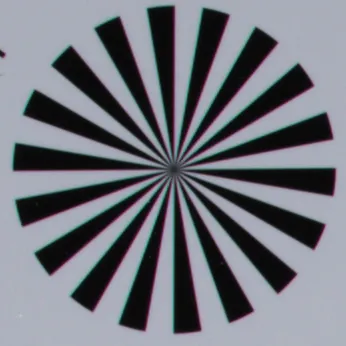
300mm
Chromatic aberration continues to occur, but is more modest than at 135mm and 200mm.
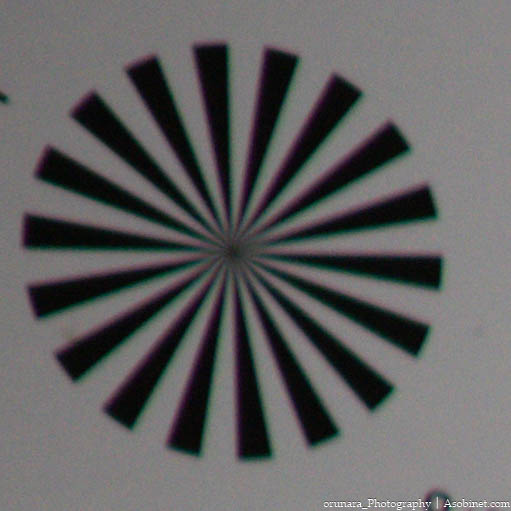
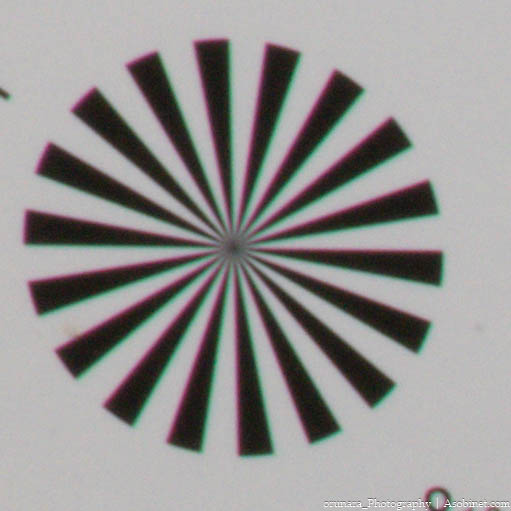
200mm
As with the 135mm, chromatic aberration is noticeable, but the amount of aberration appears to be slightly reduced.
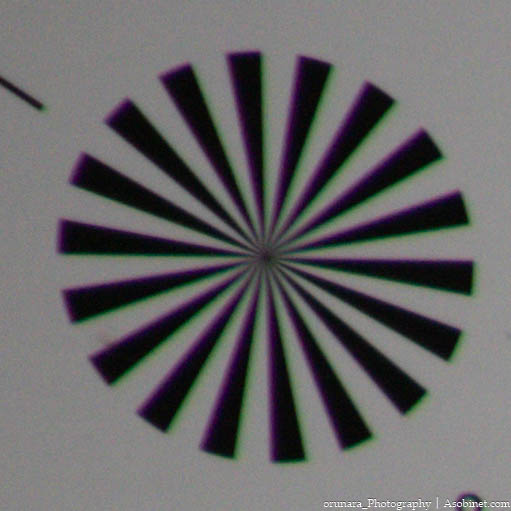
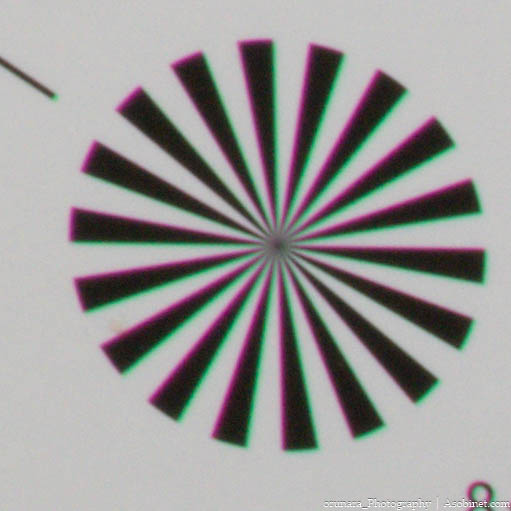
135mm
Unlike the wide-angle side, lateral chromatic aberration is noticeable in the corners of the frame.This is not improved by stopping down the aperture and requires processing in the camera or developing software.This is an easily correctable aberration, but the coloration to the bokeh cannot be corrected in many cases.
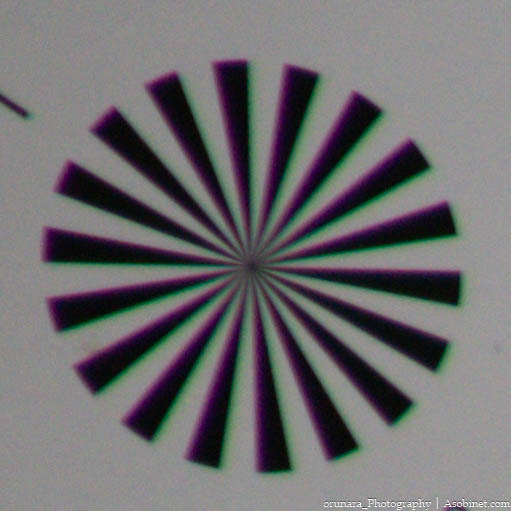
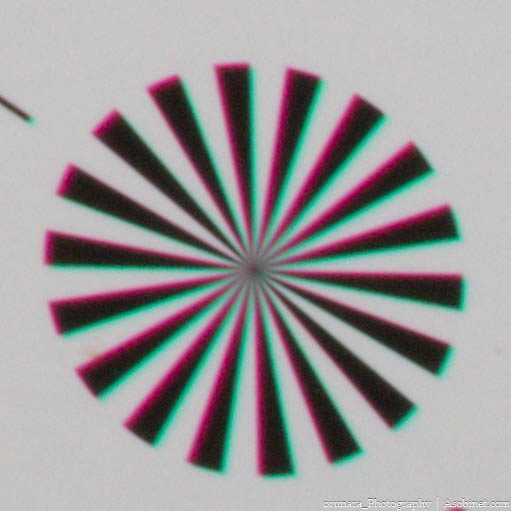
100mm
No problem as with 75mm.
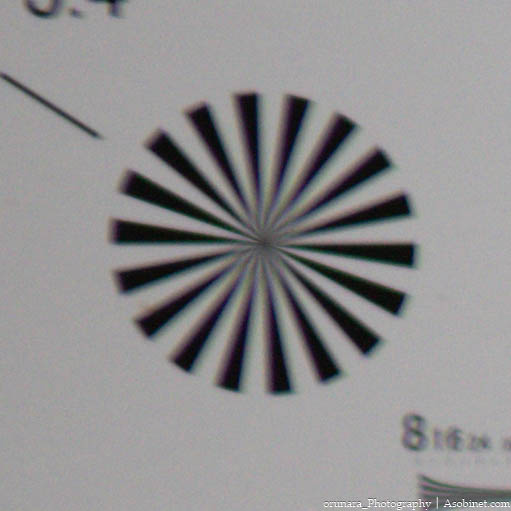
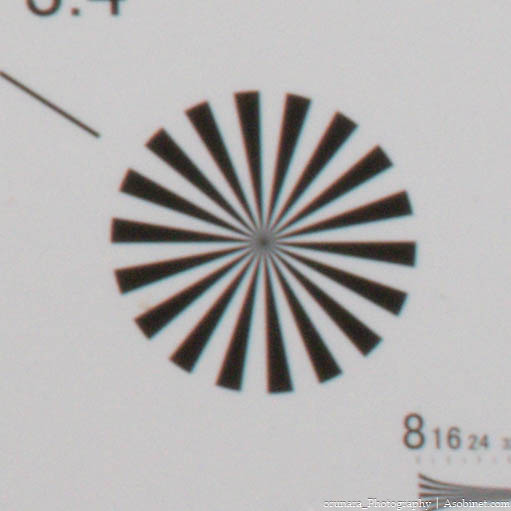
75mm
No problem without correction on the software side.It is optically corrected.
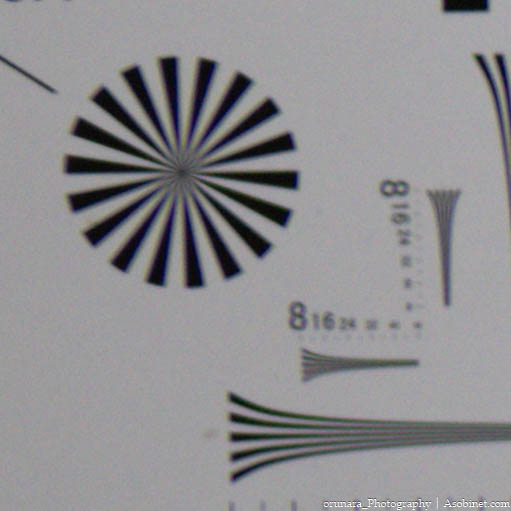
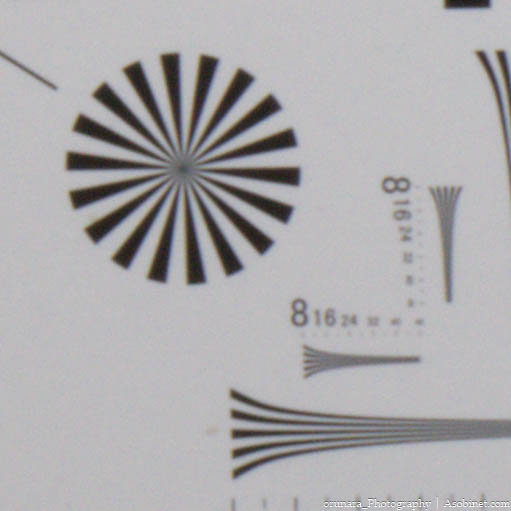
Longitudinal Chromatic Aberration
What is longitudinal chromatic aberration?
Longitudinal chromatic aberration is a colour shift that occurs in front of and behind the plane of focus. If the area in front of the plane of focus is mainly purple fringing, and the area behind the plane of focus has unnatural green colouring in the out-of-focus area, then the main cause is likely to be longitudinal chromatic aberration. This is more likely to occur with large-aperture lenses such as F1.4 and F1.8, and in such cases it is necessary to close down the aperture to improve the situation. It is possible to correct this using development software, but it is more difficult to process than lateral chromatic aberration, so it is best to suppress the aberration optically if possible. However, when suppressing longitudinal chromatic aberration with a large-aperture lens, the product price tends to be higher. Lenses that perfectly correct for longitudinal chromatic aberration have high contrast on the focal plane from wide open aperture, so you can expect a punchy resolution.
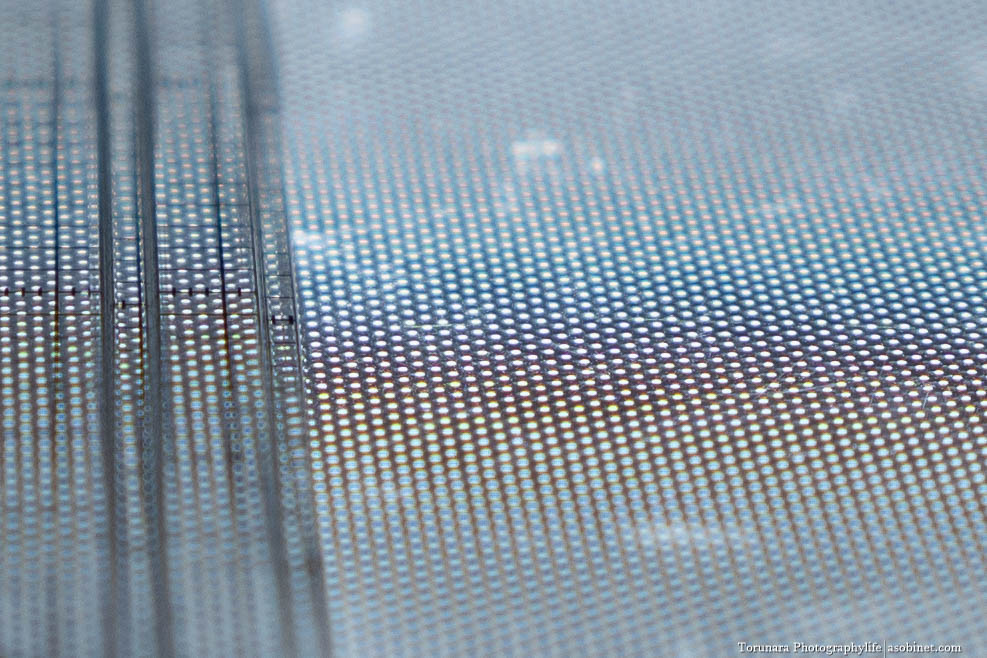
75mm
This telephoto zoom lens has a small aperture, but it still has residual axial chromatic aberration.Chromatic aberration is noticeable near the maximum aperture and improves when stopped down about 2 stops.
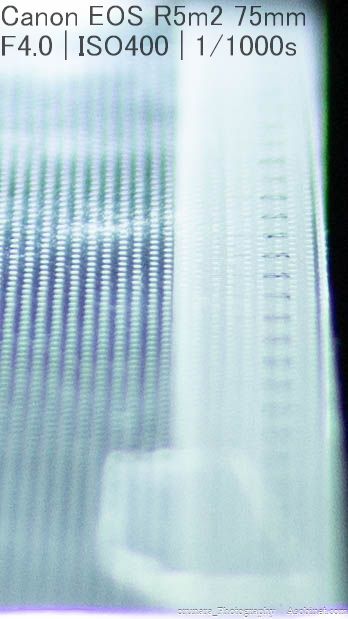

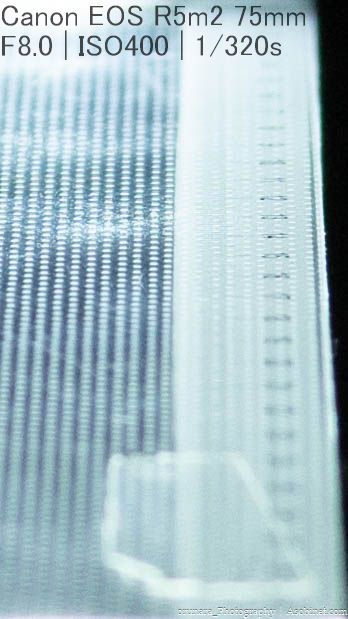
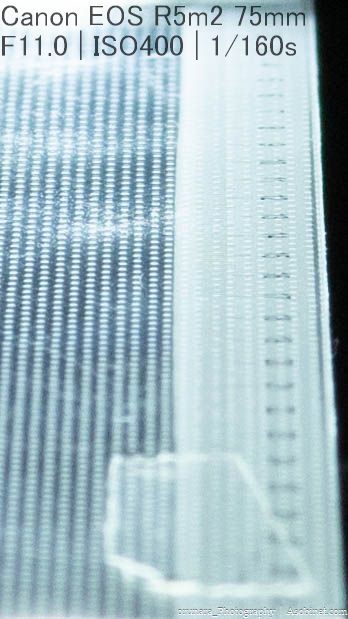
135mm
Chromatic aberration occurs near the maximum aperture, although not as much as at the 75mm.
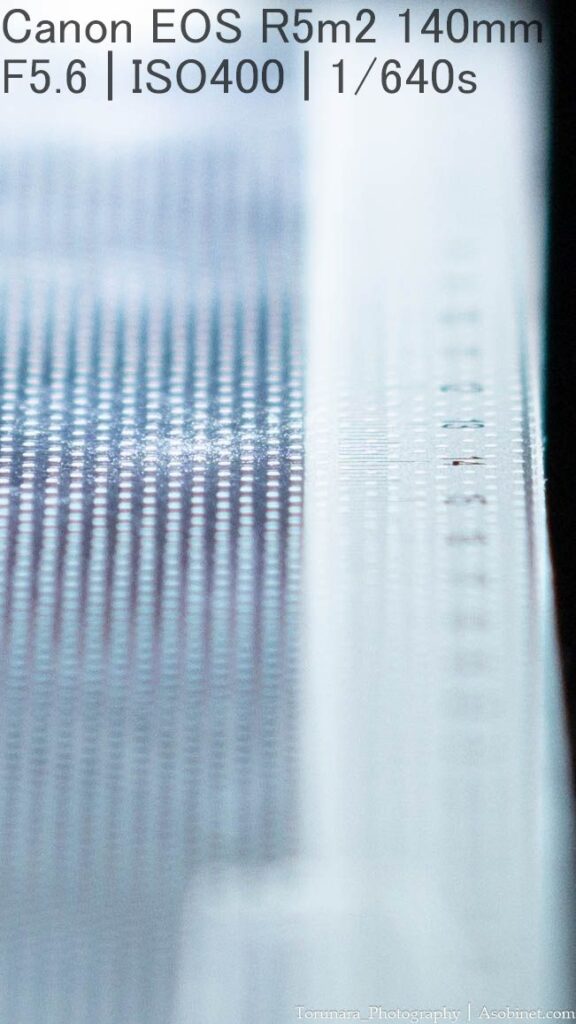
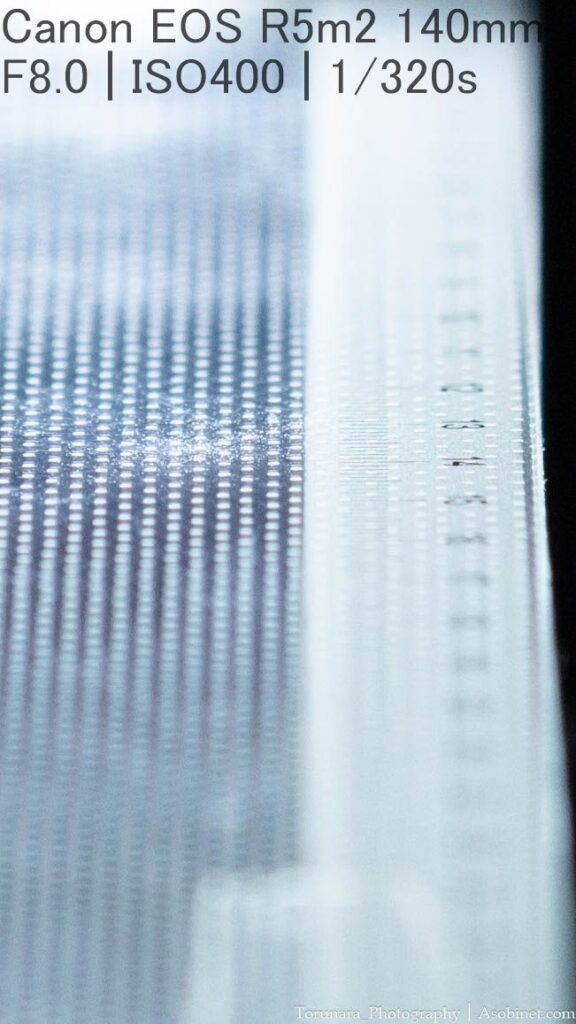
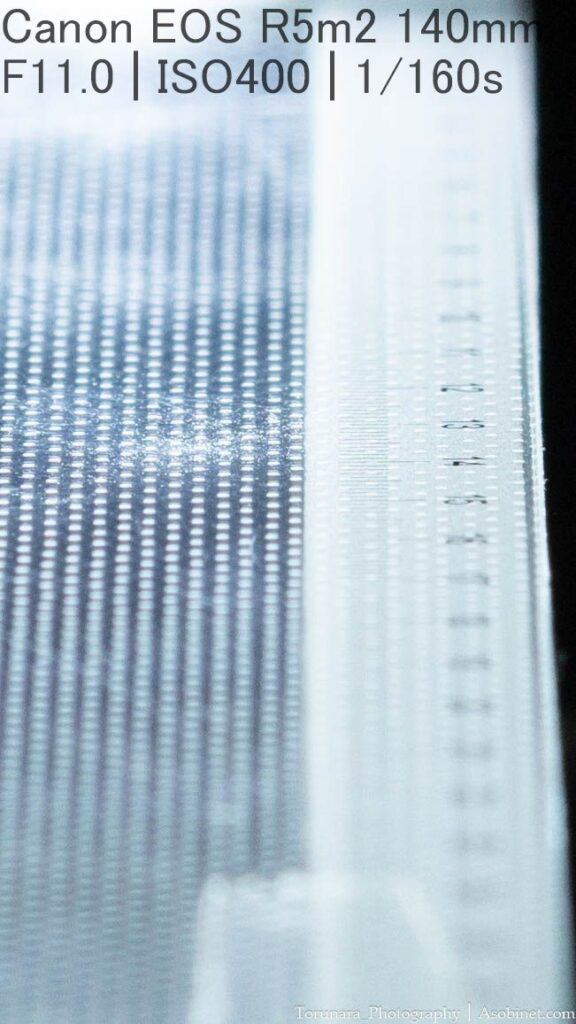
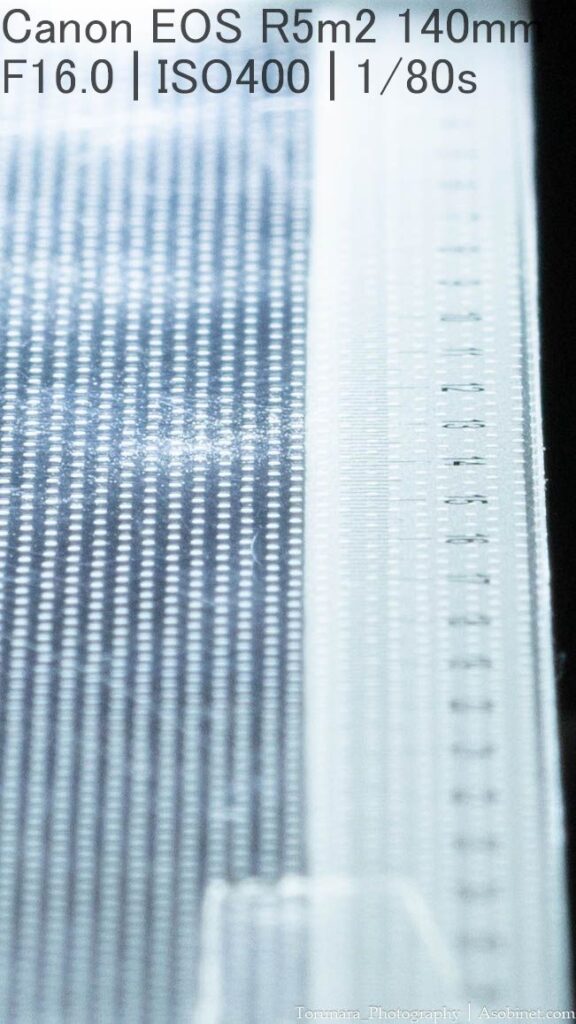
300mm
Chromatic aberration, which was mild at the mid-zoom range, is noticeable again.Chromatic aberration occurs in front of and behind the focus plane when the aperture is wide open, and it does not improve until the aperture is stopped down about 2 stops.Considering that the maximum aperture is f/5.6, it is difficult to balance the correction of chromatic aberration with exposure.
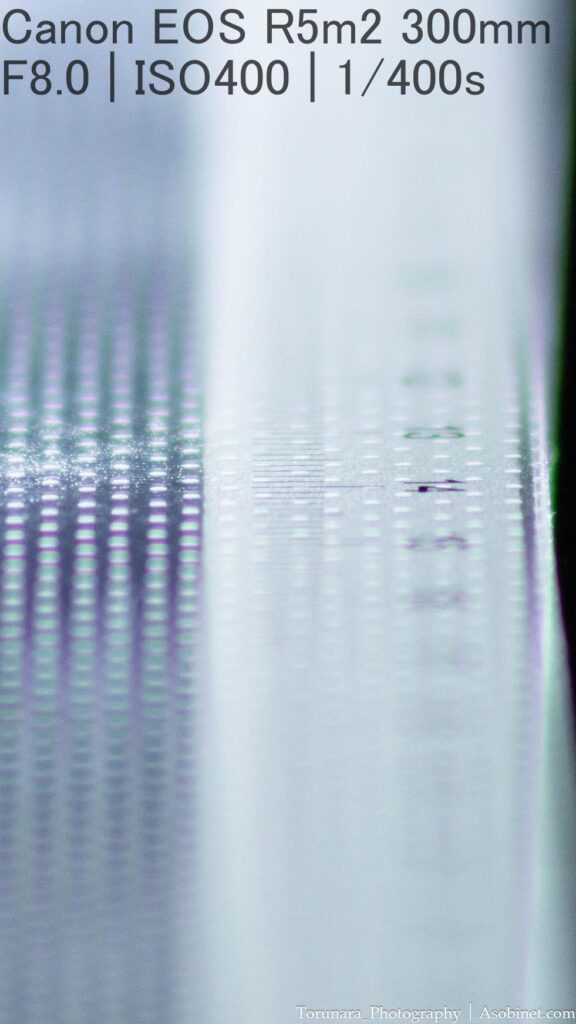
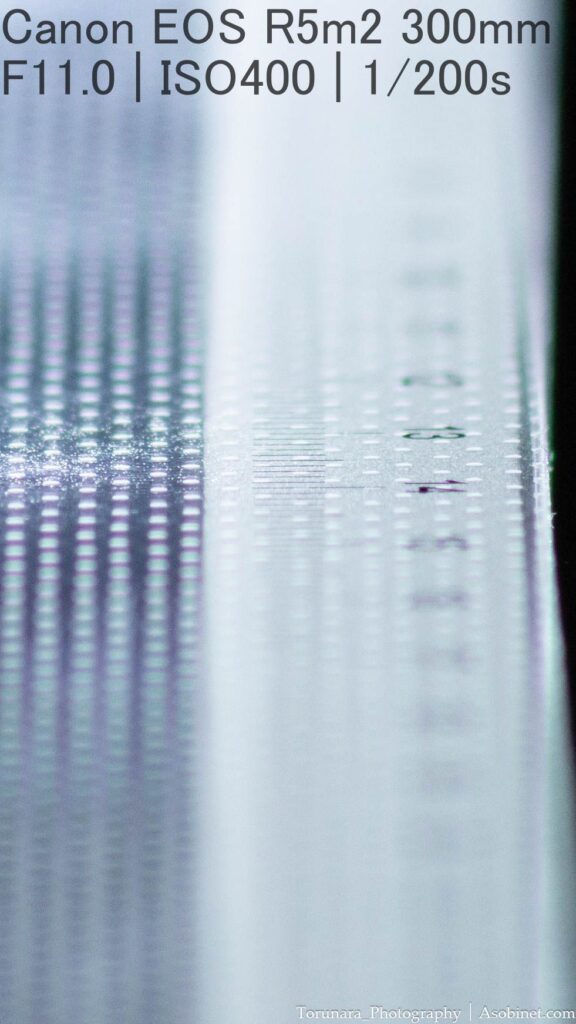

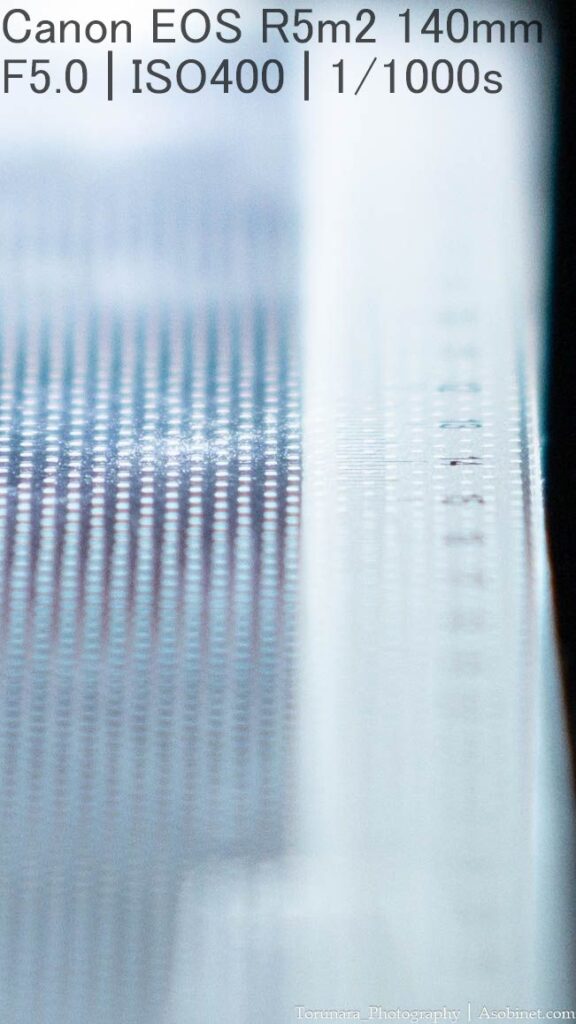
Distortion
What is Image Distortion?
Distortion refers to the phenomenon where straight lines do not appear straight on a flat surface. It is particularly noticeable when there are many straight lines, such as when there are man-made objects or a horizon in the image, and it can be divided into two types: barrel distortion, which is similar to that of a fisheye lens, and pincushion distortion, where the centre of the image appears compressed.
This is an aberration that can be corrected relatively easily, but it is difficult to manually correct distortions with complex shapes. In this case, a correction profile that matches the lens is required.
75mm
Even without correction, there is almost no distortion.
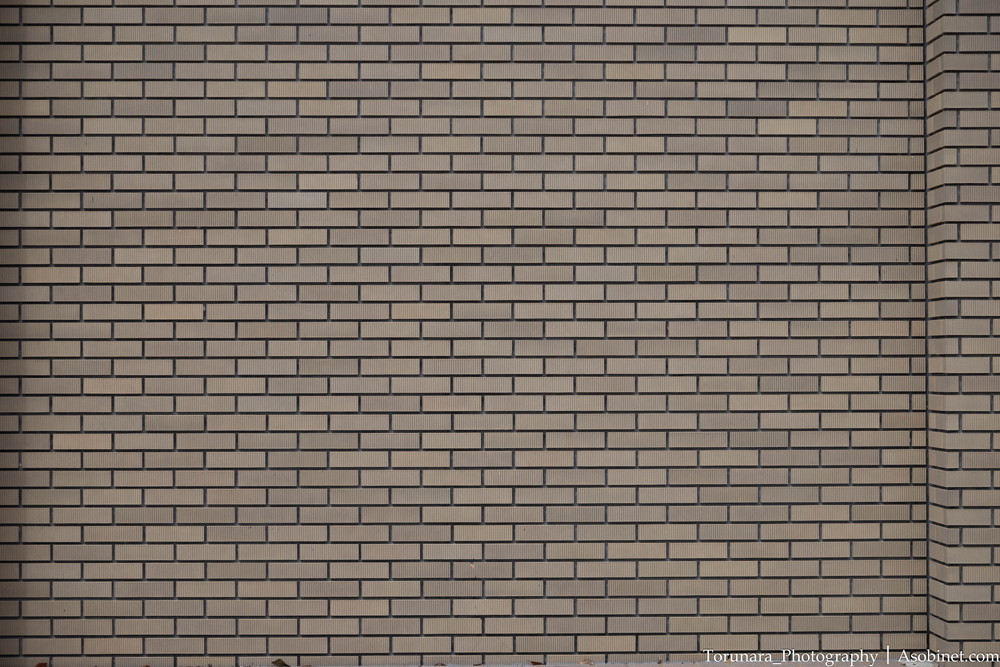
100mm
Mildly threadbare and negligible.
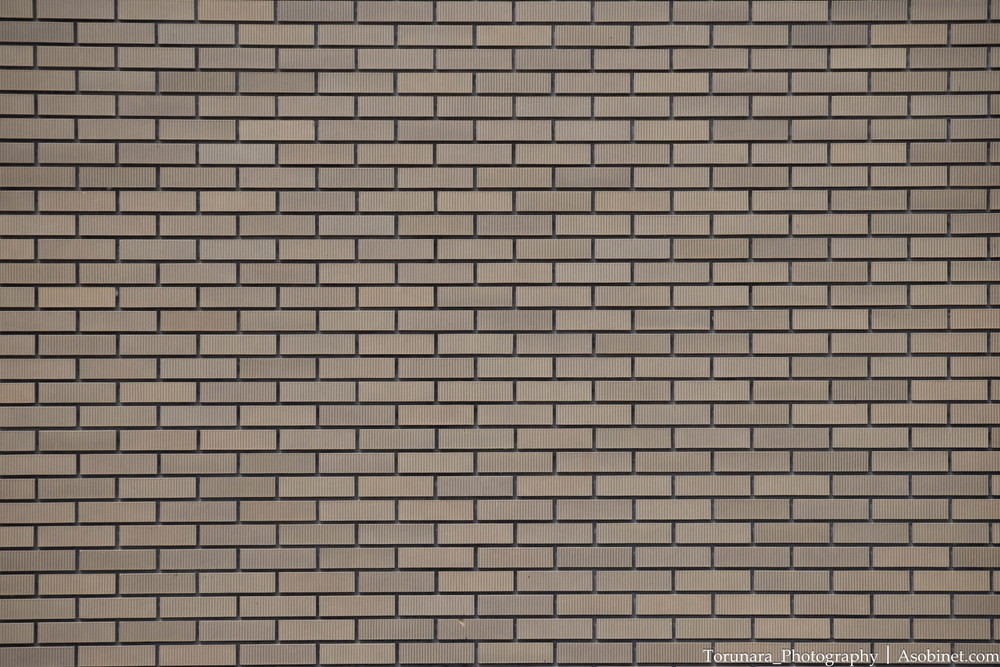
135mm
It has more string distortion than the 100mm, which may need to be corrected in some situations.However, it is an aberration that can be easily corrected and should not be a problem in actual shooting.
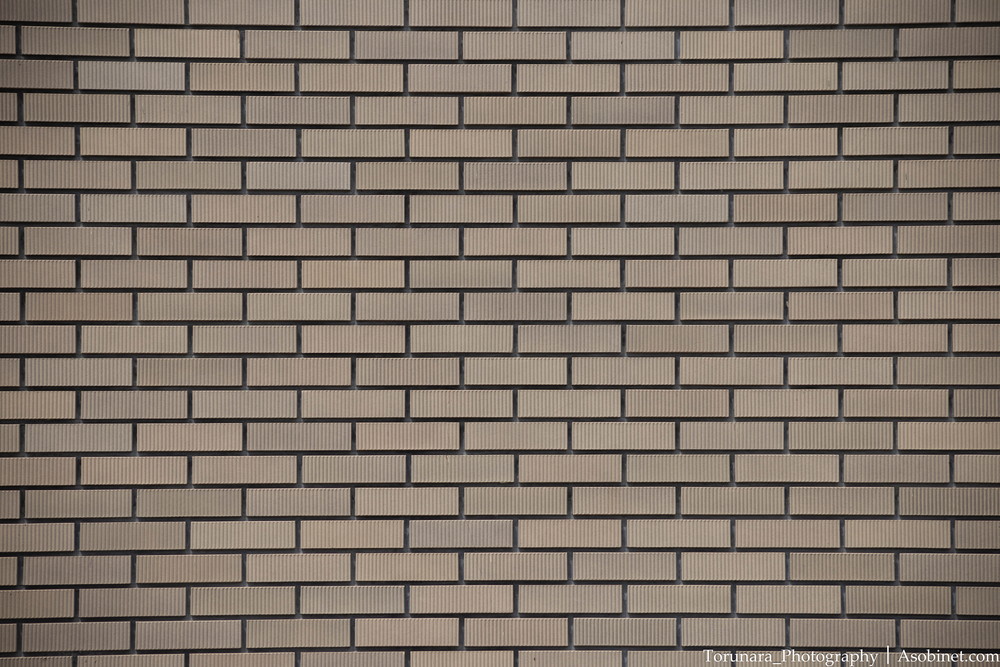
200mm
As with the 135mm, there is a somewhat noticeable aberration.
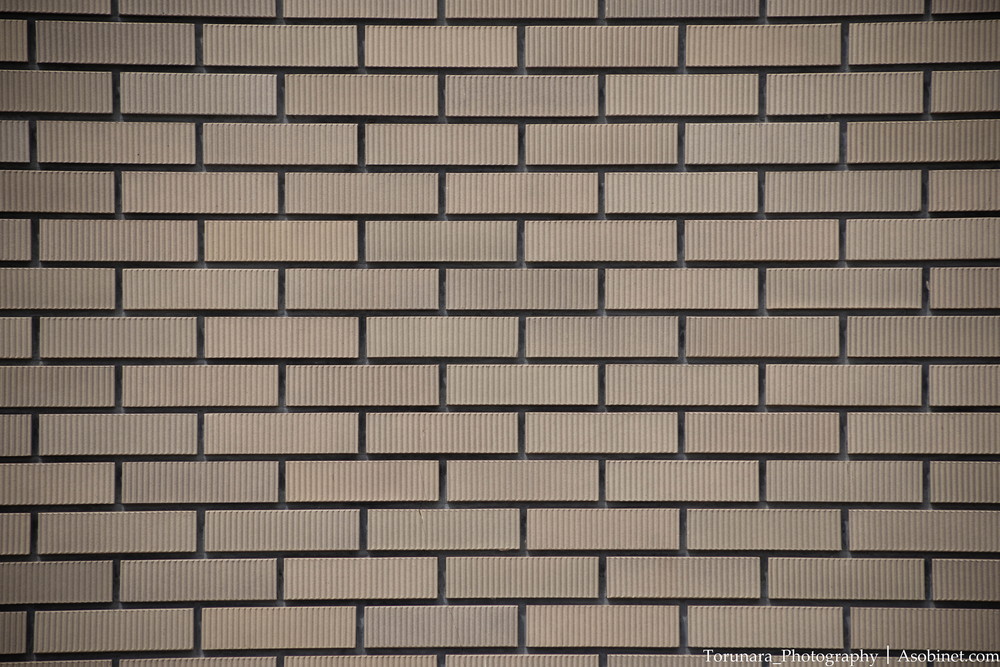
300mm
It is comparable to 135mm and 200mm.The distortion is not as bad as that of mirrorless lenses, which are designed to be corrected.
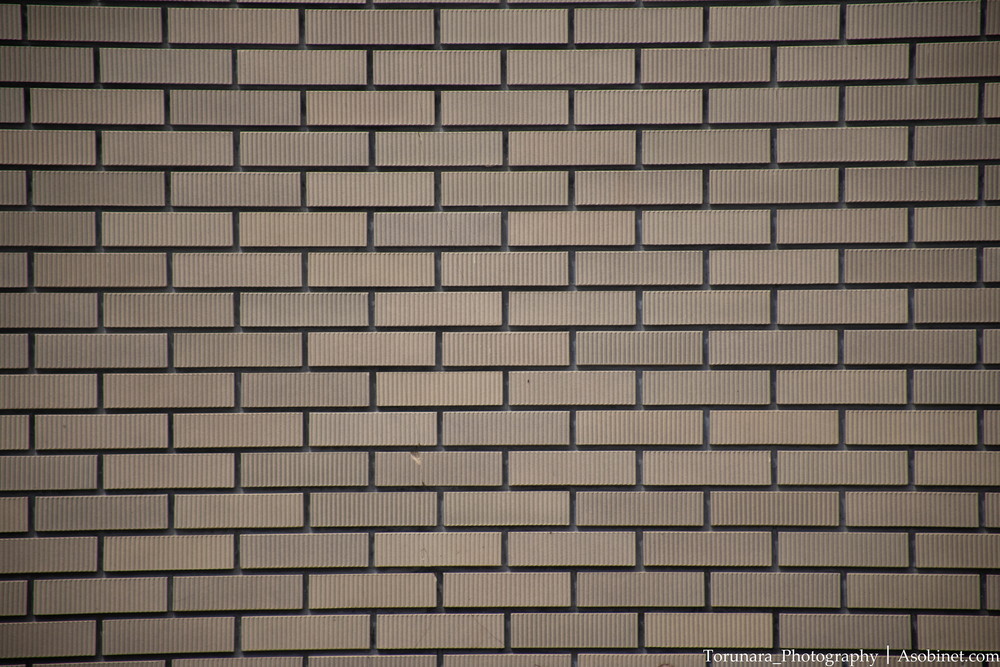
Coma aberration
What are coma and astigmatism?
Coma and astigmatism are mainly the failure of a point of light to appear as a point of light in the four corners of the frame. For example, this can be seen in artificial lights, stars and illuminations in night scenes. Even during the day, bright point light sources such as sunlight filtering through trees can also have an effect. As this problem cannot be corrected in post-processing, it is necessary to correct it optically.
Although it can be improved by narrowing the aperture, in situations where shutter speed is important, such as night scenes and astrophotography, it is not possible to narrow the aperture, and optical correction may be necessary.
75mm
Checking the details, there are some deformities, but they are negligible.
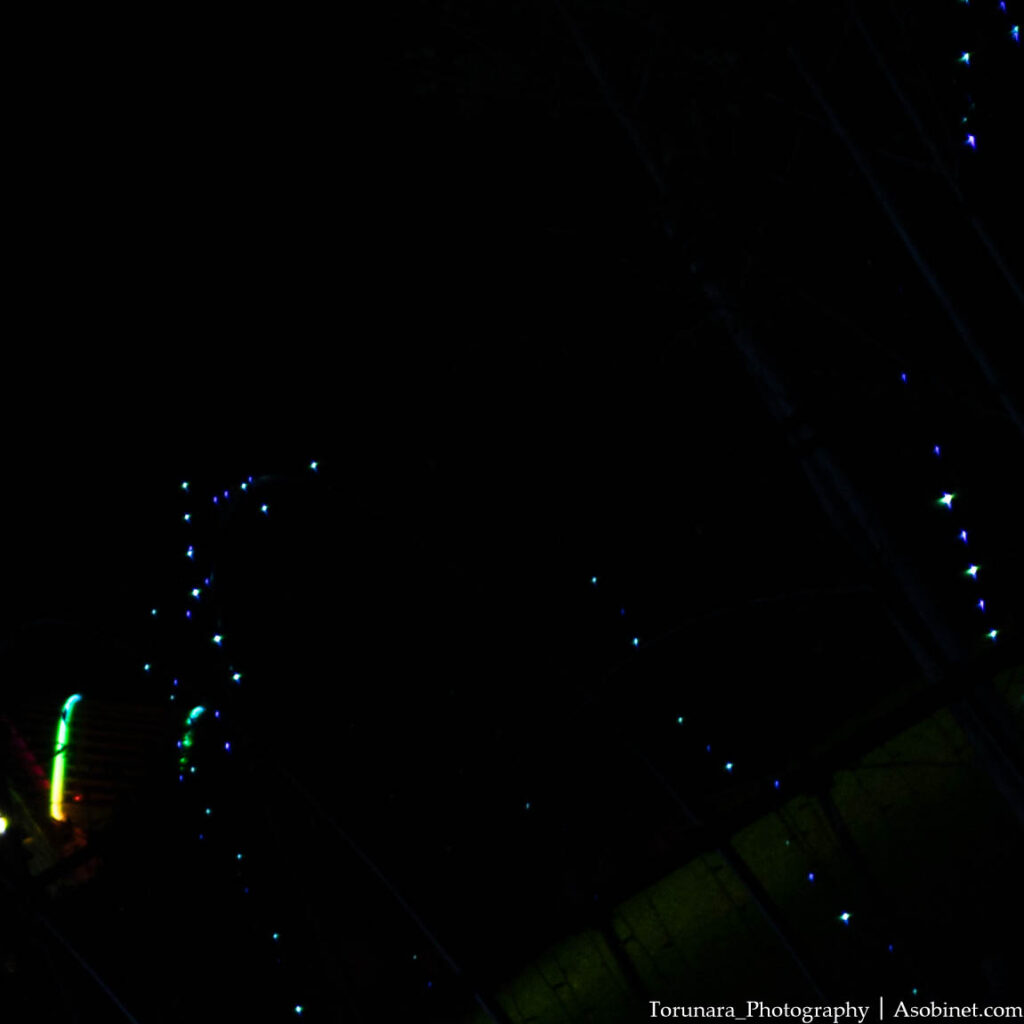
135mm
Slightly noticeable coma flare, which improves when stopped down about 2 stops.
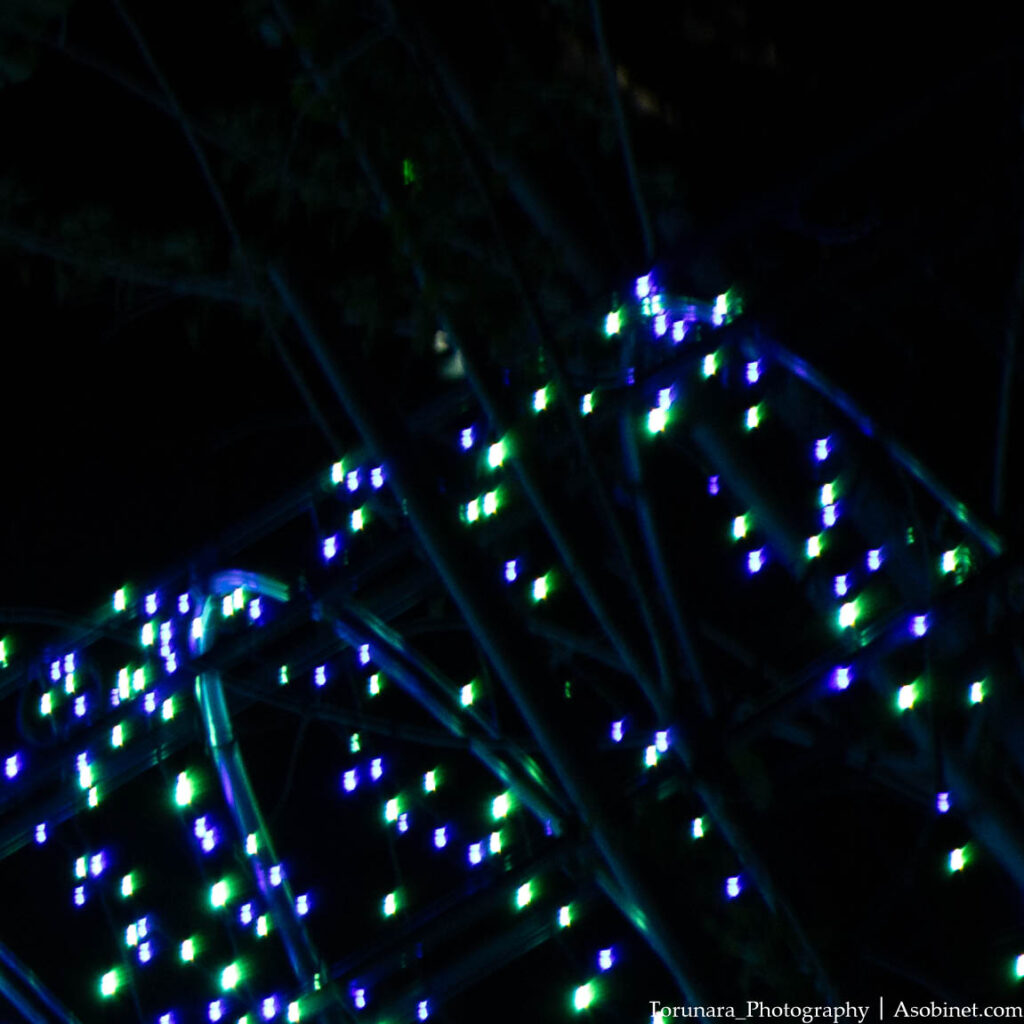
300mm
As with the 135mm, there is a somewhat noticeable coma flare.To suppress it completely, you need to stop down the lens by about 3 stops.
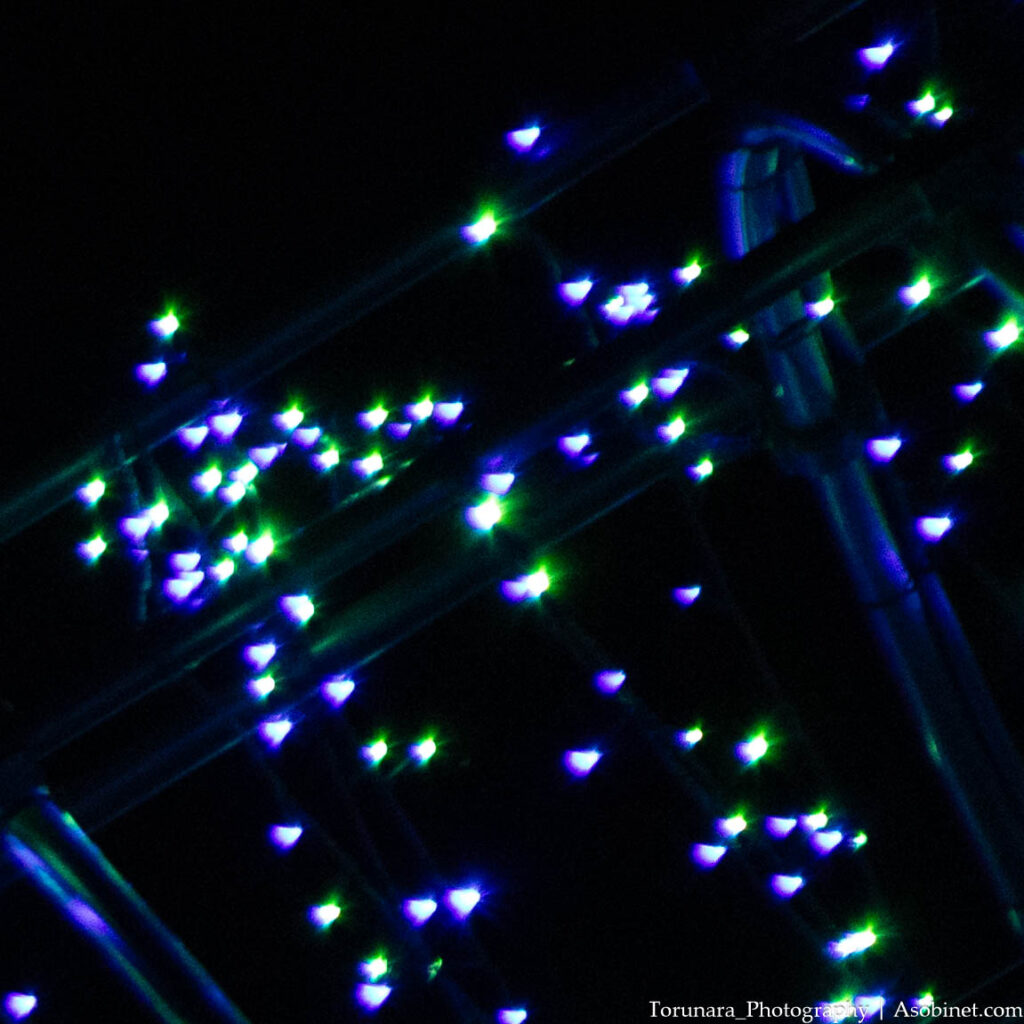
Spherical aberration
75mm
The image is not in perfect correction, and a clear difference in bokeh quality occurs between the front and rear.At close range, the background blurs as if blurred, and there are signs that the front bokeh is a two-line blur with strong edges.
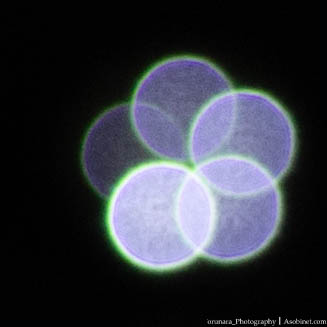
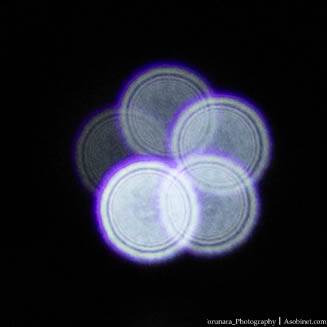
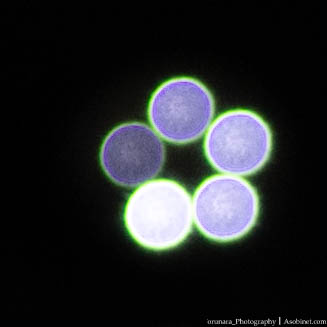
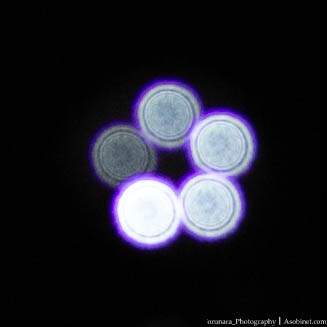
240mm
The difference is not as great as 75 mm.
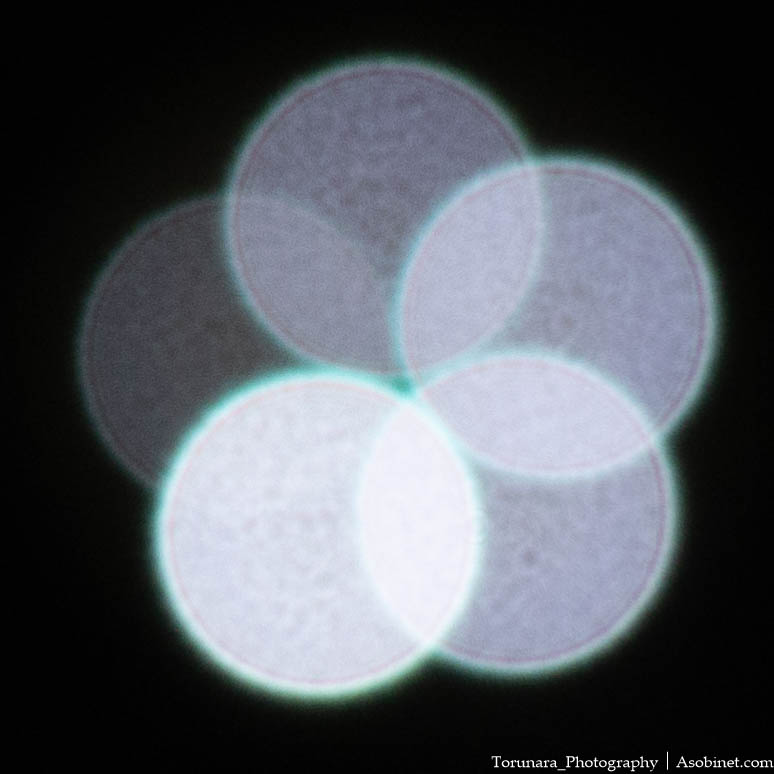
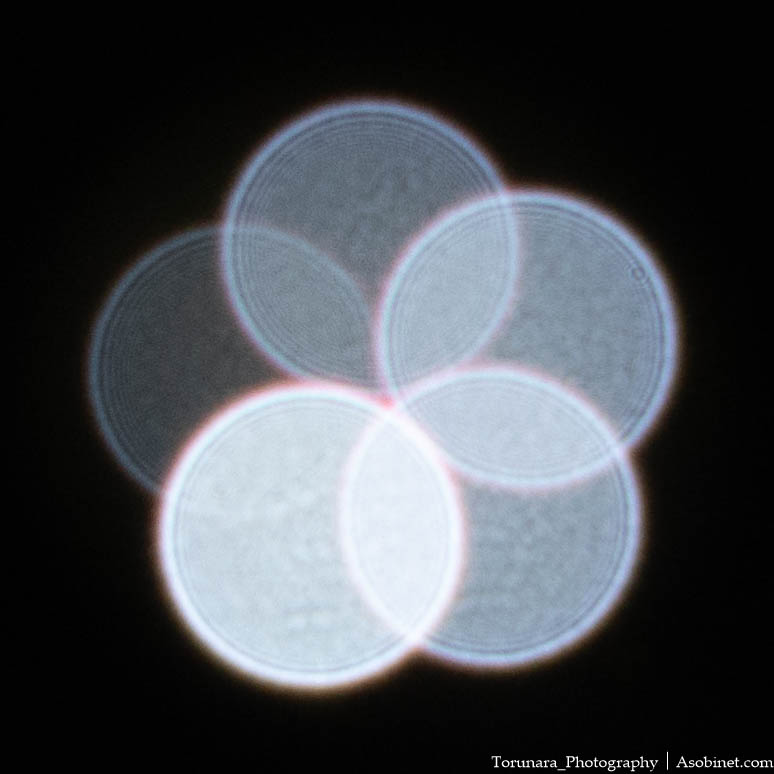
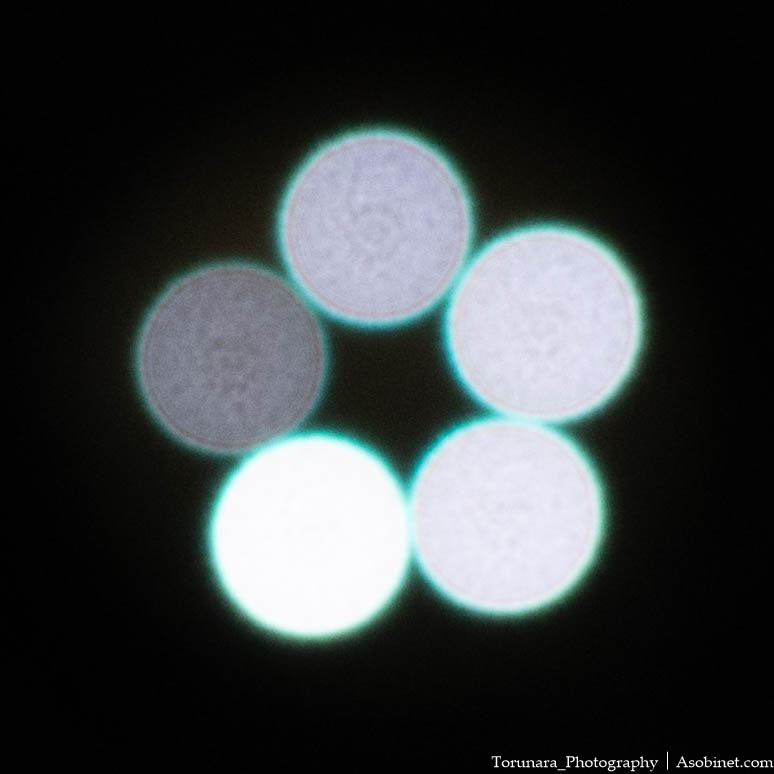
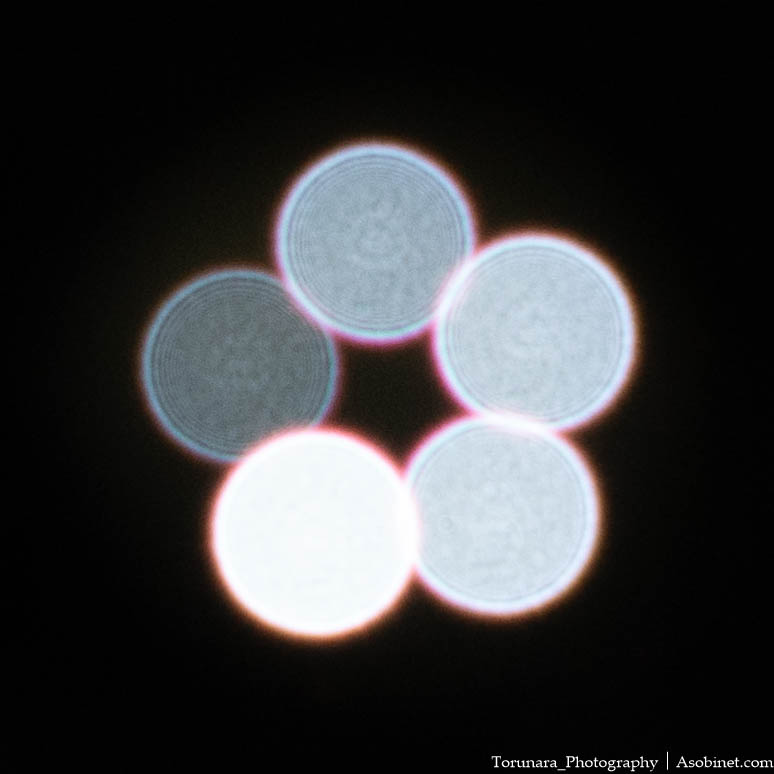
Foreground and background blur
What is a beautiful blur and a busy blur?
The evaluation of bokeh tends to be subjective, but I personally think that ‘soft, diffused bokeh’ is beautiful, while ‘sudden bokeh or hard-edged bokeh’ is not so good (or is a unique depiction). However, everyone has their own preferences, so there may be people who prefer the opposite. For reference, here are some examples of ‘blurred bokeh’ and ‘hard-edged bokeh’. The difference in the tendency of the depiction is mainly due to the state of correction of spherical aberration, and when the bokeh on either side is soft, there is a tendency for the bokeh on the other side to become hard.

Back Blur
Although there is some chromatic aberration on the axis, the bokeh itself is smooth and soft, which is surprisingly good for an inexpensive telephoto zoom lens priced at 30,000 yen.


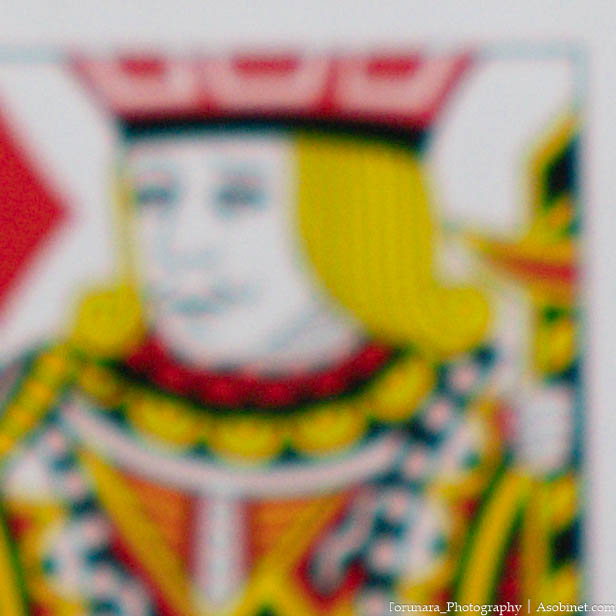
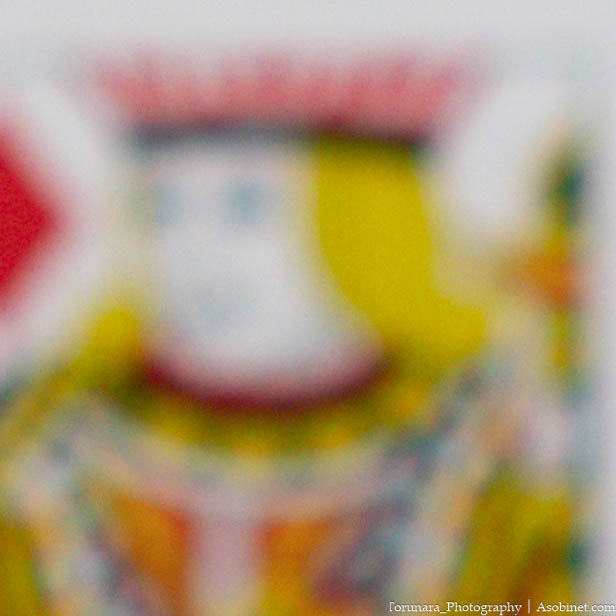
Front Blur
In contrast to the rear blur, the image is slightly fringed. However, the texture is not so much that the two-line blur is noticeable.

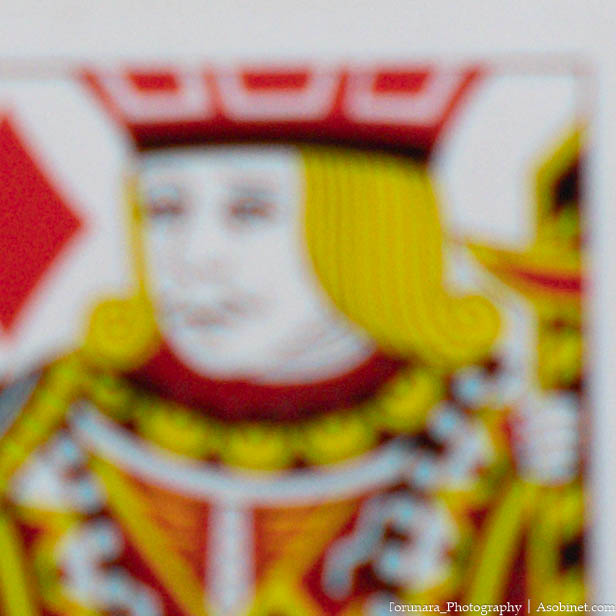
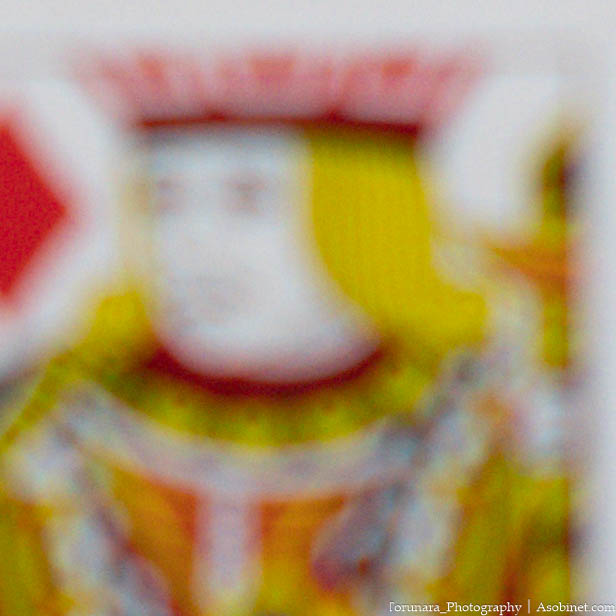
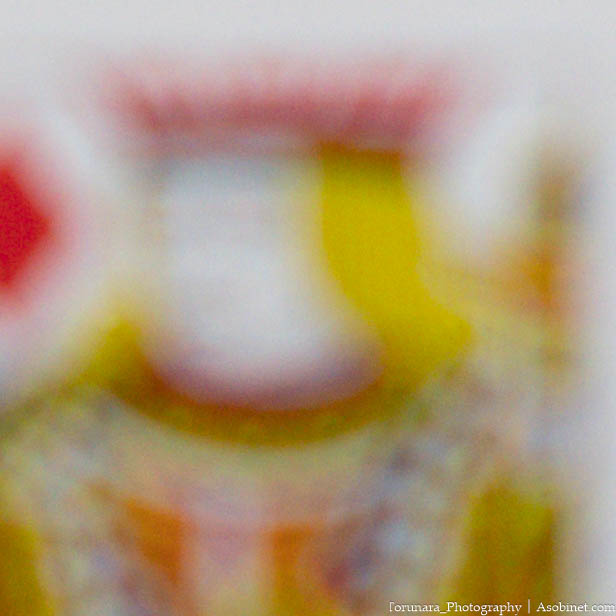
Bokehball
Effects of Vignetting and Spherical Aberration
If vignetting is strong, the bokeh at the four corners of the frame will be elliptically deformed or partially missing. The only way to solve this problem is to close down the aperture. However, closing down the aperture will make the bokeh smaller and in some cases the shape of the aperture blades may become visible, so it is necessary to compromise on the amount of vignetting depending on the situation.
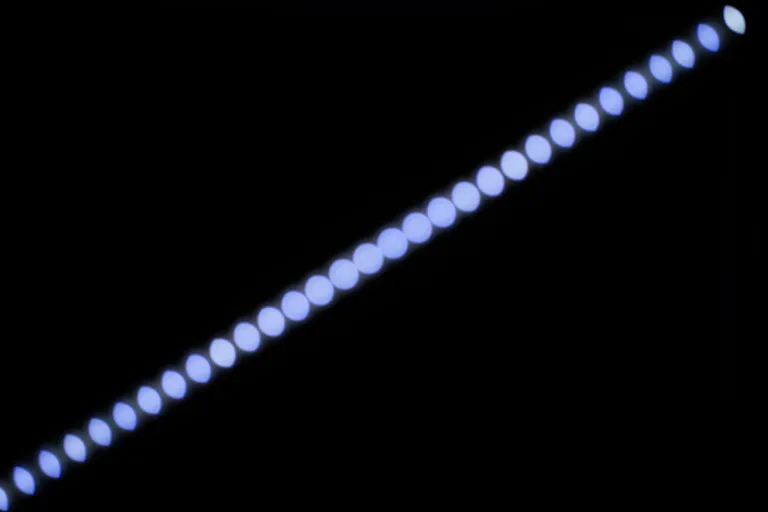
If the amount of vignetting is small, it is possible to get a circular bokeh from wide open to the four corners. Ideally, a lens with little vignetting is preferable, but to eliminate it, it is necessary to fundamentally increase the size of the lens. There is a need to strike a balance between portability and cost, so some kind of compromise is necessary.
If the correction of spherical aberration is not perfect, there will be a difference in the depiction of the bokeh in front and behind (as shown in the review of bokeh in front and behind). In this case, one side will have a smooth depiction with blurring, while the other side will have a hard depiction like double-line bokeh.
75mm
The long minimum focus distance and large aperture f-number do not allow for large ball blur.The rendering is good, but is strongly affected by aperture eclipse toward the corners.
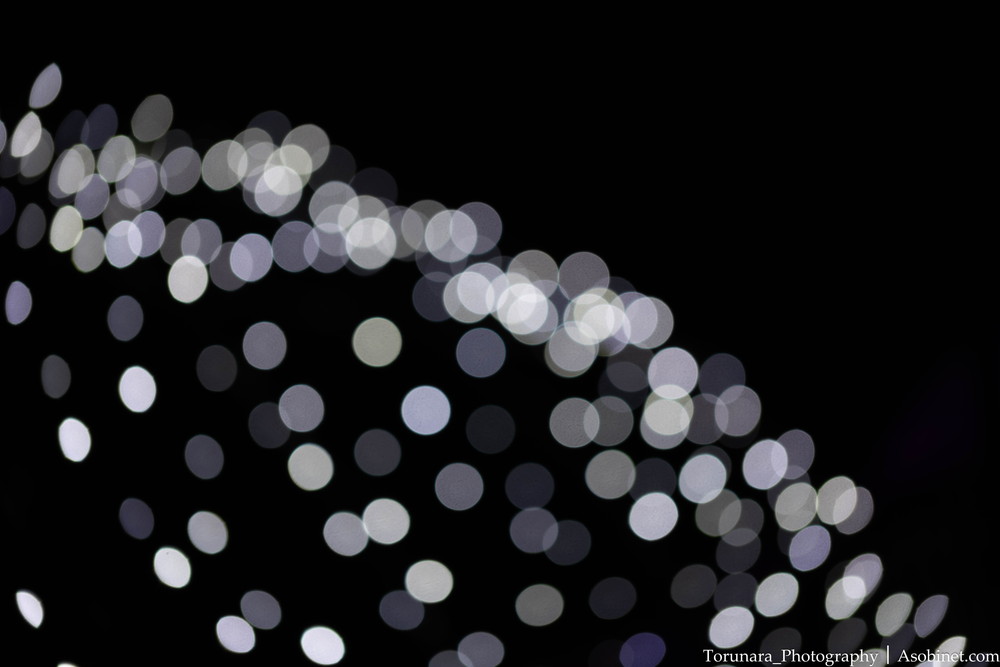
135mm
The bokeh continues to be smooth, but deformation in the corners is very noticeable due to aperture eclipse.
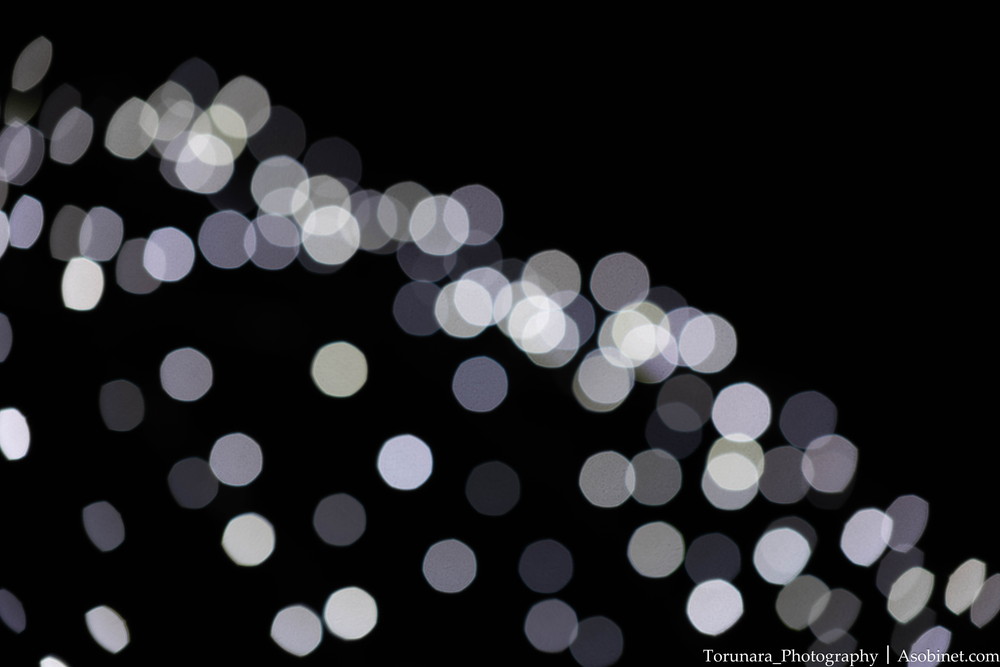
200mm
Smooth with large bokeh.The effect of aperture eclipse is still strong.
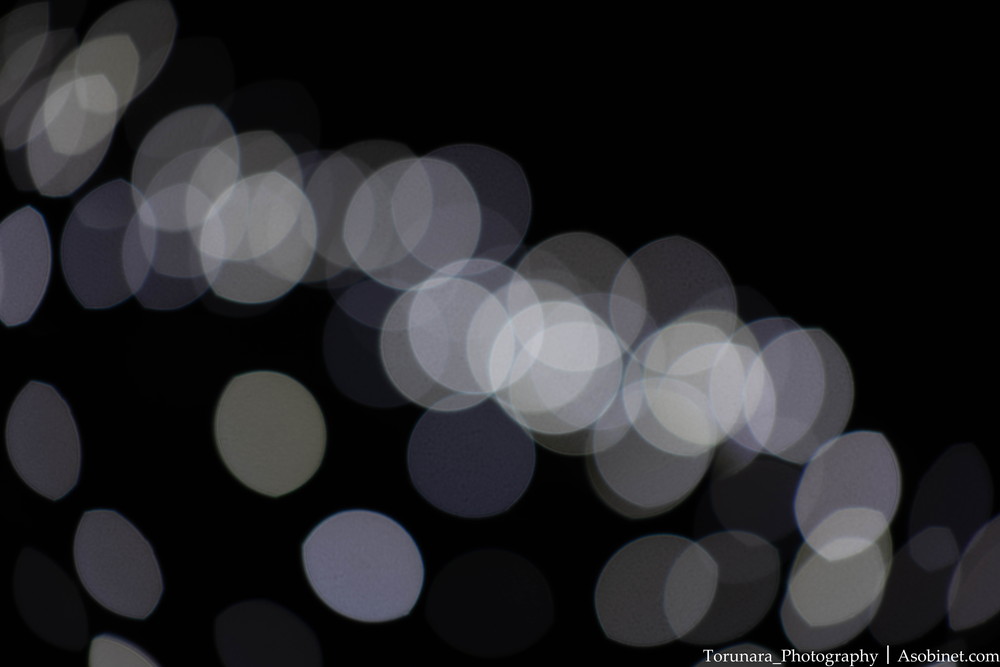
300mm
Same tendency as the 200mm.However, it allows for the largest bokeh, which is less noticeable in some situations.
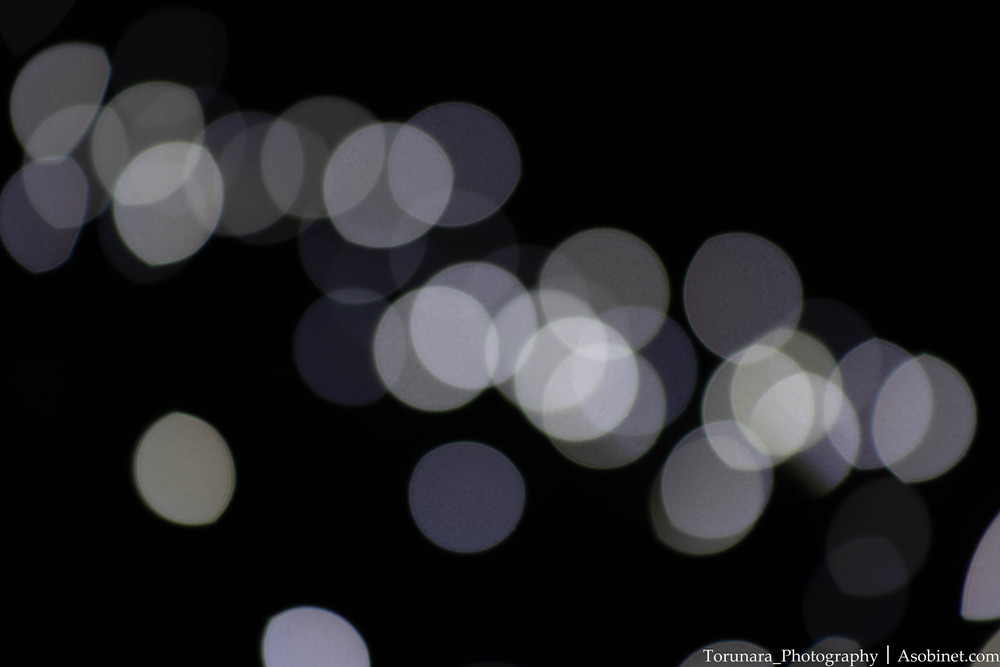
Sample of a boke
The following are the results of taking pictures of a tripod that is 170cm tall while changing the distance and aperture.
75mm
The depth of field on the 75mm f/4 is not shallow enough to isolate the background.Also, if you look closely at the details, the bokeh is a little hard around the edges.Still, it is not bad for a ¥30,000 telephoto zoom lens, and the closer you get to the subject, the less problematic the bokeh becomes.
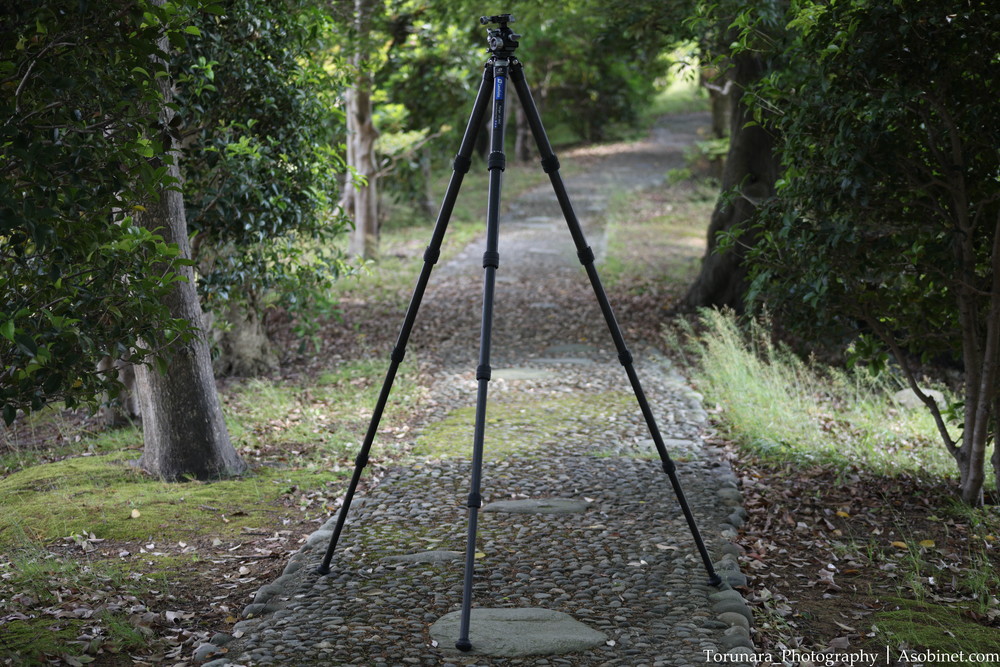

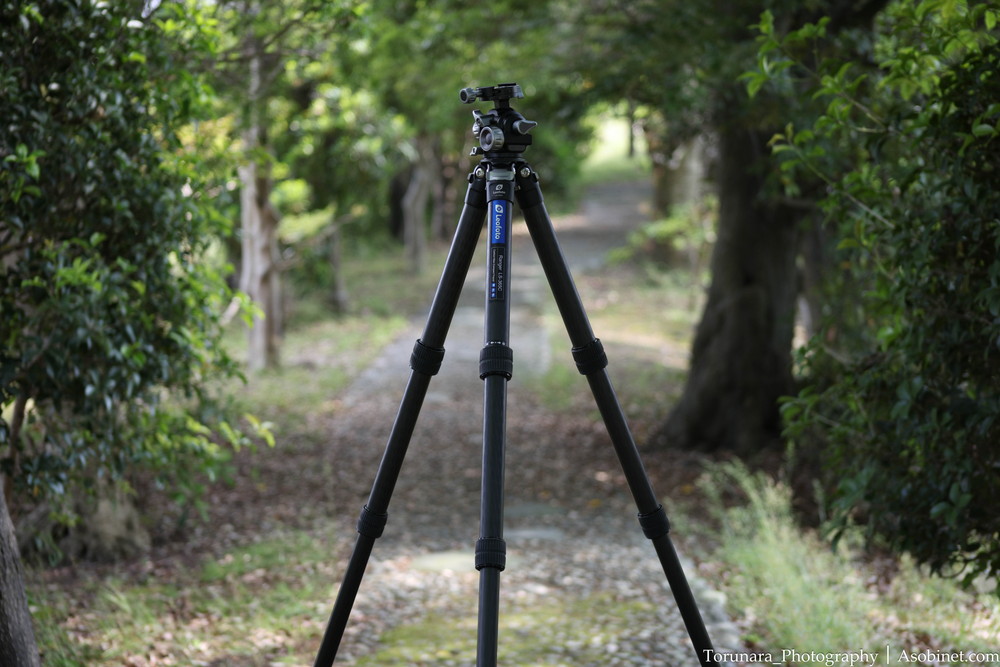
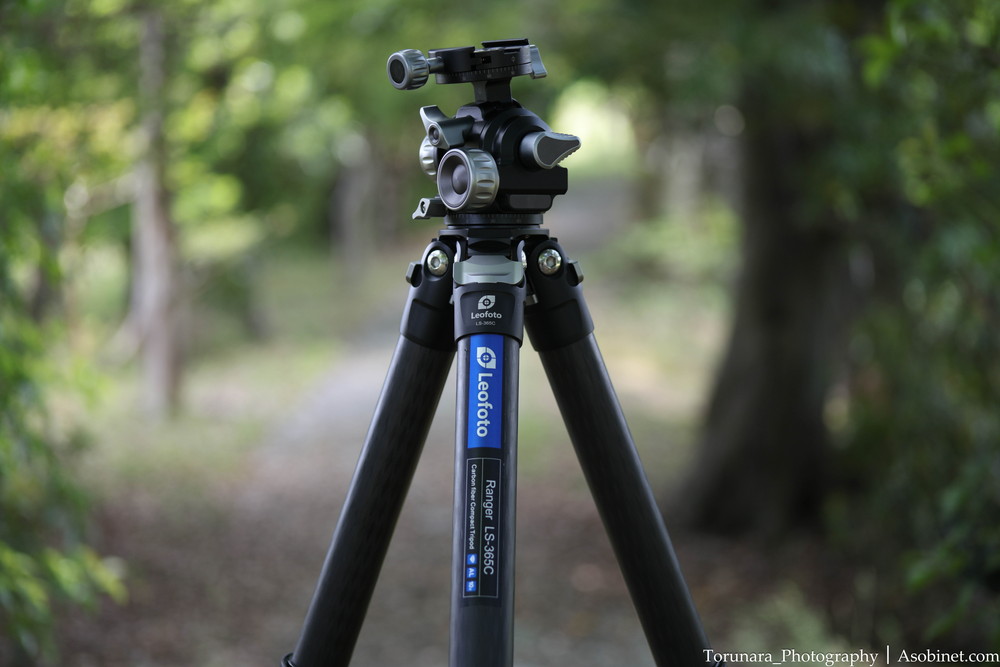
135mm
Compared to the 75mm, the bokeh edges are softer and the texture has changed to a more pleasing appearance.The texture continues to be positively appreciated for a ¥30,000 zoom lens.When you get close to your subject, it works a bit like a portrait lens.
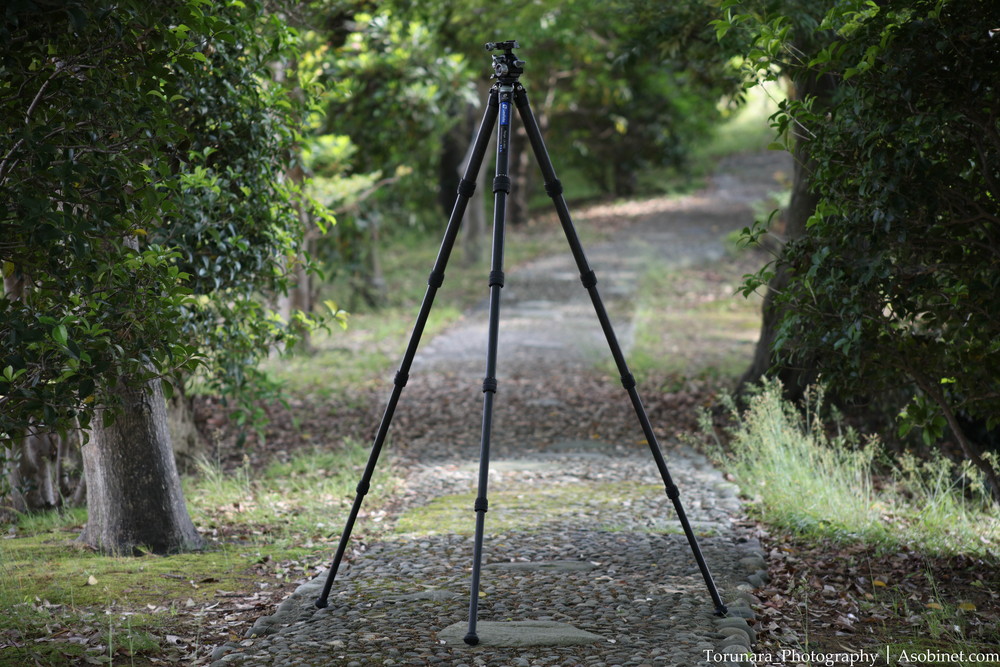
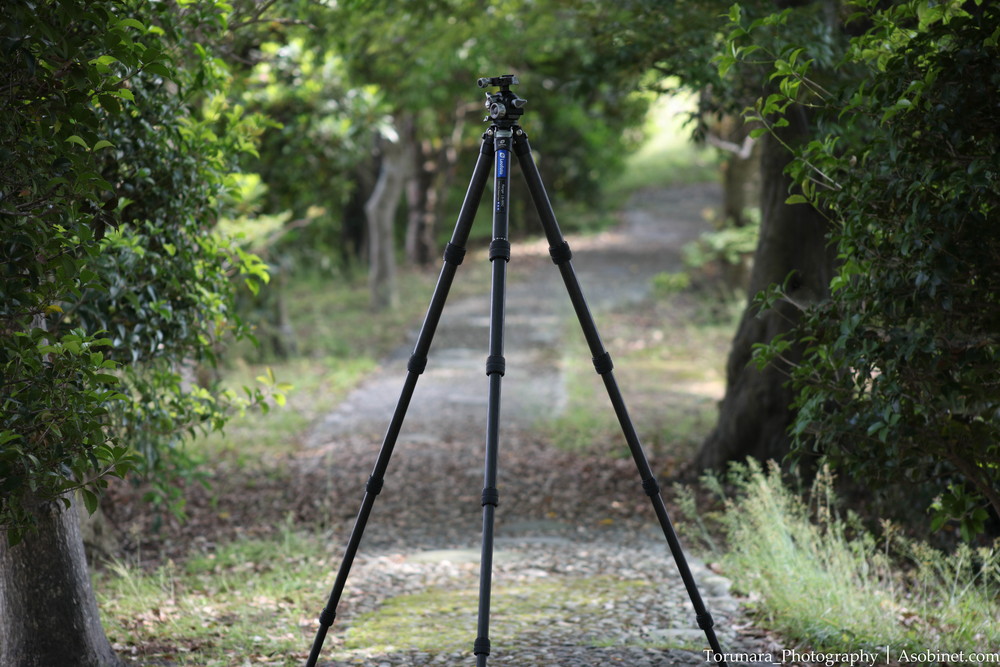
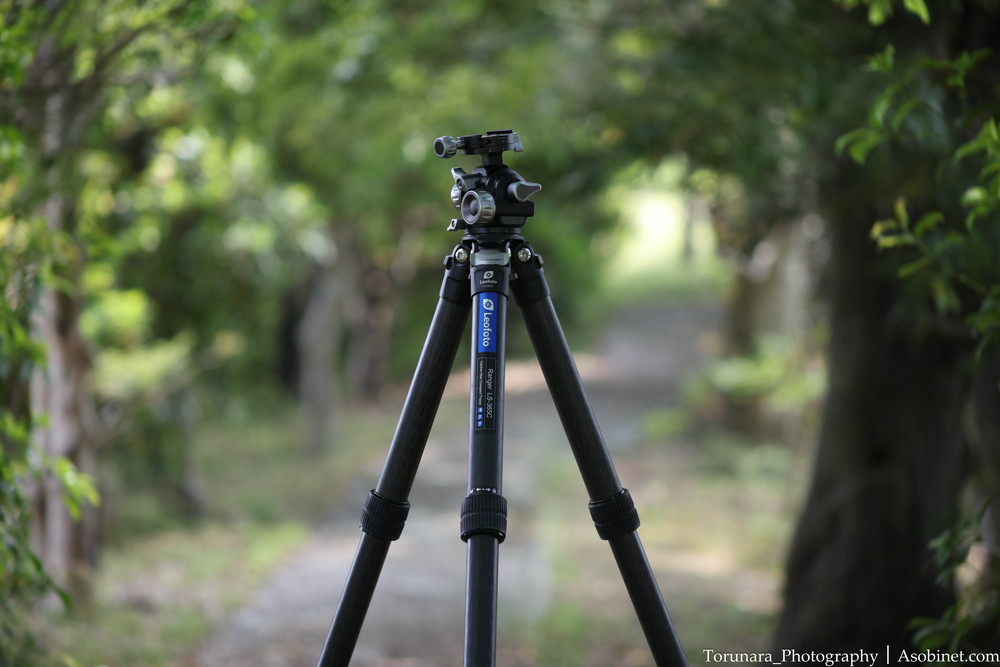
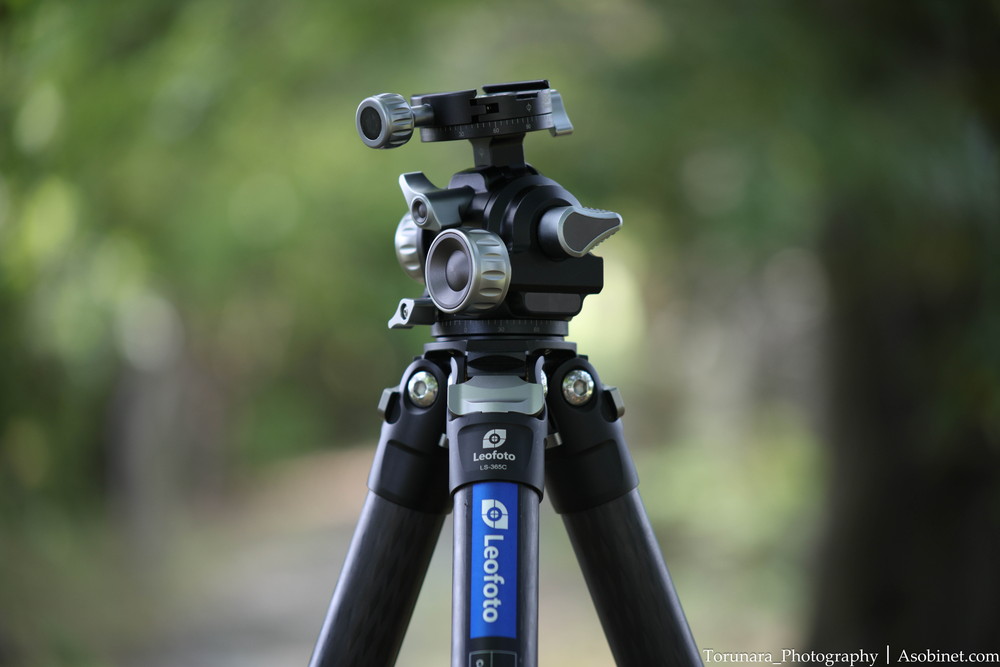
300mm
Despite the effects of axial chromatic aberration, the texture is soft and smooth.The maximum aperture is F5.6, but the results are good.In terms of bokeh texture alone, it offers good value for money.
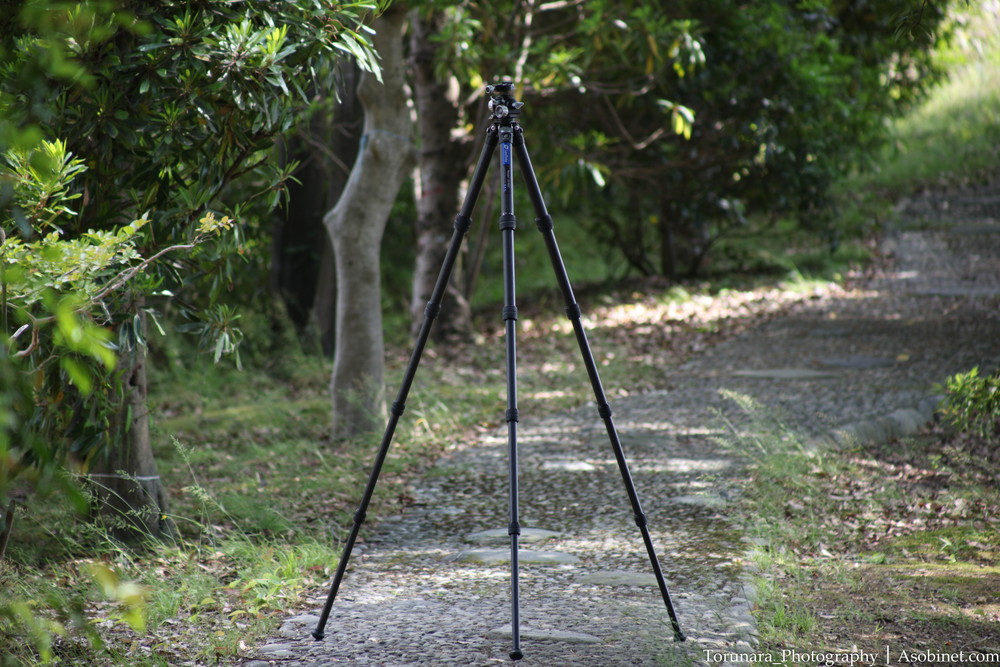
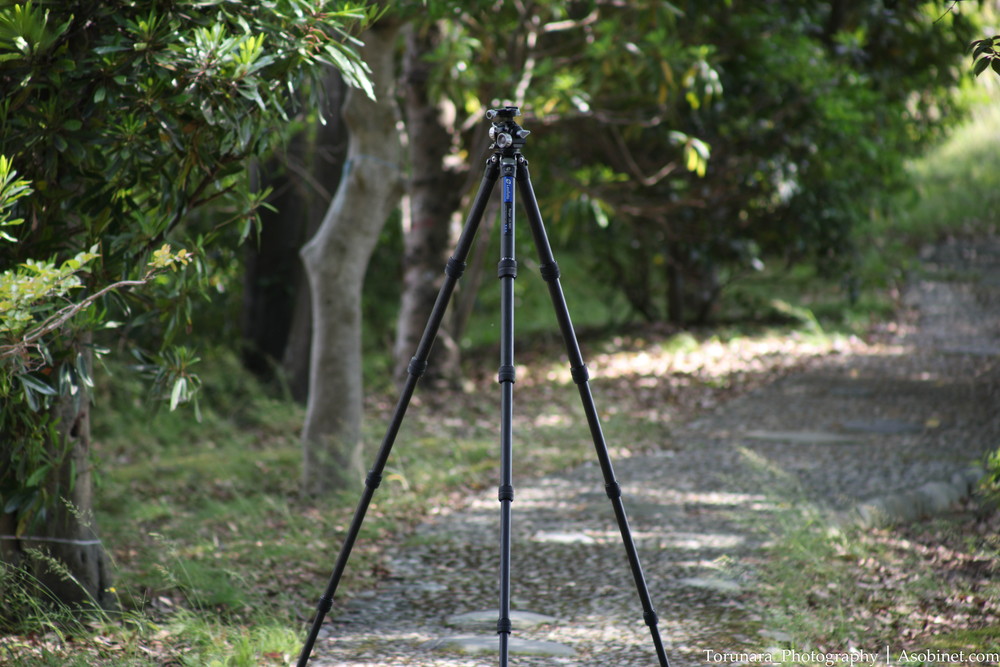
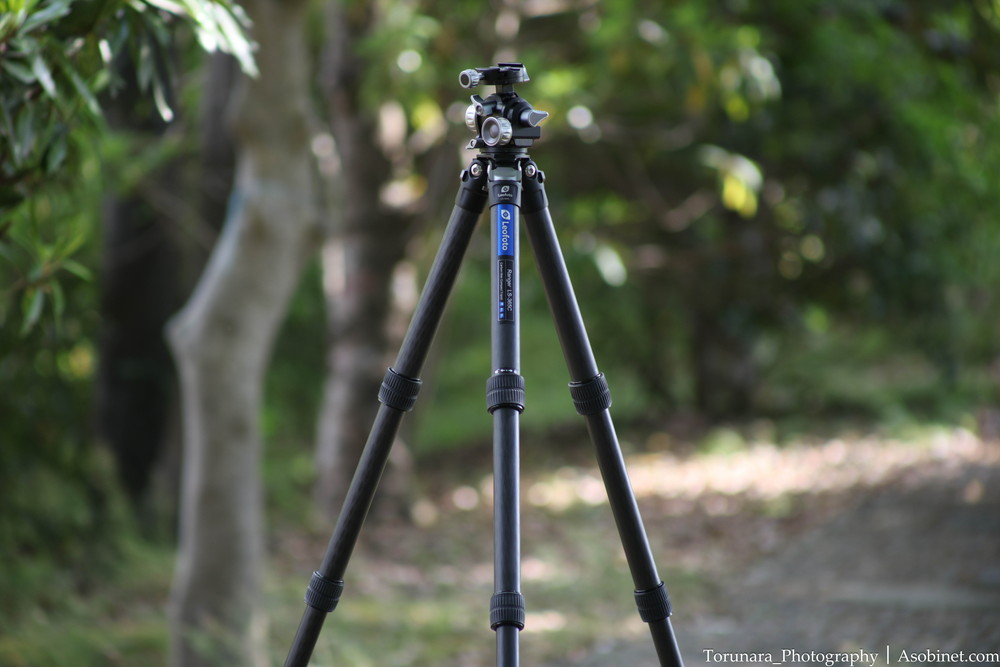
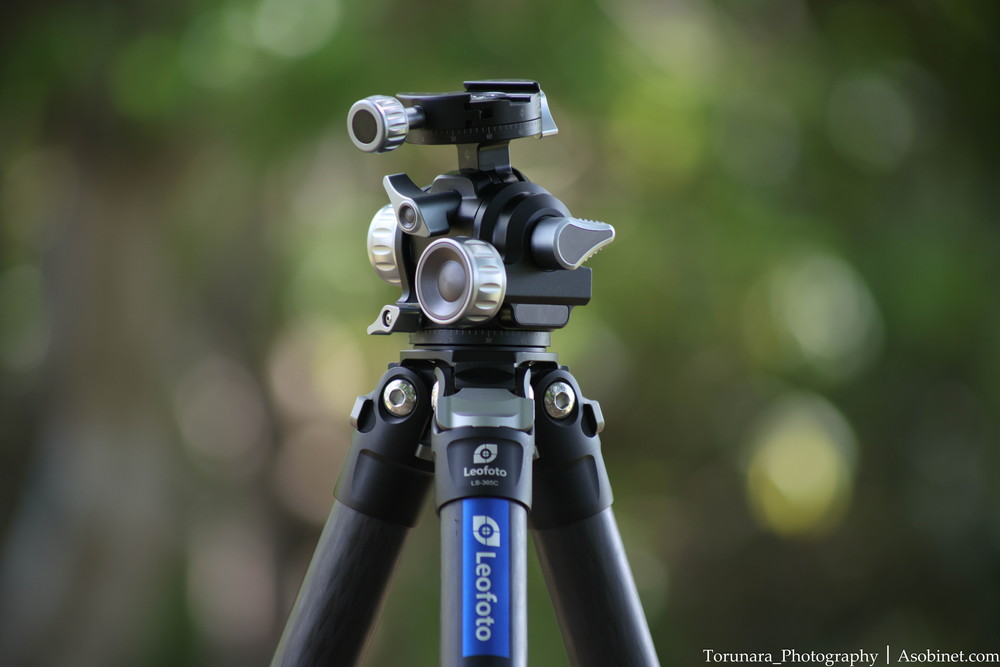
Vignetting
What is vignetting?
Unnatural drop in light intensity around the frame.
The light intensity is lower than in the central area, and there is insufficient exposure in the four corners of the frame. This mainly occurs with large-aperture lenses and wide-angle lenses.
Although this is a phenomenon that can be easily corrected using software, it is necessary to be careful about the fact that it can cause noise, as the insufficient exposure is covered by post-processing correction (sensitization). In particular, when using high sensitivity for nightscape or starry sky photography, there is a possibility that noise will appear strongly.

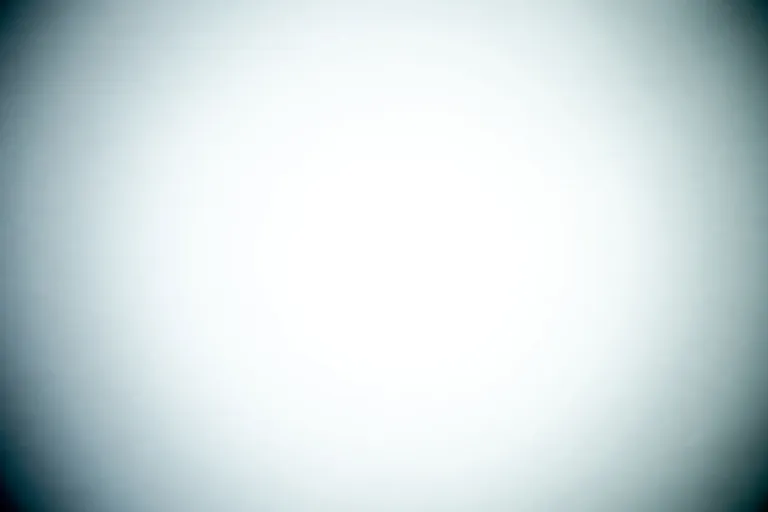
75mm
Regardless of the focus position, somewhat noticeable vignetting occurs at the maximum aperture of F4.This can be easily corrected on the camera side, but if you want to suppress it optically, stopping down to F5.6 will almost eliminate it.
Minimum focusing distance
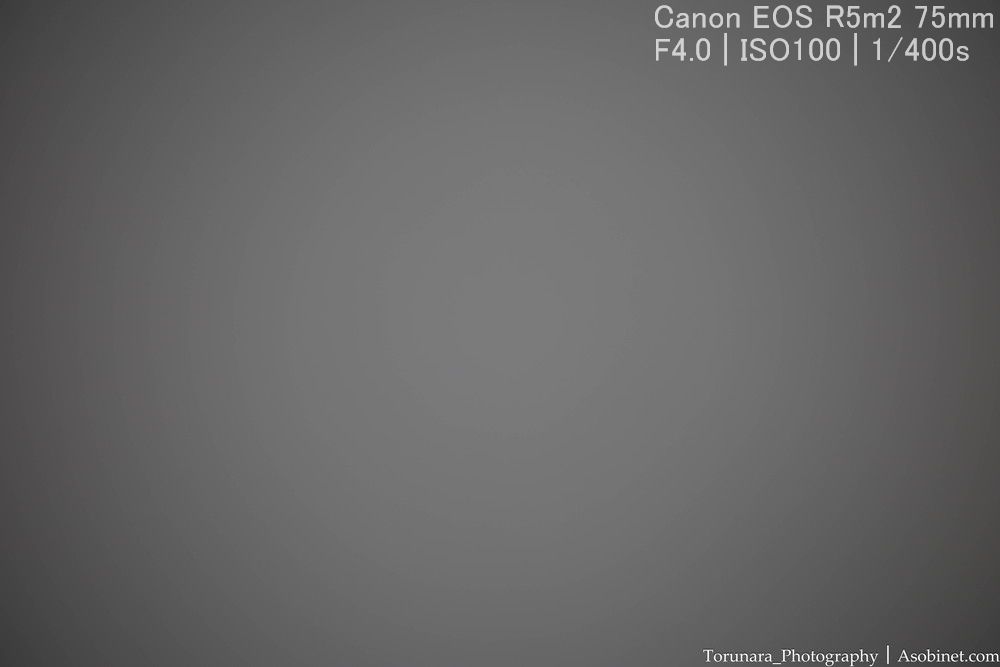
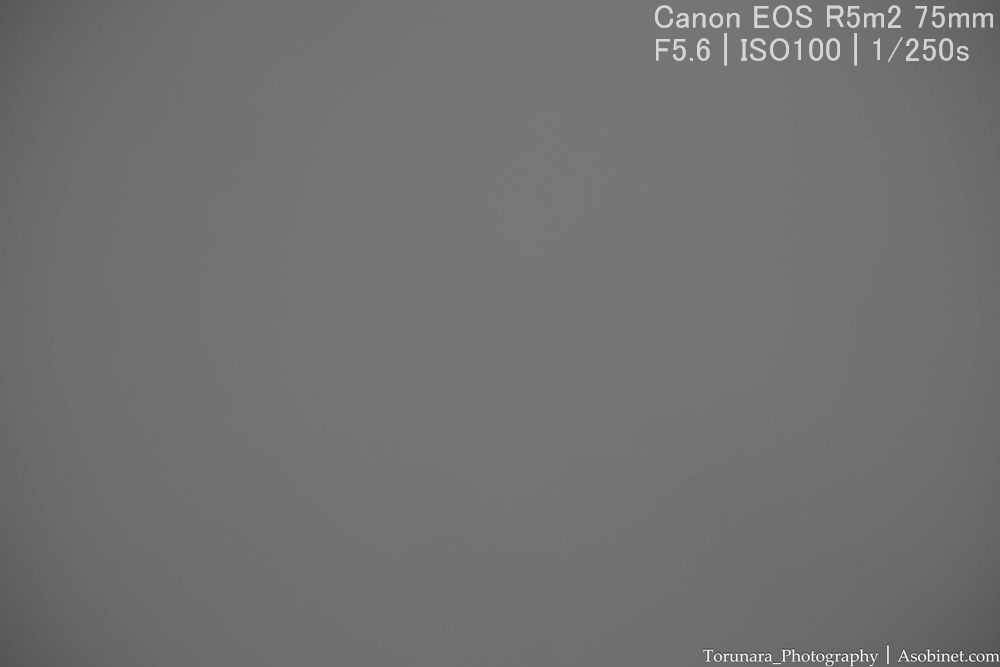
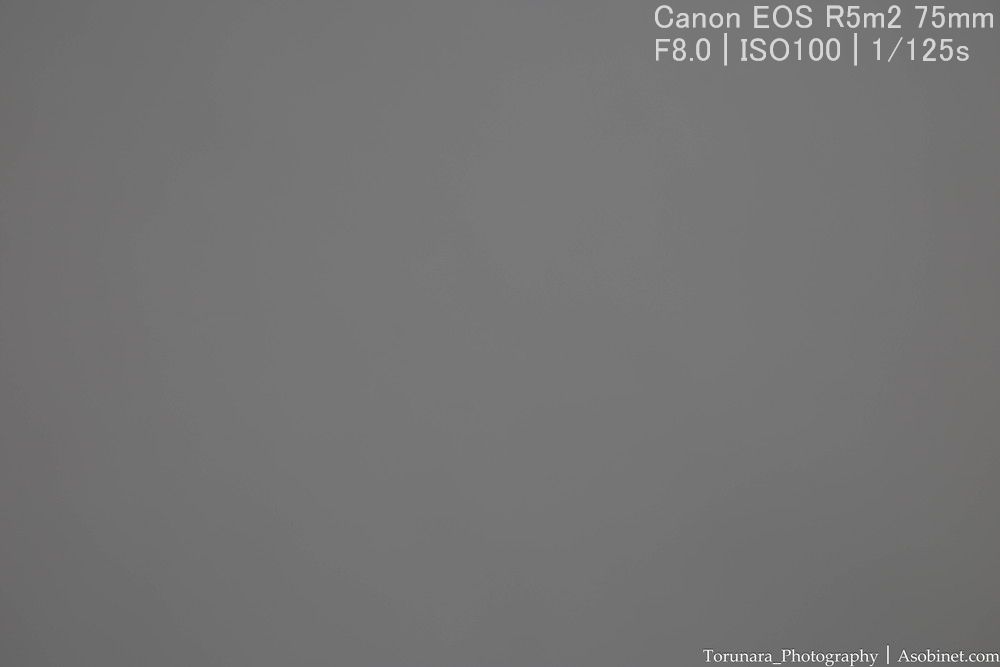
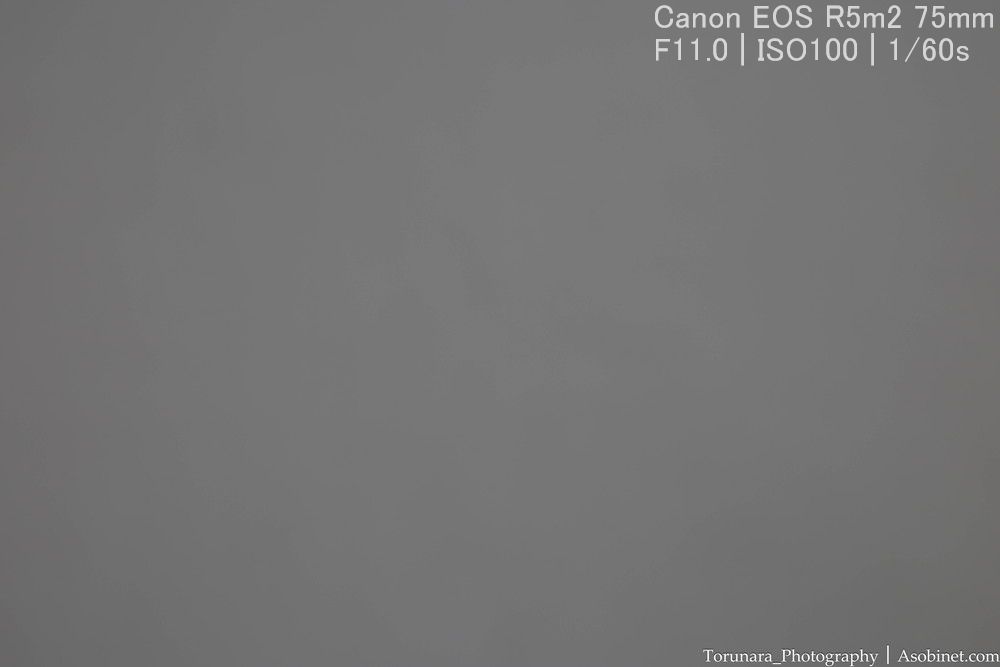
Infinity
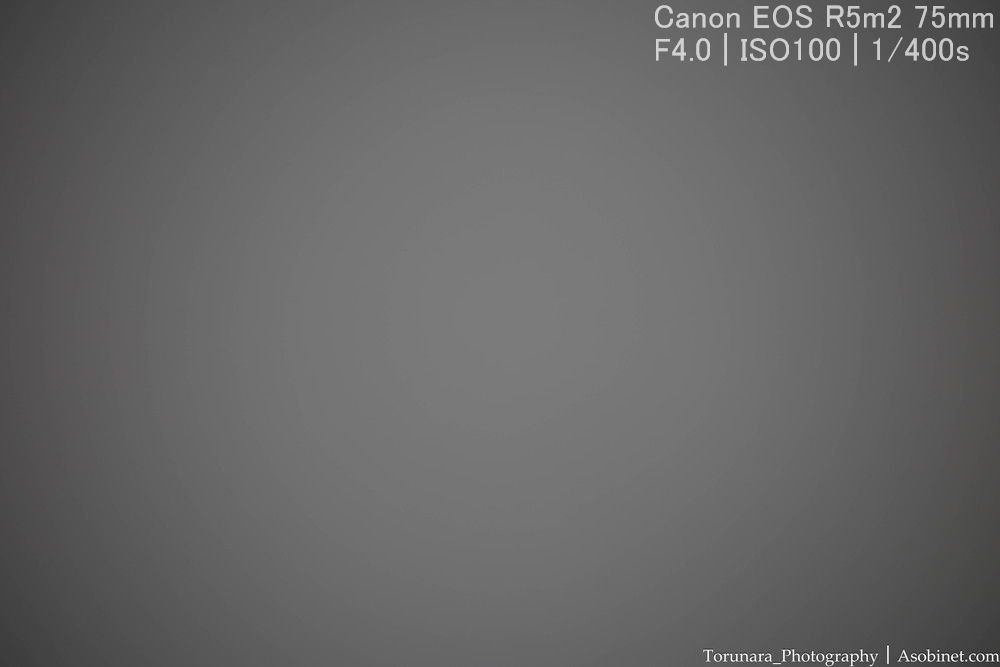
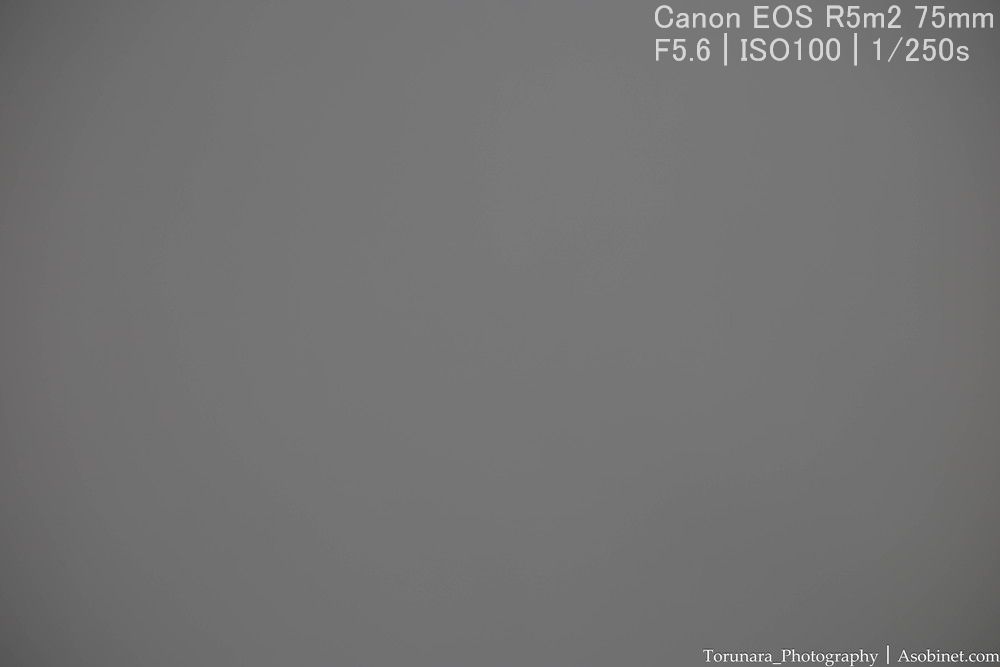
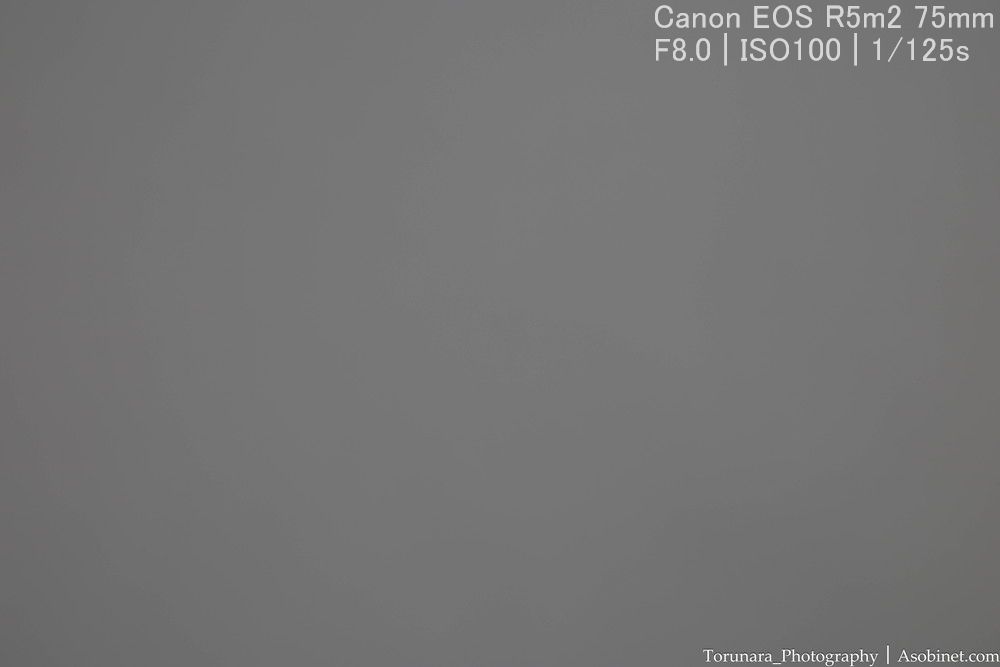
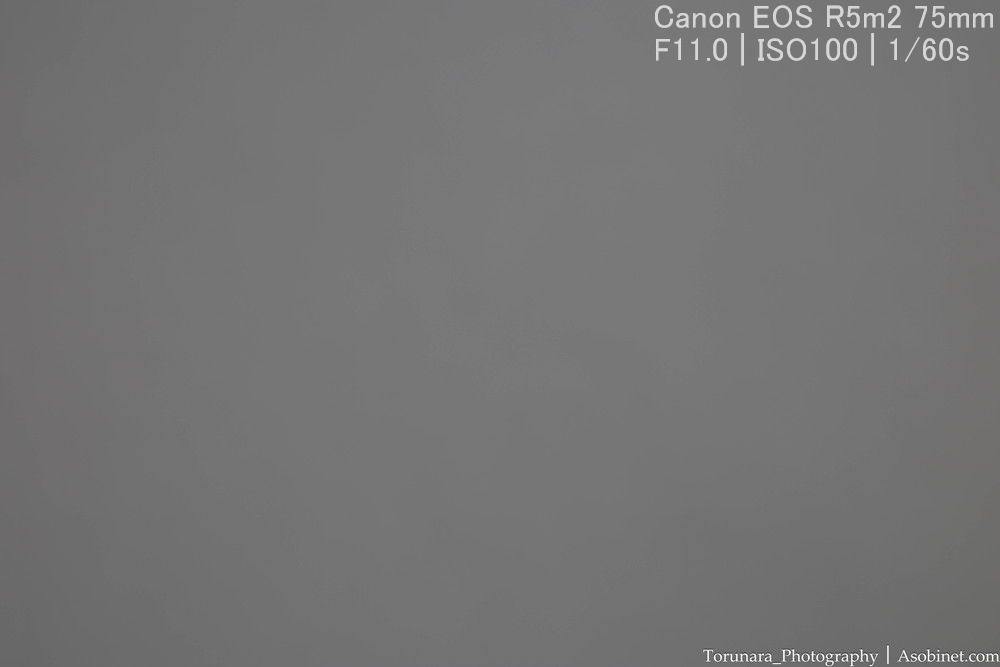
300mm
The maximum aperture is about the same as at the wide-angle side.However, even when stopped down one stop, there is still some noticeable light attenuation.If you want to suppress it completely, you need to stop down to 2 stops.
Minimum focusing distance
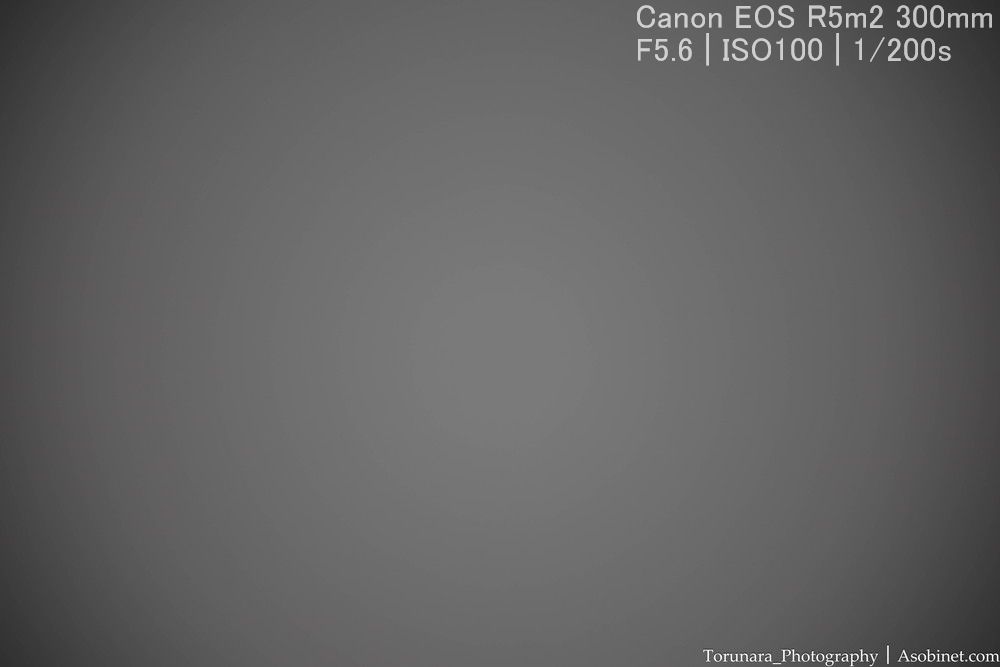
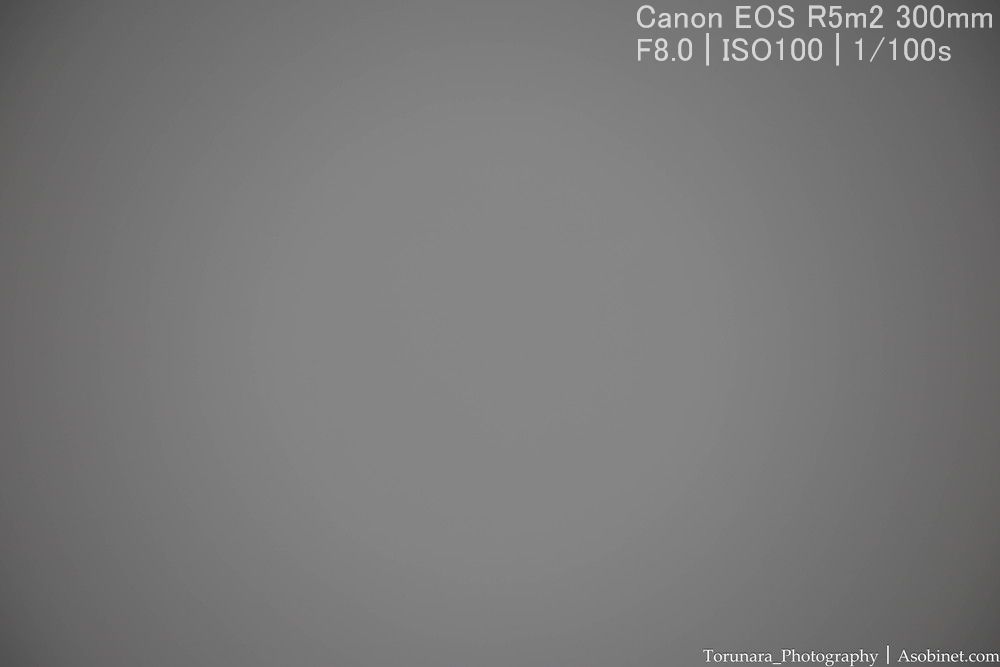
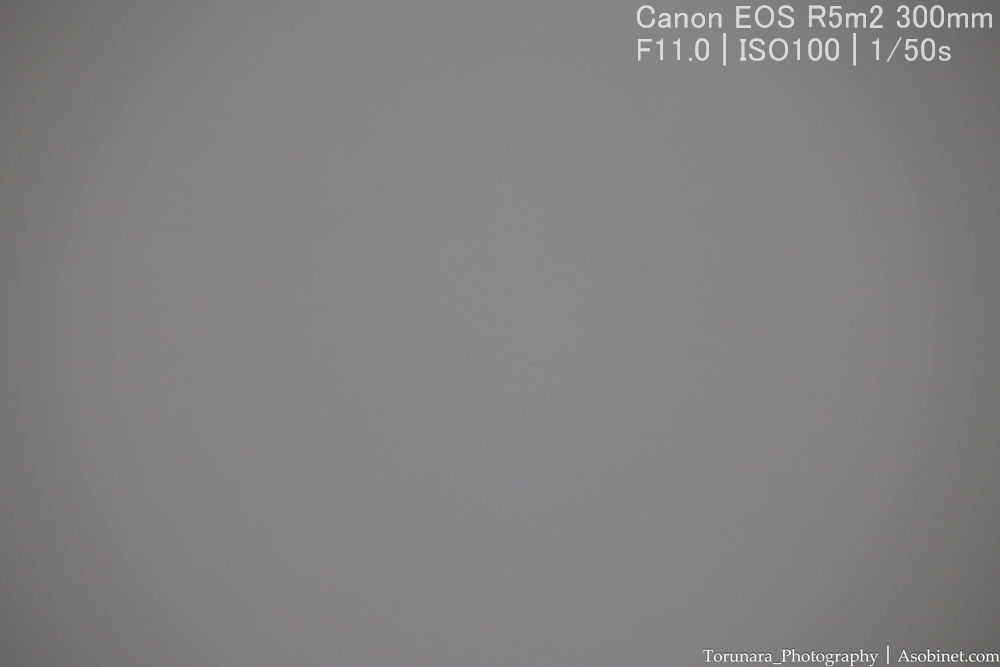
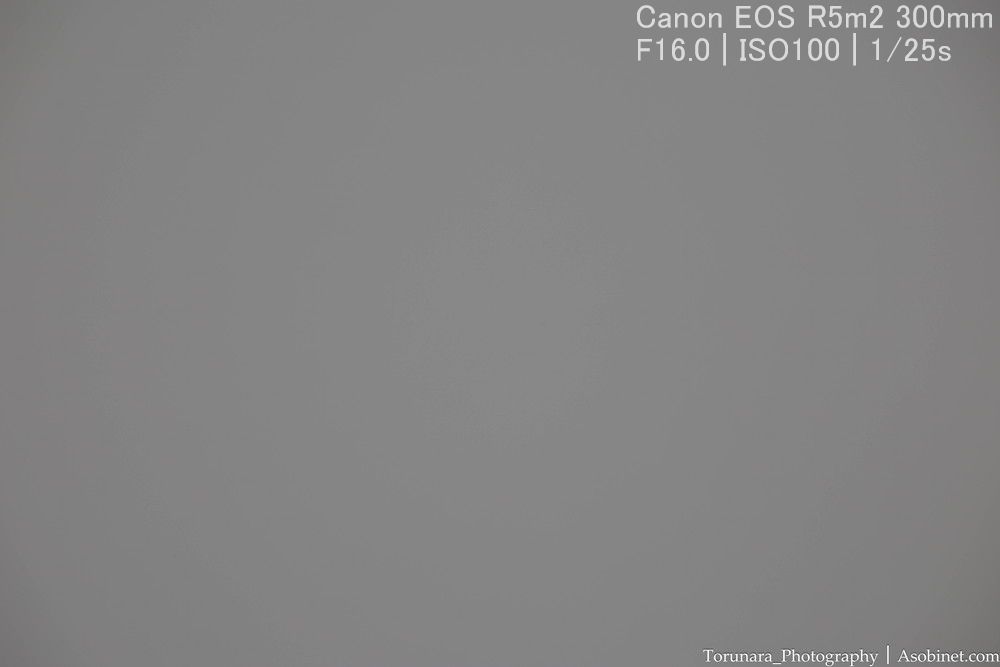
Infinity
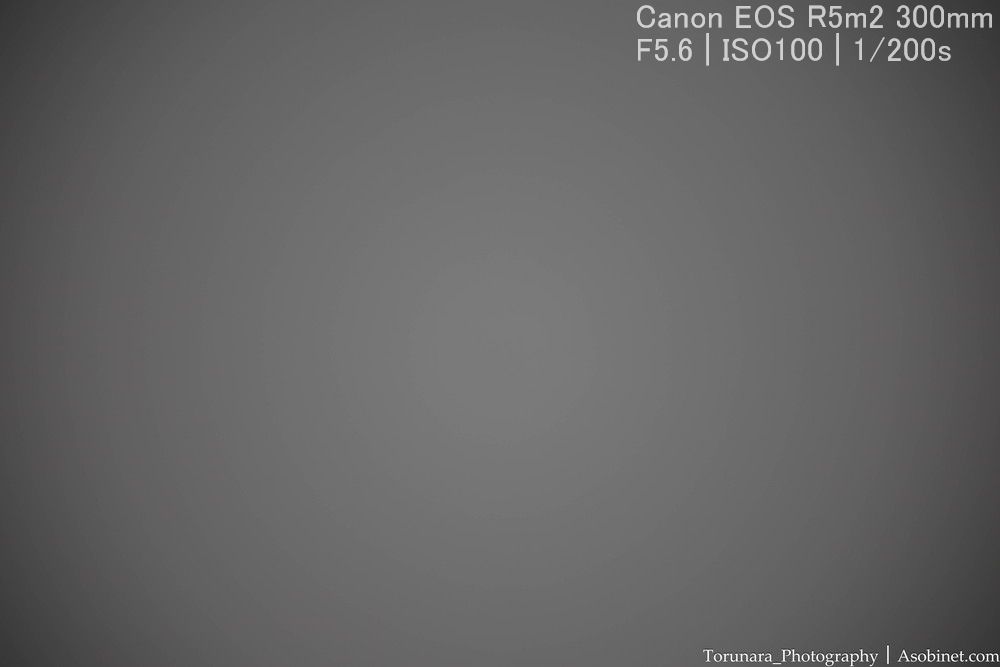

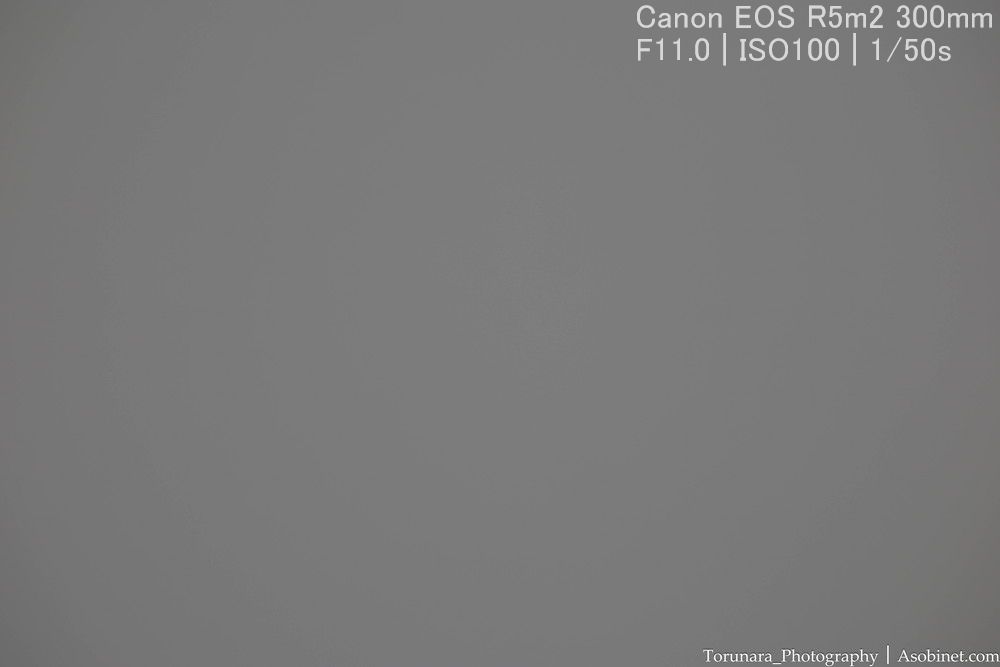
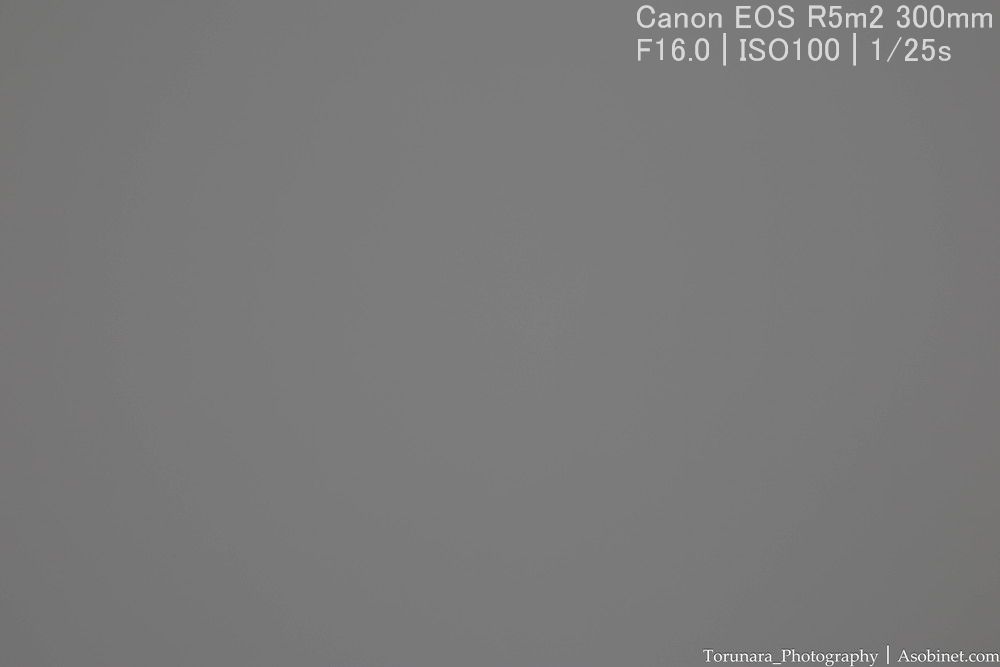
Backlight resistance, sunstar
75mm
Although not specified on the domestic product page, the lens is coated with Super Spectra Coating (see overseas official).The coating is similar to other inexpensive RF lenses.
In our customary tests, flare and ghosting seem to be particularly noticeable among inexpensive RF lenses.Flare is noticeable near the light source, and there are several ghosts that appear to be interlens surface reflections.Contrast improves as the lens is stopped down, but the ghosting worsens.
The RF100-400mm F5.6-8 IS USM is far better in this respect.
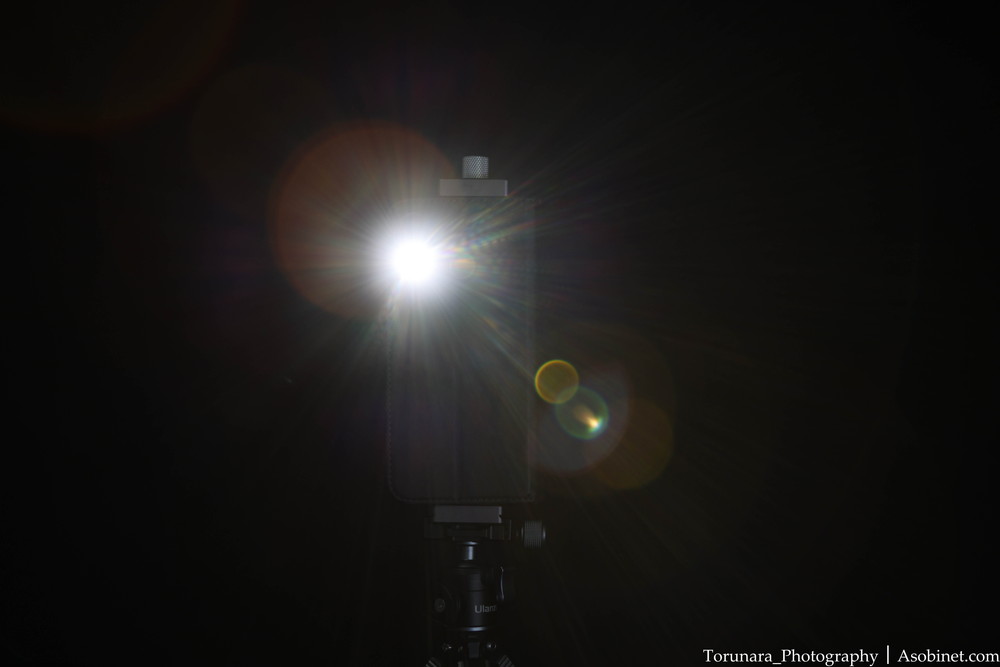
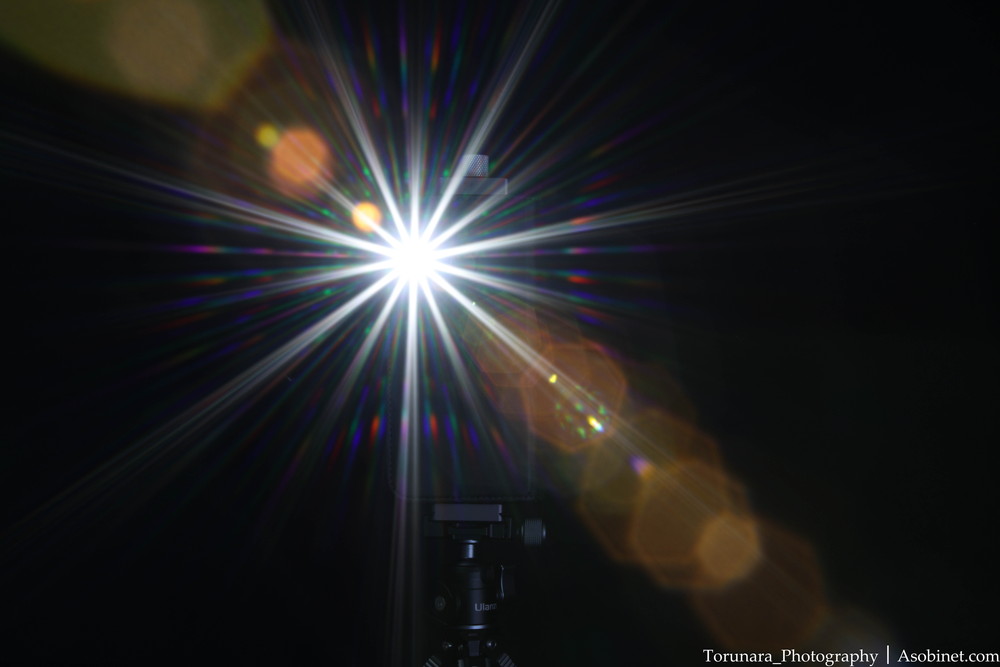
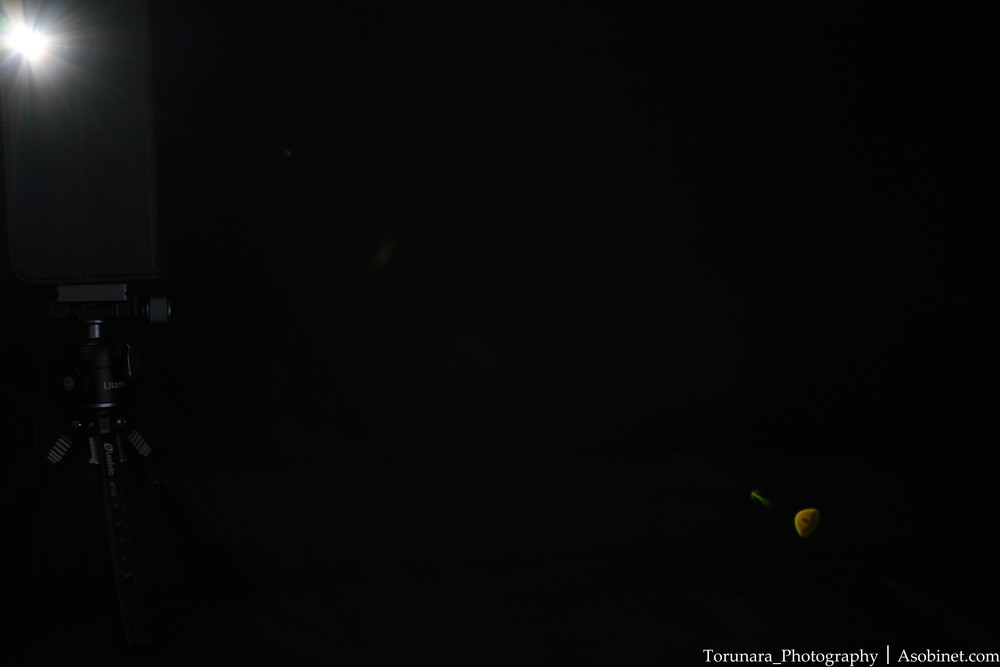
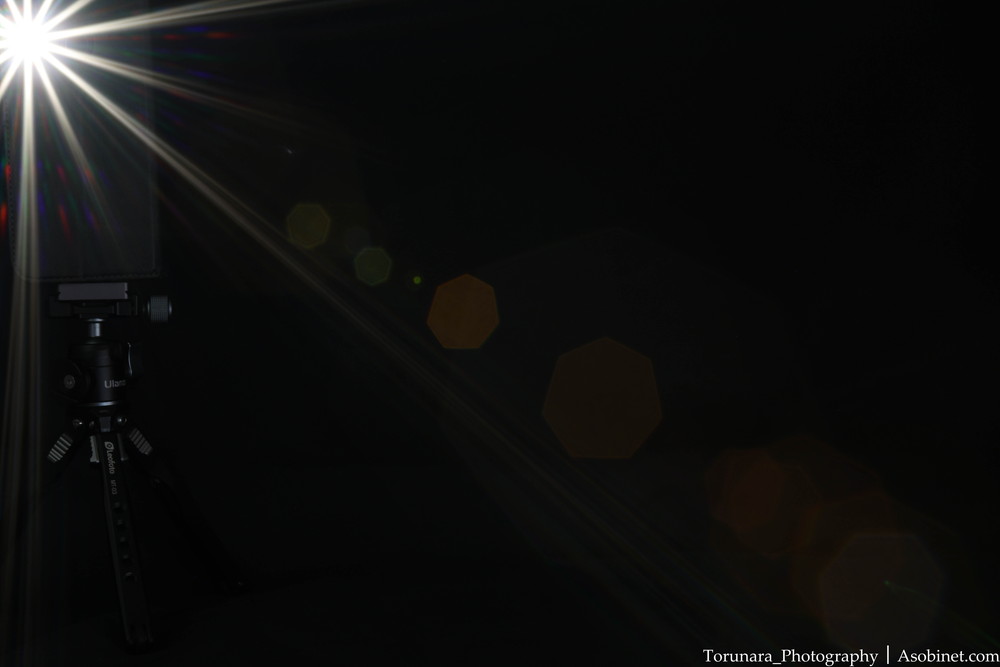
300mm
Flare and ghosting are very noticeable even at the telephoto end.There may be few opportunities to frame a strong light source with a telephoto zoom, but if you are using a backlit scene or flash, you will need to be careful with your aperture and standing position.
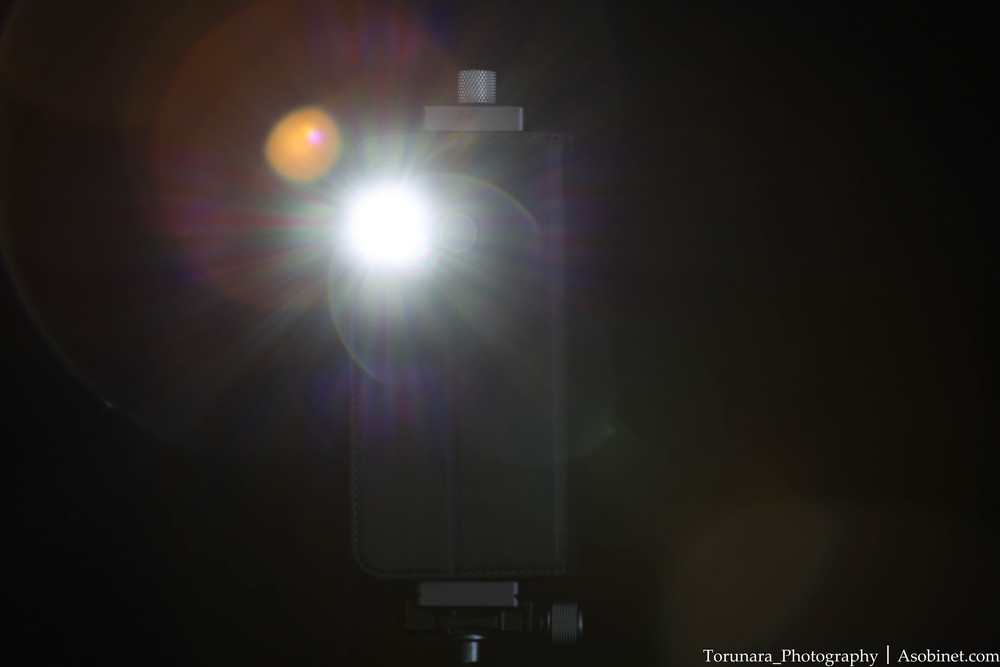
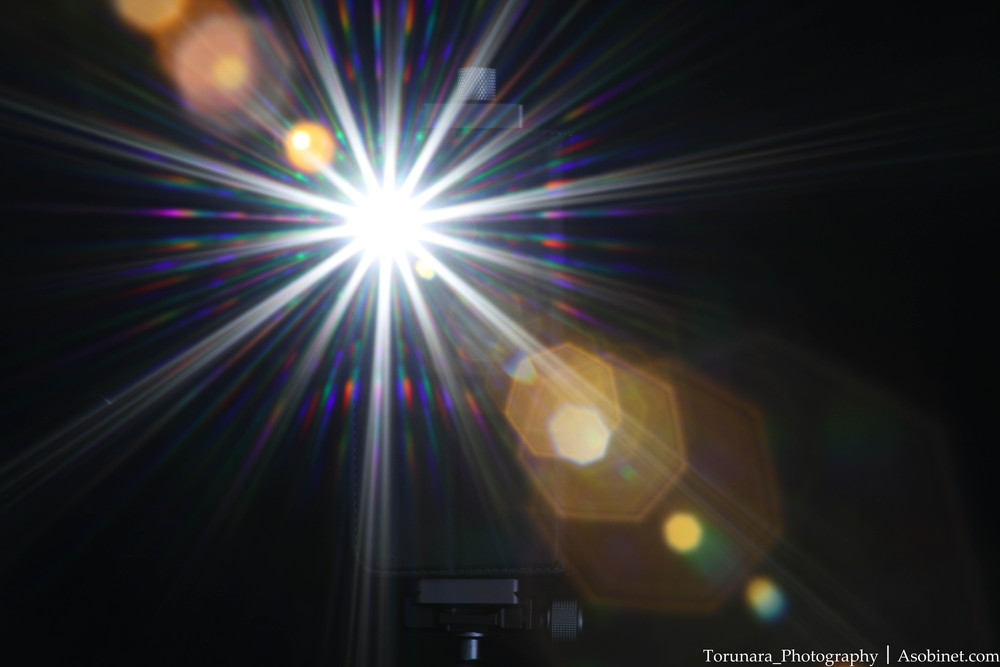
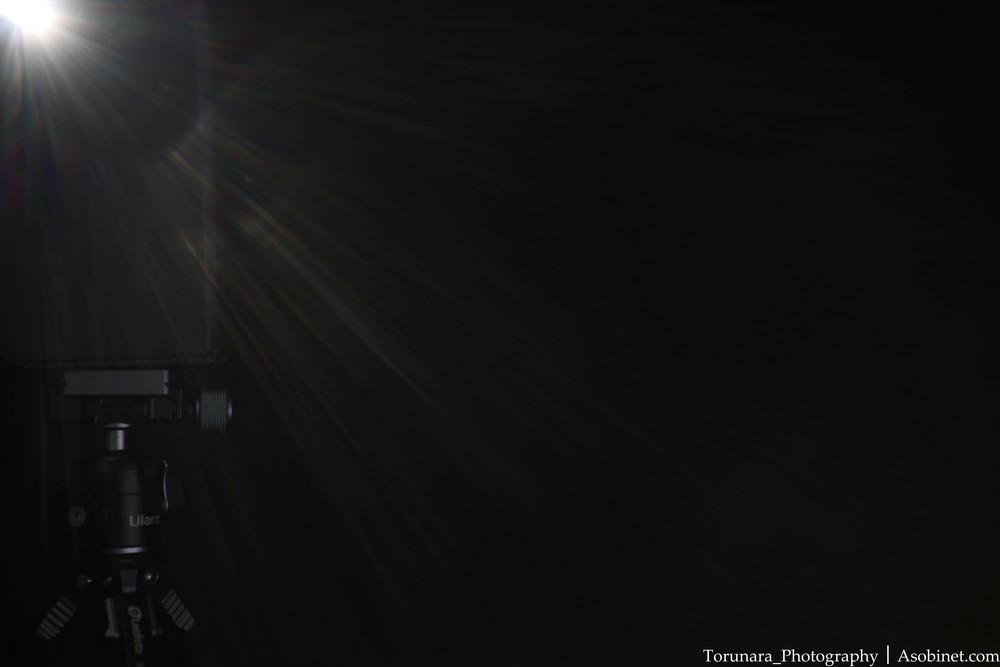
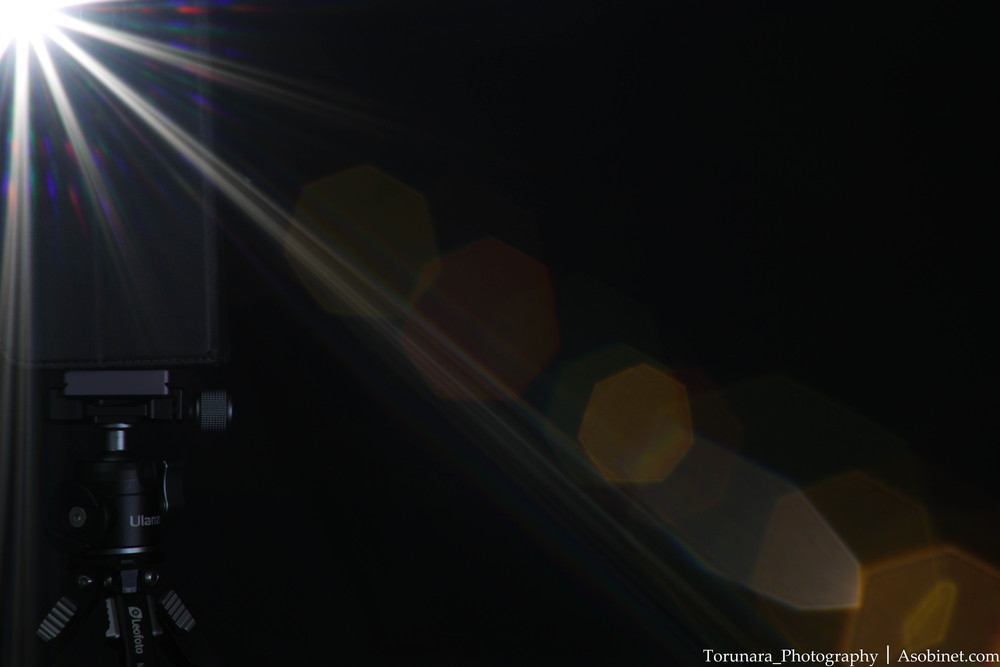
Sunstar
At small apertures, the light strips are sharp and clean, as is typical of Canon.However, since the aperture in this case is f/22, f/32, or f/40, the effect of diffraction is very strong.It is difficult to balance this with resolution performance.
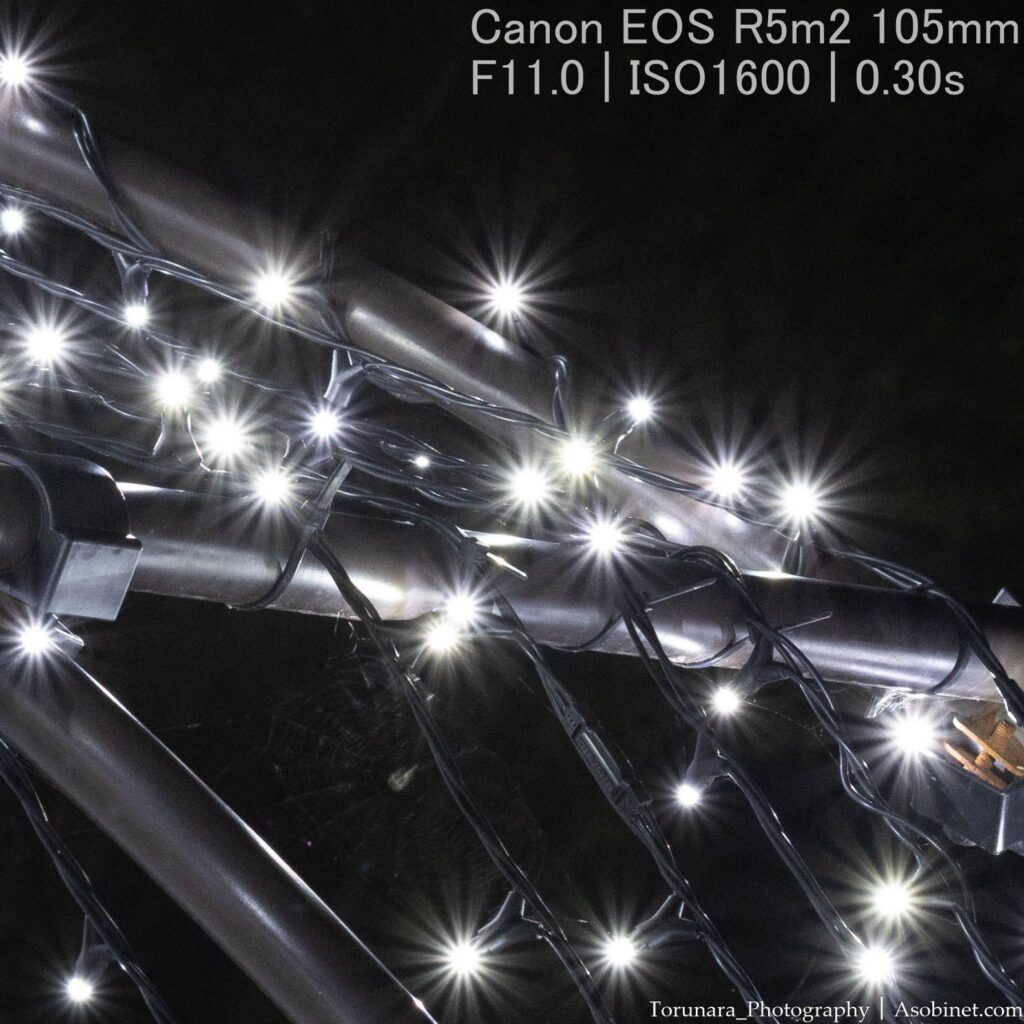
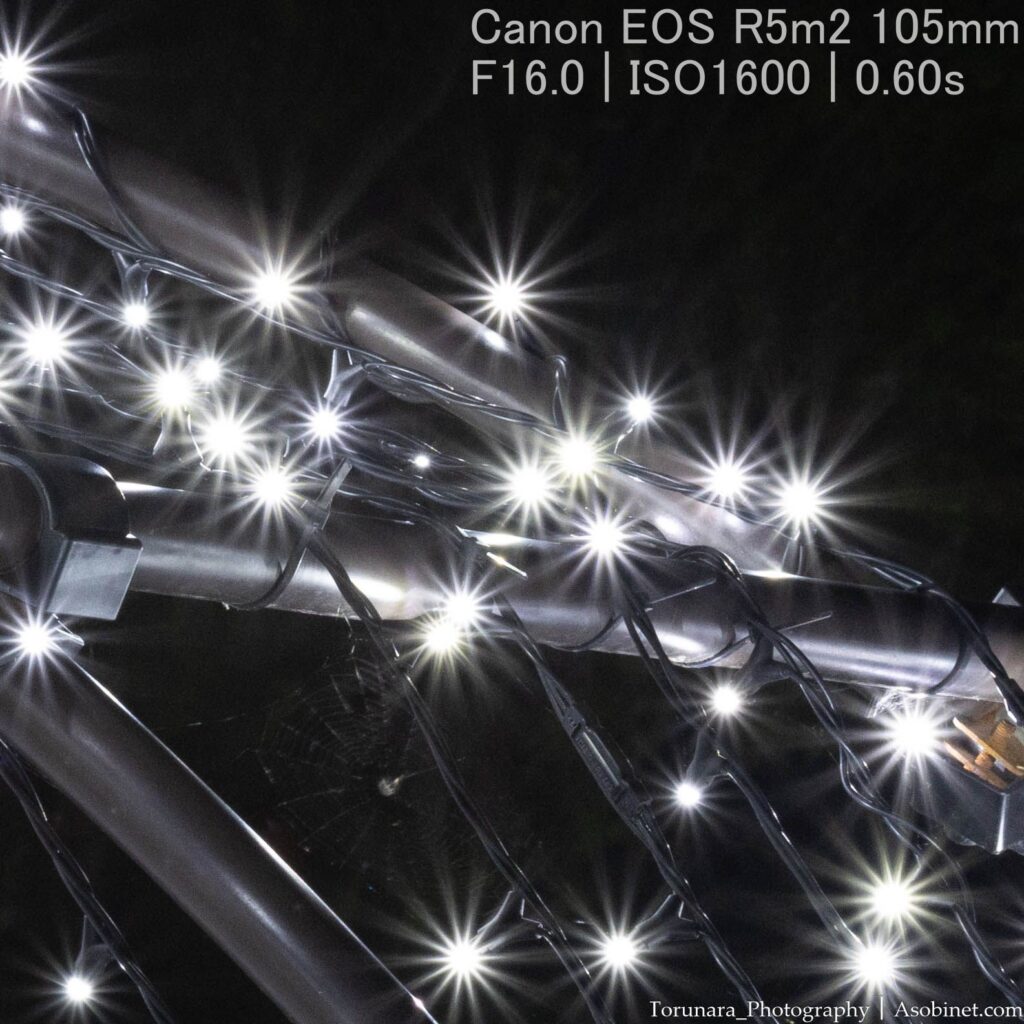
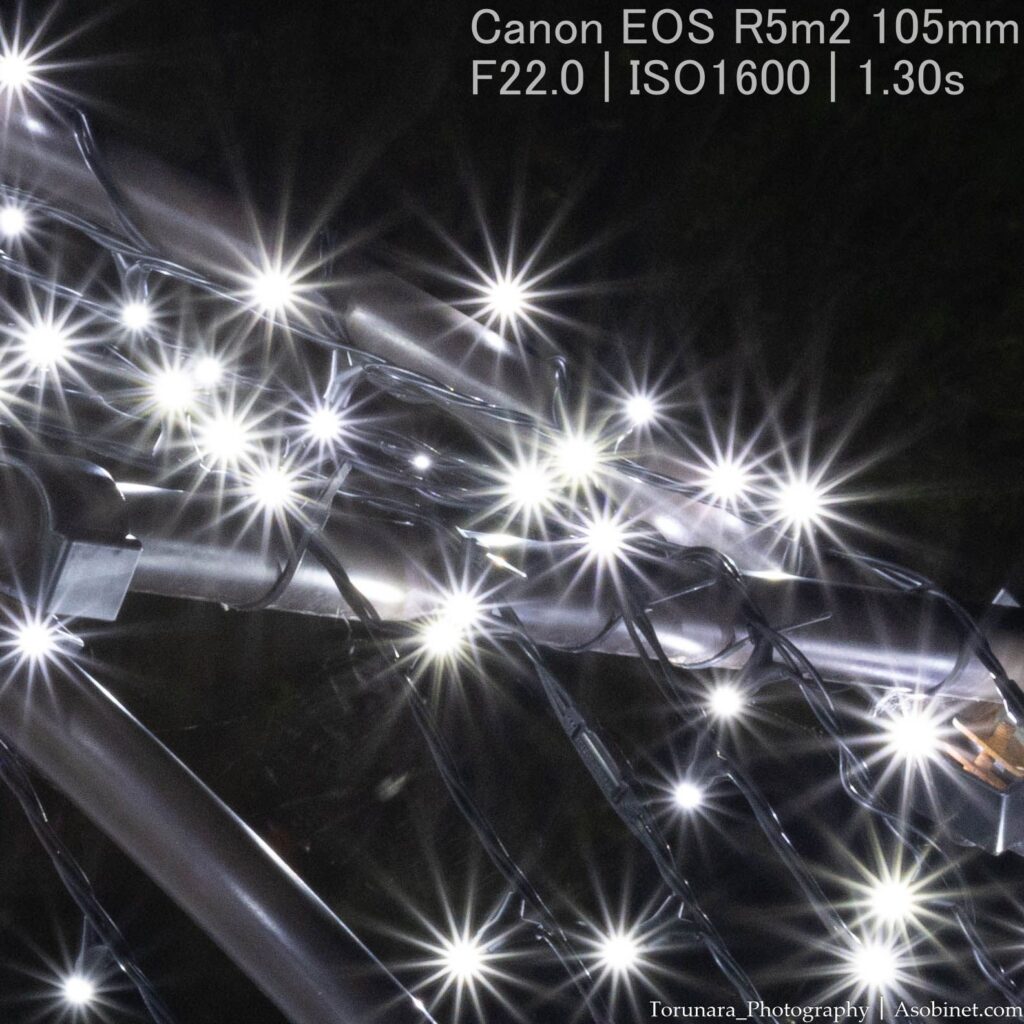
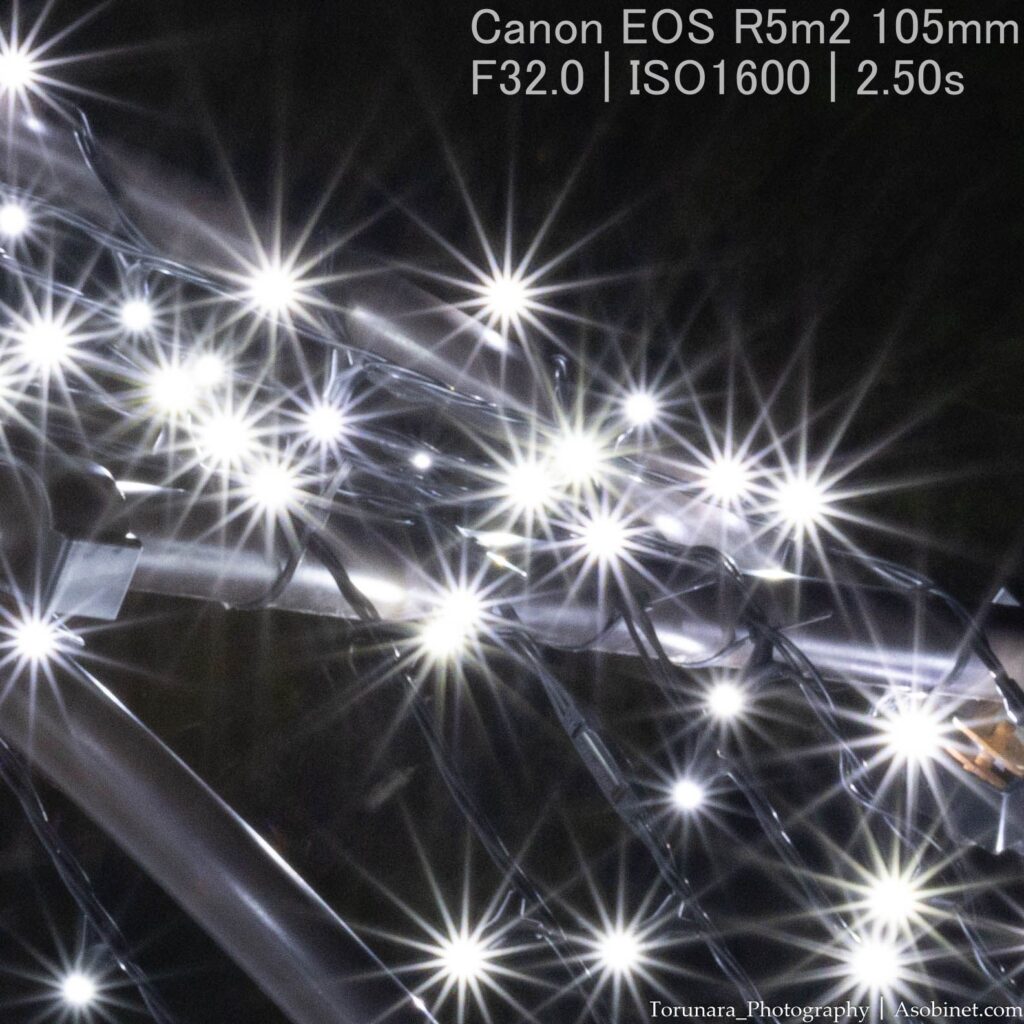
Summary

Good points
- Surprisingly inexpensive
- Lightweight for a 300mm zoom
- Smooth back bokeh
- Smooth ball bokeh
- Beautiful light stripes when stopped down
- Reasonably high magnification at 300mm
This is the least expensive telephoto zoom lens option for full-size mirrorless cameras, including other companies.Where genuine 70-300mm lenses from camera manufacturers cost 100,000 yen or more (Sony, Panasonic), Canon has released a very inexpensive lens at 30,000 yen.Considering that even Tamron's price is in the 50,000 yen range, 30,000 yen is a steal.Of course, there are many compromises (see below), but the strength of the Canon RF system is that it offers a range of inexpensive 300mm options.
Also, for a telephoto zoom lens that easily creates bokeh, the rear bokeh is smooth and easy to use.The close-up performance at the telephoto end is good, and it is cost-effective for close-ups of small subjects to obtain large bokeh.


Bad points
- Lens hood sold separately
- No image stabilization
- Dustproof and drip-proof
- DC motor drive
- Retractable focus
- Full-time manual operation not supported
- Telephoto side resolution performance
- Noticeable lateral chromatic aberration except at 75mm
- Noticeable axial chromatic aberration
- Noticeable string distortion
- Noticeable aperture eclipse (affects bokeh and light reduction in the corners)
- Flare and ghosting are noticeable.
Basically, everything is a compromise except for the “overwhelmingly low price”.
The camera has an antiquated AF, no optical image stabilization, and an optical design that is more than 20 years old….Although these are all compromises because of the low price, I do not feel comfortable recommending this camera to others.
While optical performance can be compromised for the price, AF and image stabilization need to be checked.
Reasonably priced mirrorless cameras such as the EOS RP and R8 do not have body image stabilization and require sufficient shutter speed to shoot at 300mm.While this is not a problem when shooting moving subjects, the ISO sensitivity tends to increase when shooting landscapes, making it difficult to take advantage of the full-size image quality.
In addition, the DC motor's retractable focus is critical when shooting moving subjects.This may not be a problem when shooting distant subjects such as trains or airplanes, but when shooting relatively close subjects such as animals or children, the AF may not be able to keep up.(It won't catch up if the initial movement is in the “smooth” operation slow mode.)
Satisfaction with this lens varies greatly depending on “how” you use the 300mm.
Conclusion
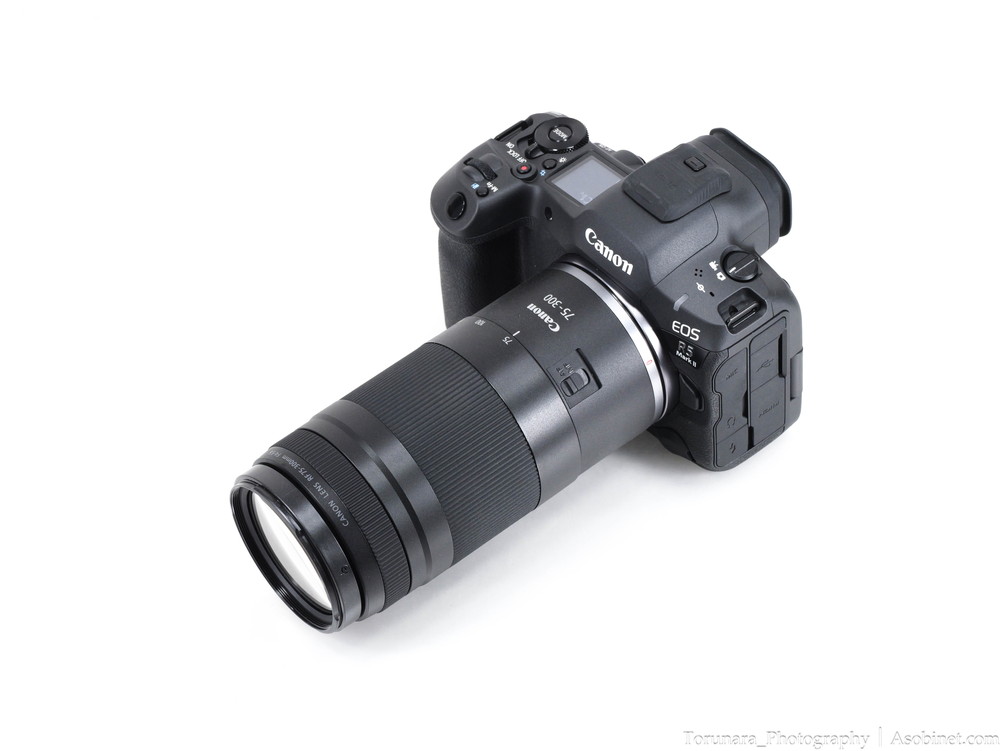
The “Entry 300mm” is an unbeatable “entry-level 300mm” in any case.
Its main advantage is that you can use a full size 300mm for 30,000 yen.The only one.
Other than that, it is a compromise.
I dare say that the points to note are not optical performance but autofocus and image stabilization.Optical performance can be augmented to some extent by camera-side processing and development software.However, there is nothing that can be done about image stabilization and autofocus.
- Image quality degradation due to high ISO sensitivity is not a concern.
- The frame shakes during shooting and composition is not stable
- I can laugh and forgive if it is hard to focus on a moving object.
If you can tolerate this, I think this is a zoom lens that you can go out with.
For those who want to experience 300mm at an affordable price.
Welcome to the world of 300mm.
Lens Buying Guide
Creating in-depth reviews like this requires time and resources.If you found this article useful and decided to buy a lens, please consider using the affiliate link. This will help us to create more content in the future.
Example
The original data is available on Flickr.
